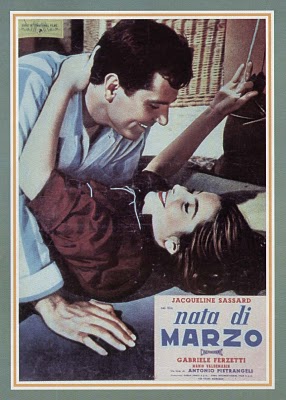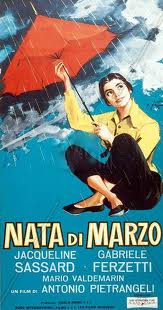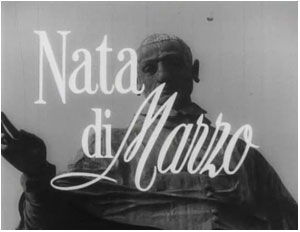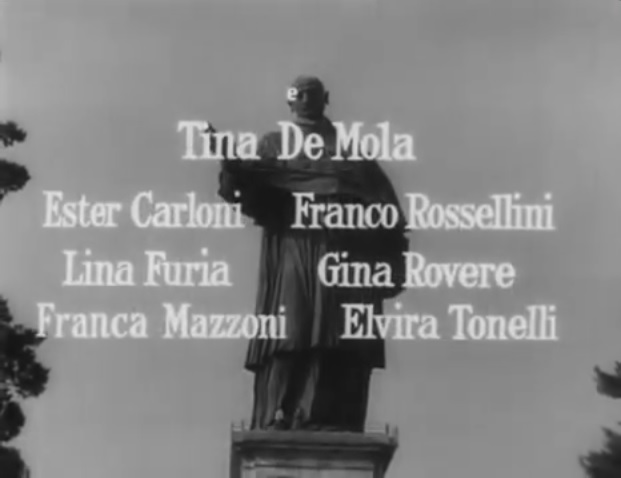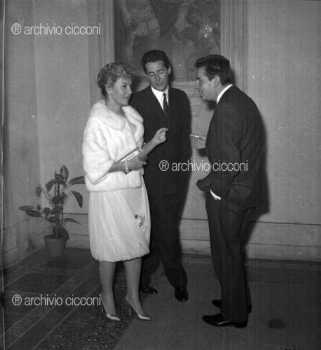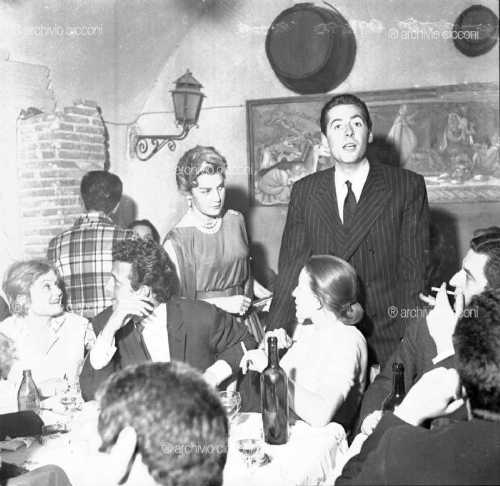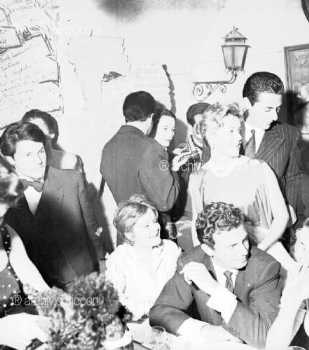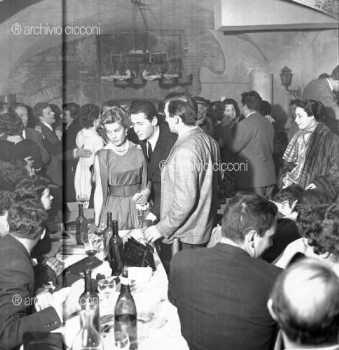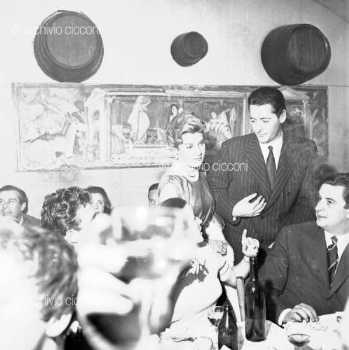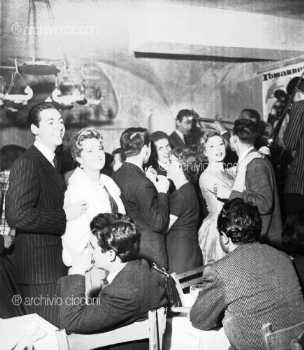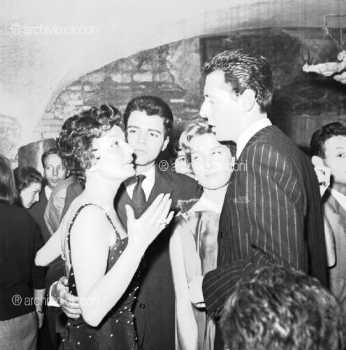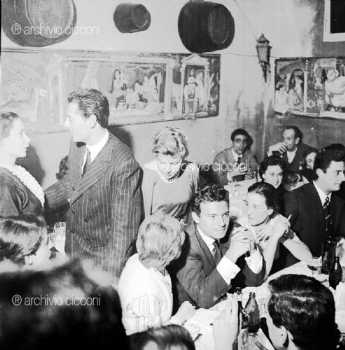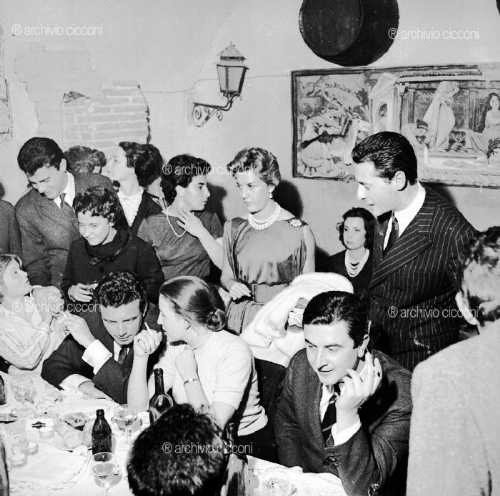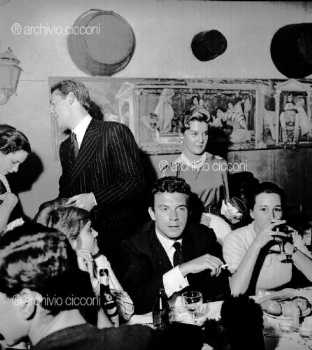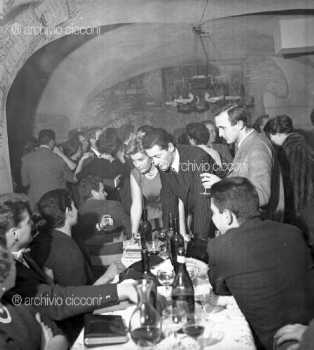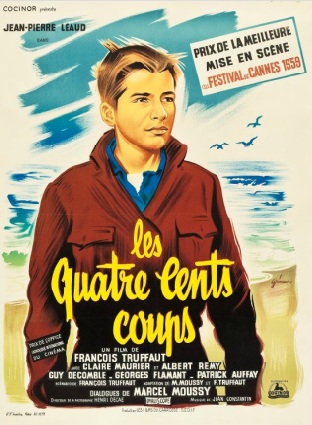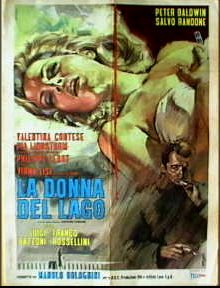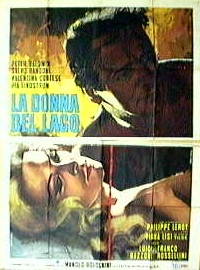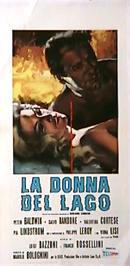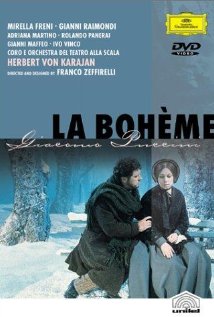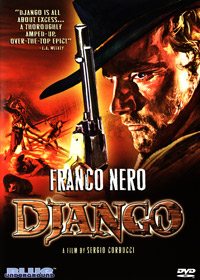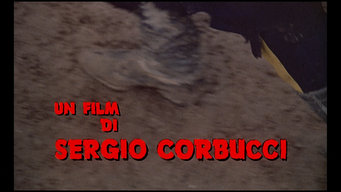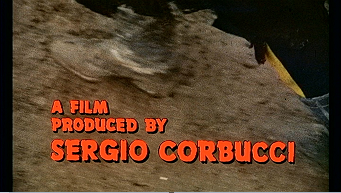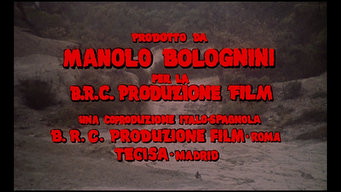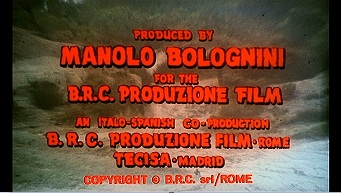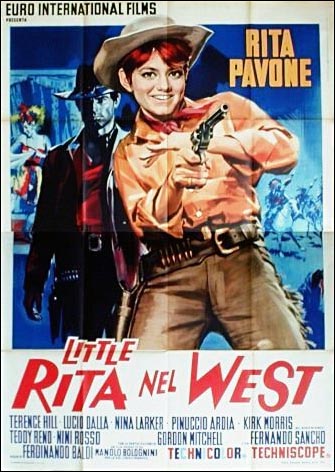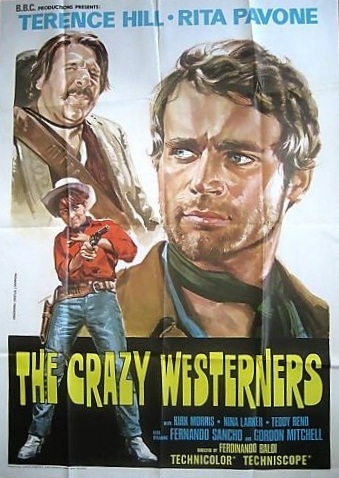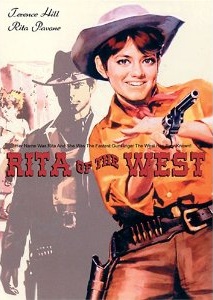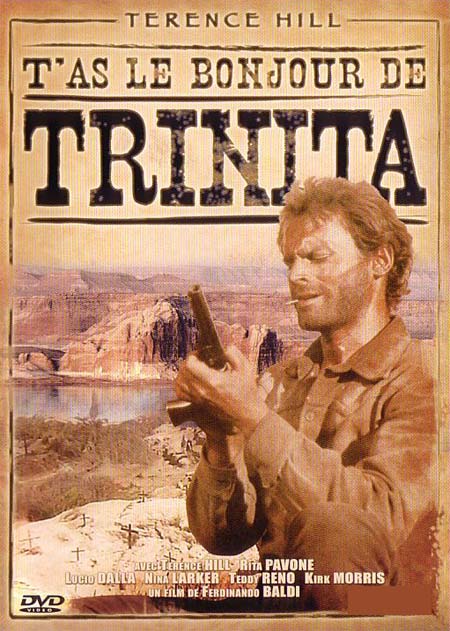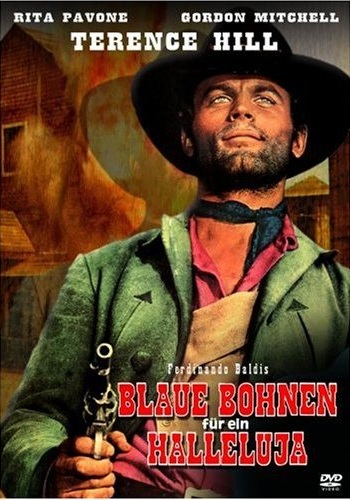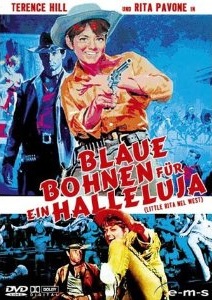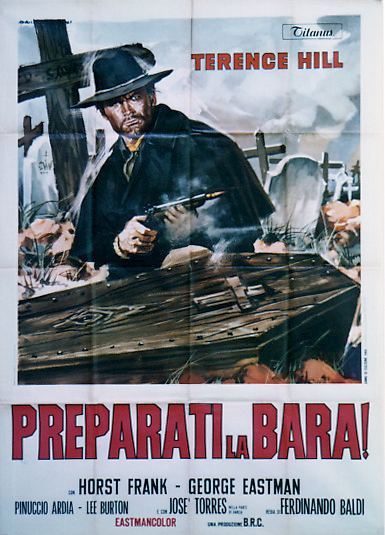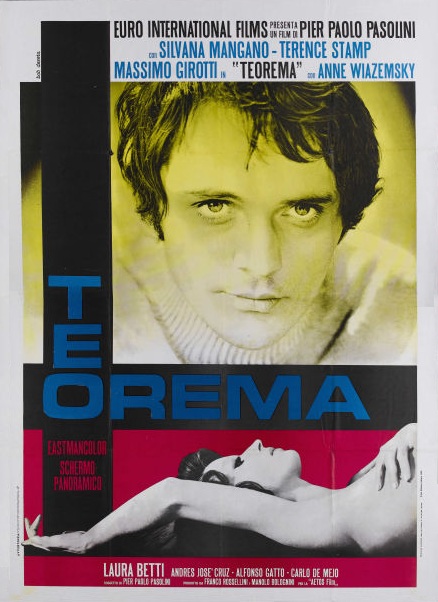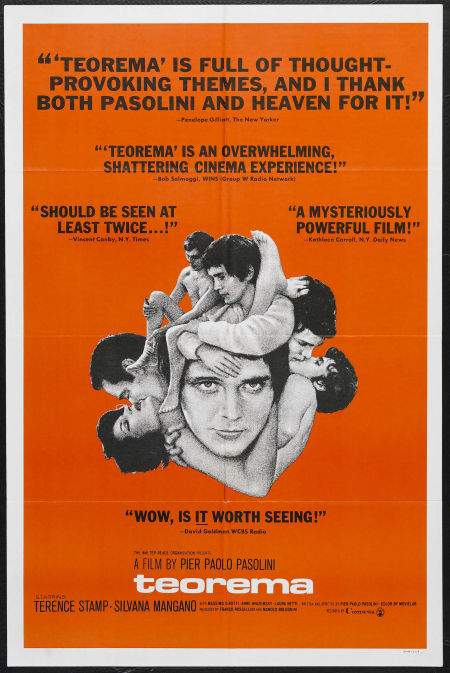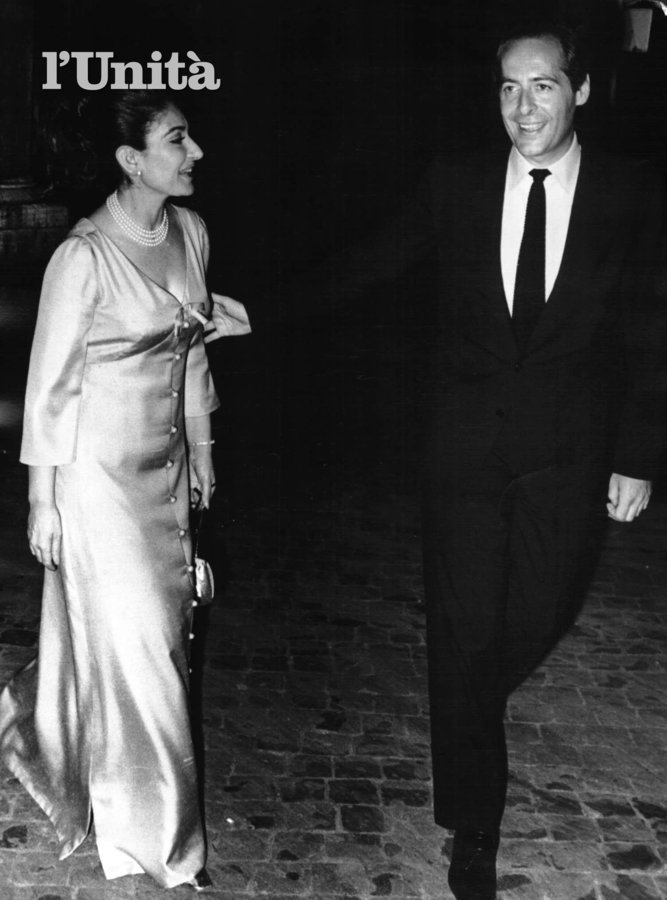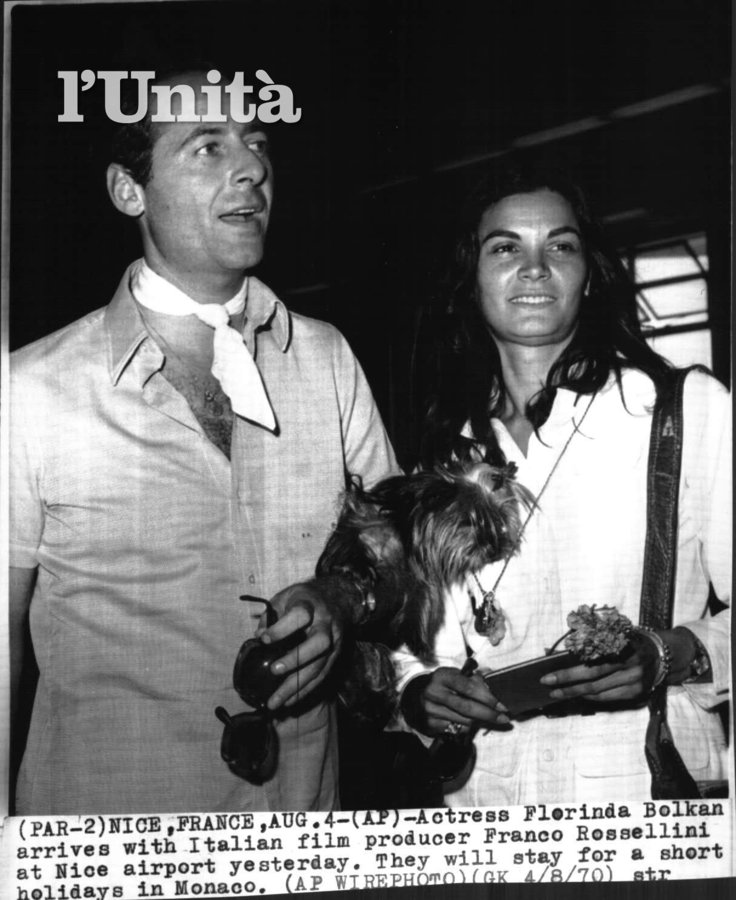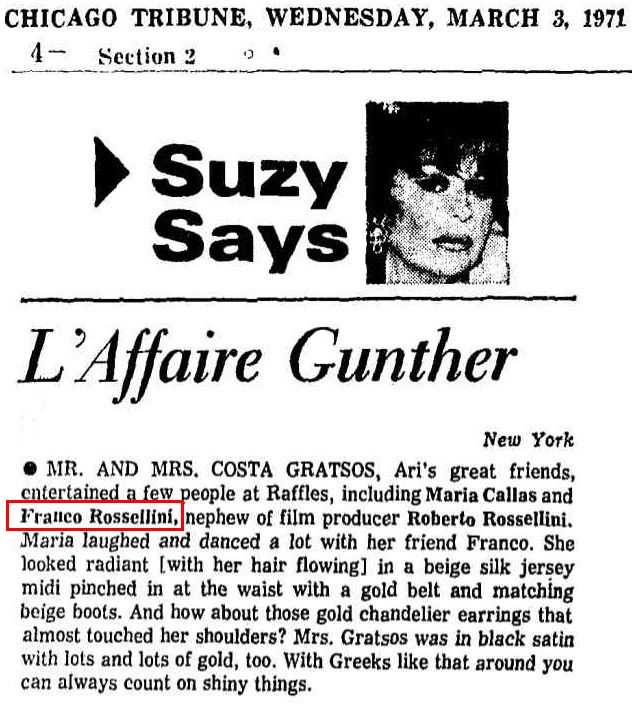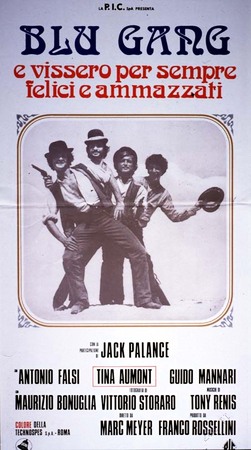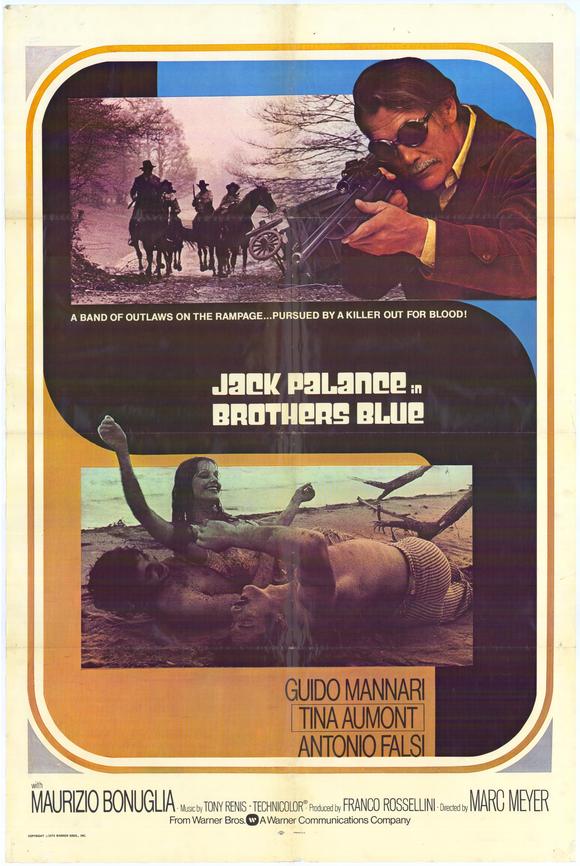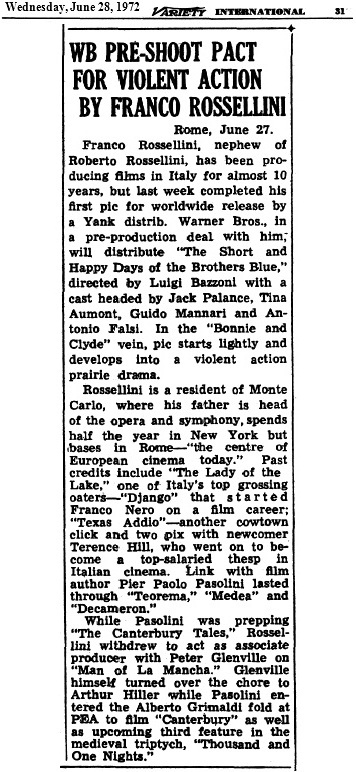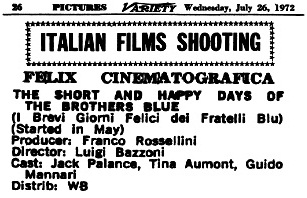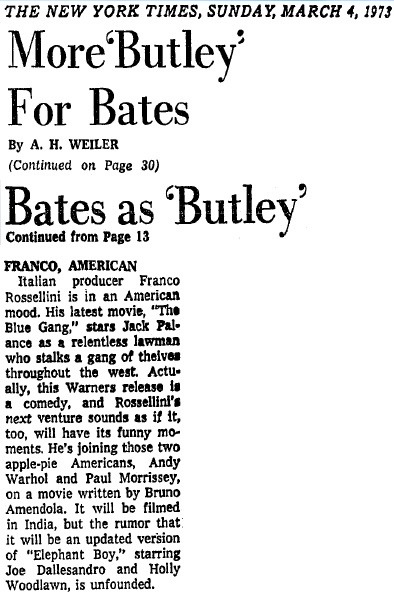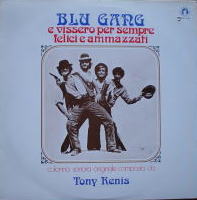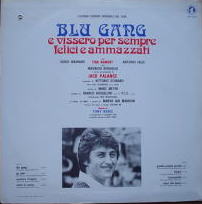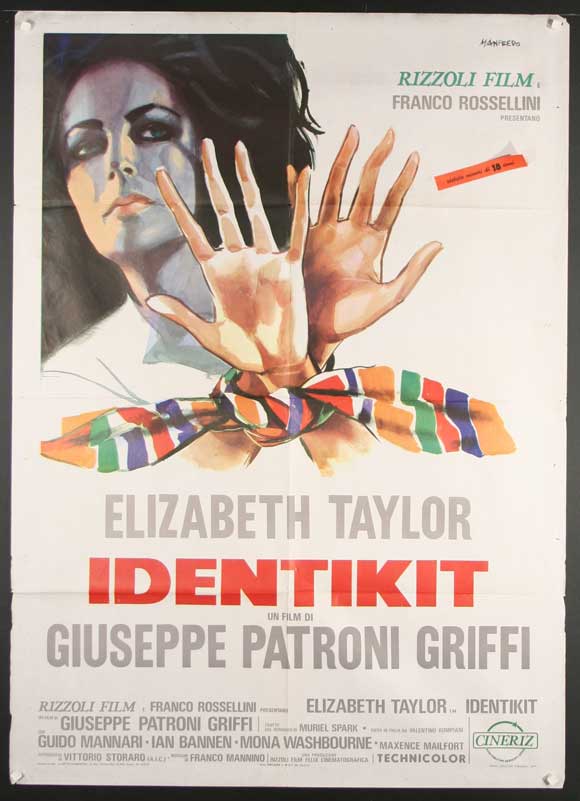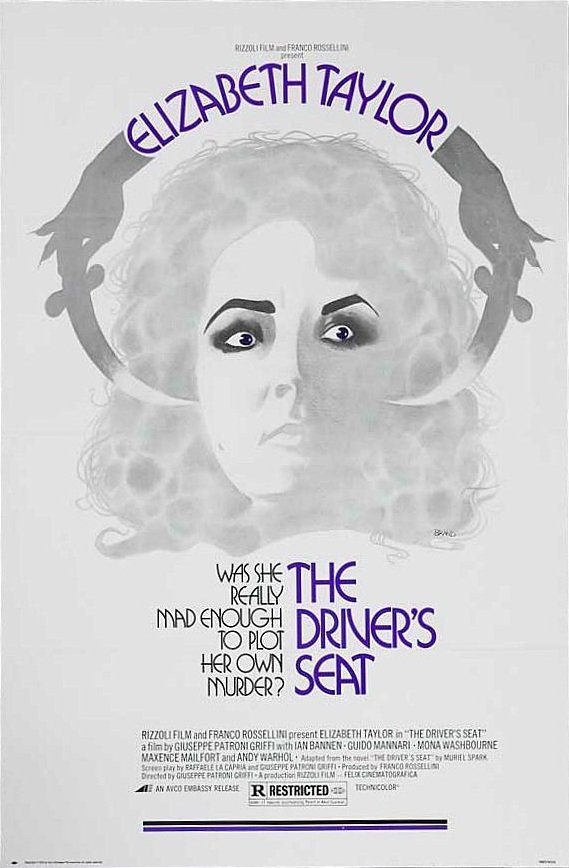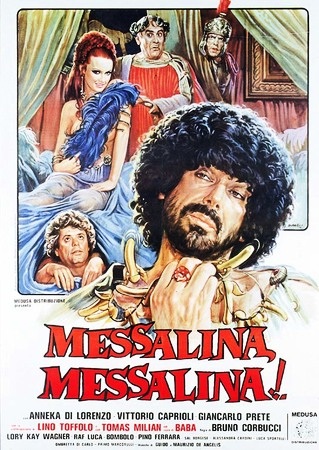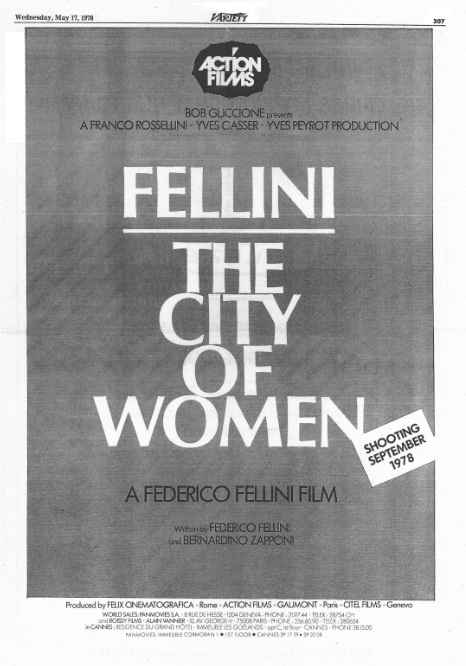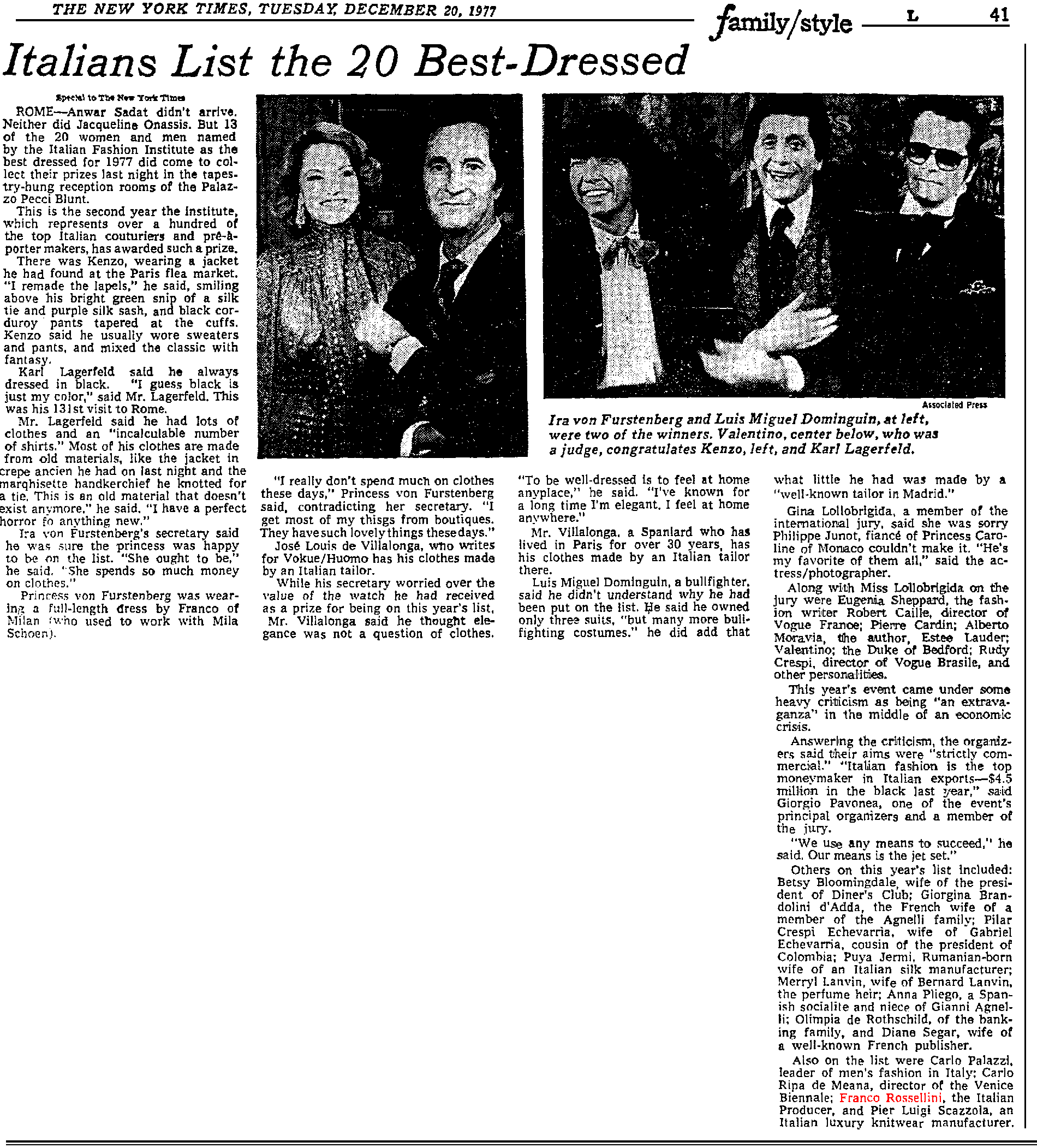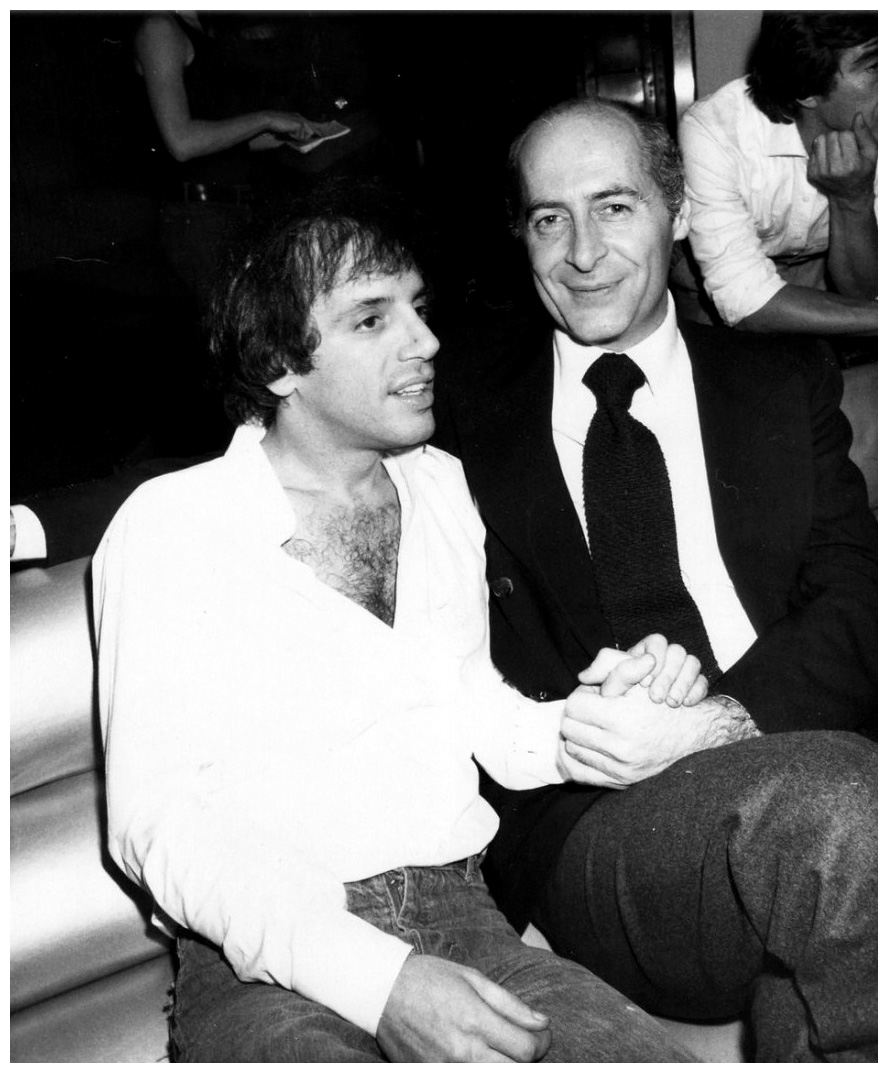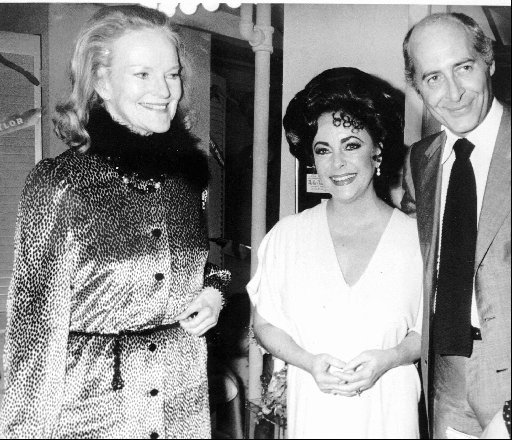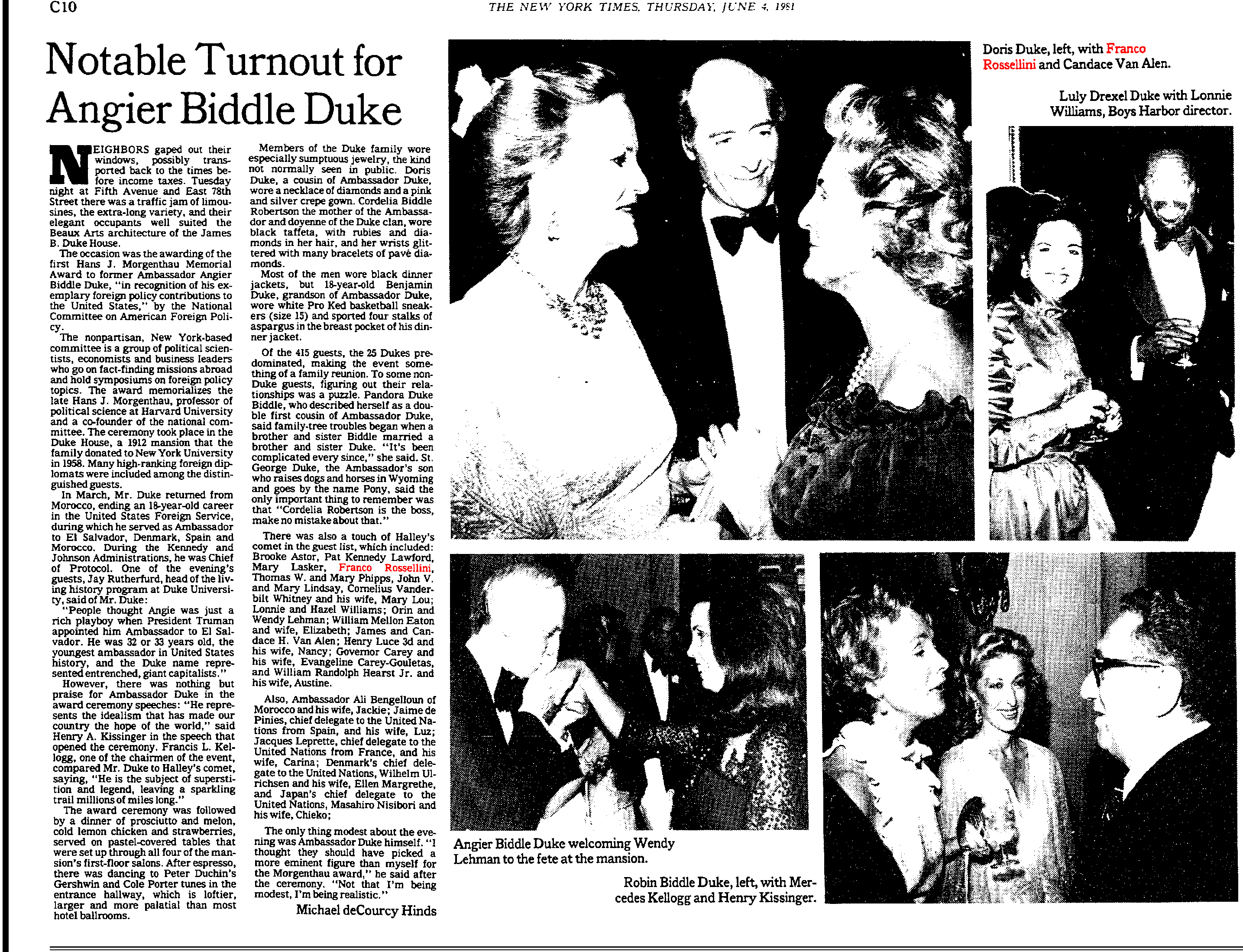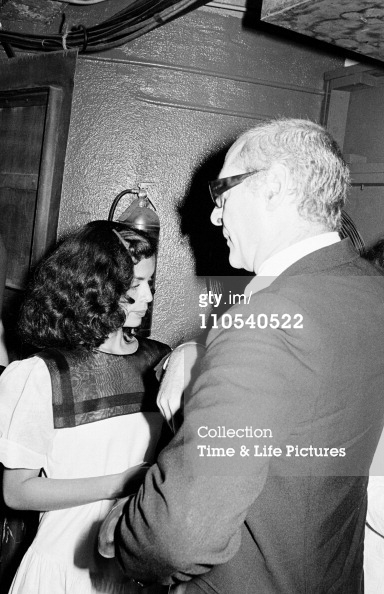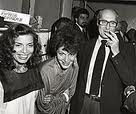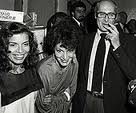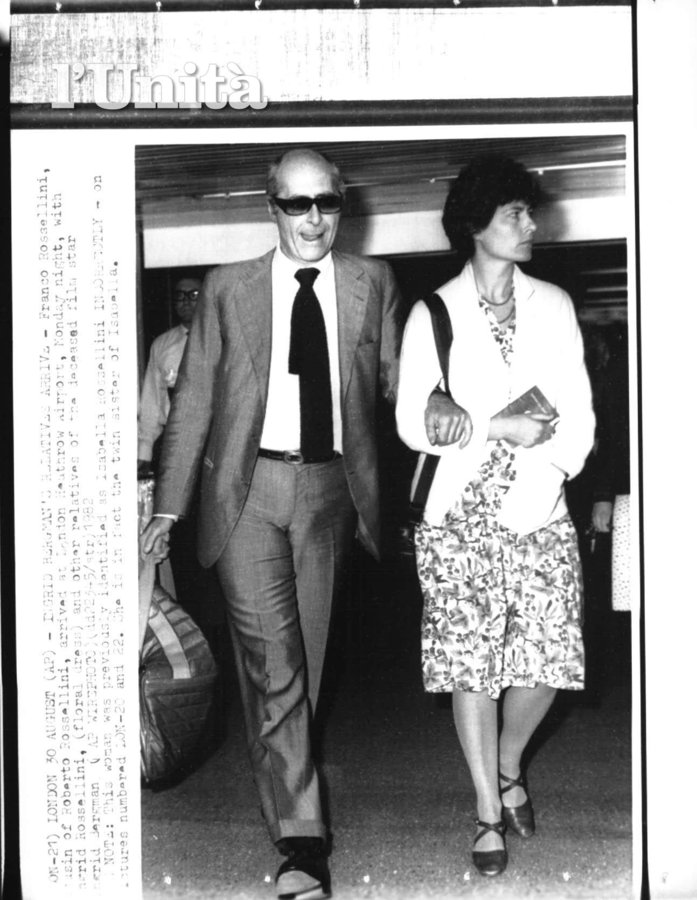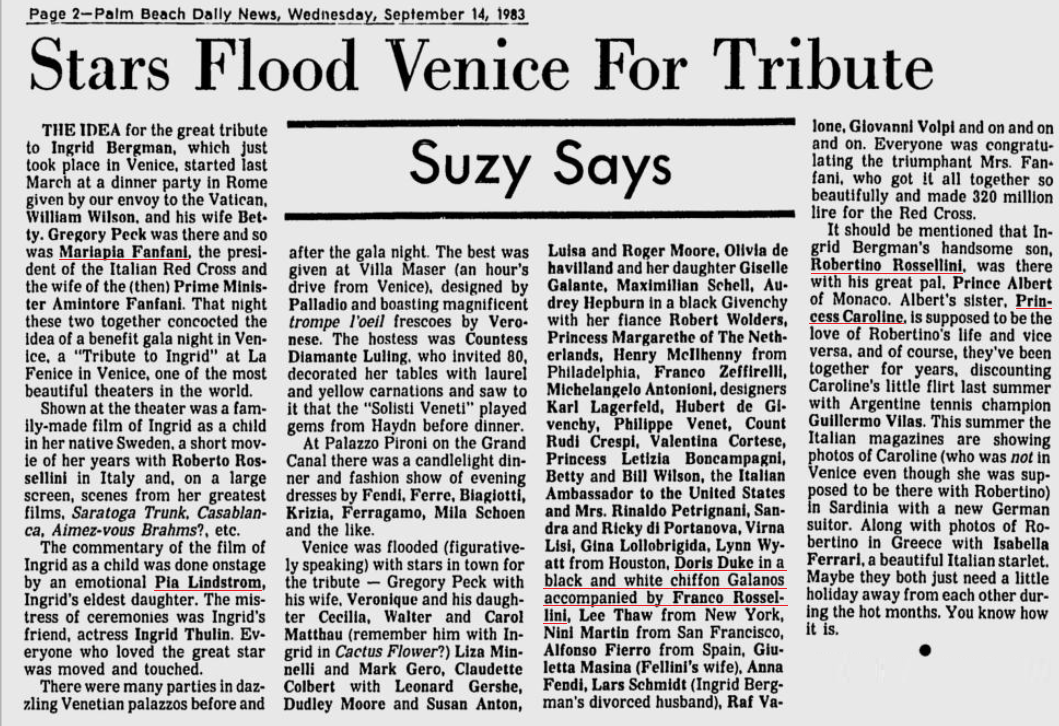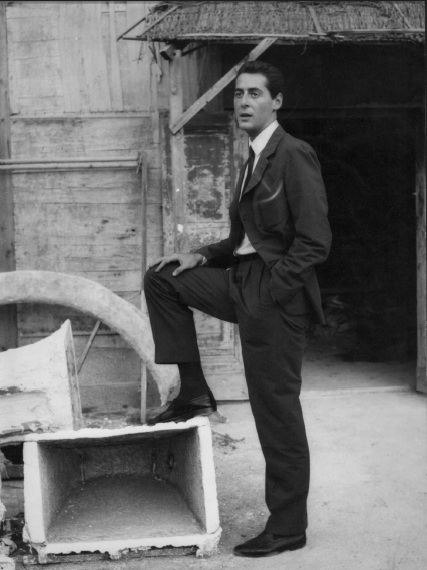
Film producer Franco Rossellini was the son of the
famous composer Renzo Rossellini
(the elder) and concert pianist Lina Pugni,
nephew of the famous filmmaker Roberto Rossellini,
and cousin of well-known Italian movie producer
Renzo Rossellini (the younger)
and actress/model Isabella Rossellini (Ingrid Bergman’s daughter).
Though Franco’s life was extraordinarily rich, and though he willingly risked death for the sake of protecting human rights,
when it came to making a living the only things he knew how to do were stage and movies.
That’s a pity, because when stage work dried up and the movies betrayed him,
he had nothing else to fall back upon.
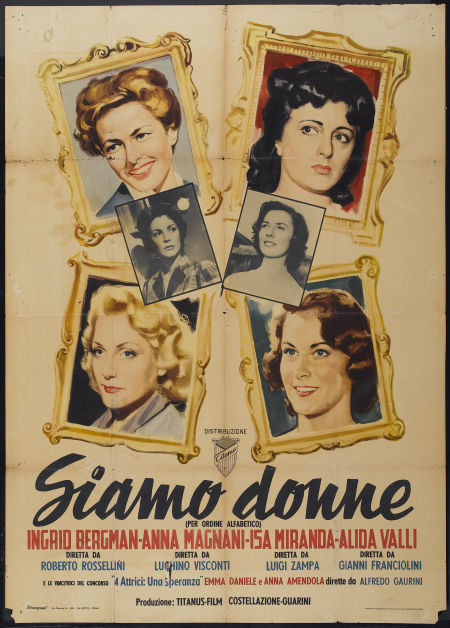
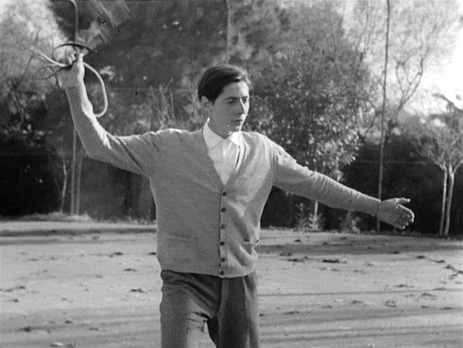
As himself, age 17, uncredited, in his uncle Roberto’s comical sketch about Ingrid Bergman in Siamo donne (1953).
In 1957, age 21, he was in an Antonio Pietrangeli film called
Nata di marzo
which has never been on home video and is nearly impossible to find. Apparently somebody somewhere has a video copy, though.
I do not have any images of Franco Rossellini as he appeared in this movie.
Click here for the ANICA record.
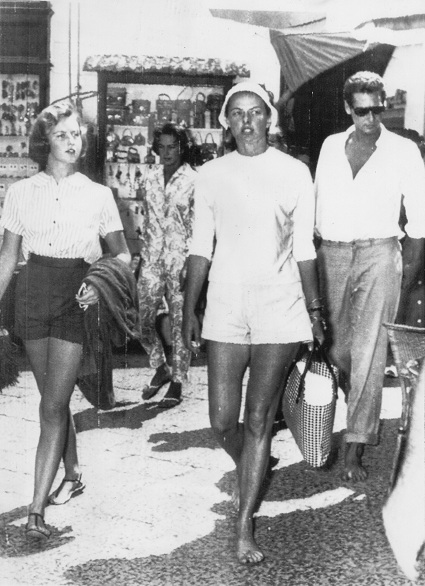
A UPI Press Telephoto dated Thursday, 15 August 1957, with a caption that reads:
NXP1138189-8/15-CAPRI, ITALY: Actress Ingrid Bergman(C), her daughter, Jenny Ann Lindström, 18,
and Franco Rossellini, 22 [sic], nephew of Ingrid’s husband, Roberto Rossellini, enjoy a stroll
through the streets here. Rome newspapers reported 8/14 that Jenny and law student Franco
would marry soon, but the screen star denied the reported romance.
UNITED PRESS RADIOTELEPHOTO -JB-
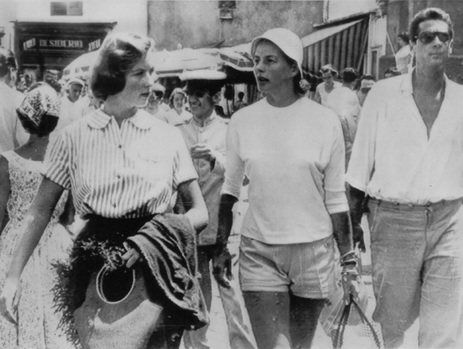
An AP News photo dated Sunday, 18 August 1957, captioned:
(NY8-AUG.18) INGRID DENIES DAUGHTER’S ROMANCE. —
Ingrid Bergman, center, walks with her daughter, 18-year-old Jenny Ann Lindström,
and her husband’s nephew, Franco Rossellini, 22 [sic],
on the island of Capri last Wednesday.
Today in Rome Miss Bergman angrily denied a romance between young Rossellini and her daughter exists,
or that she is trying to break up such a romance. (AP Wirephoto via
radio from London) (see wire story) (s11425pwl) 1957
And what Ingrid said was correct.
The baseless rumors were invented by overly enthusiastic journalists desperately trying to sell a story.
Nothing has changed.
Jenny Ann would soon afterwards revert to using her birth name, Pia.
Franco would later cast her and direct her in Lady of the Lake.
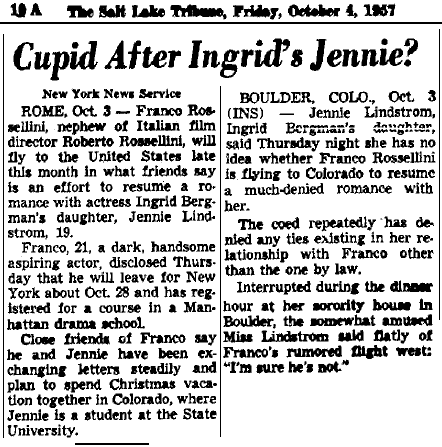
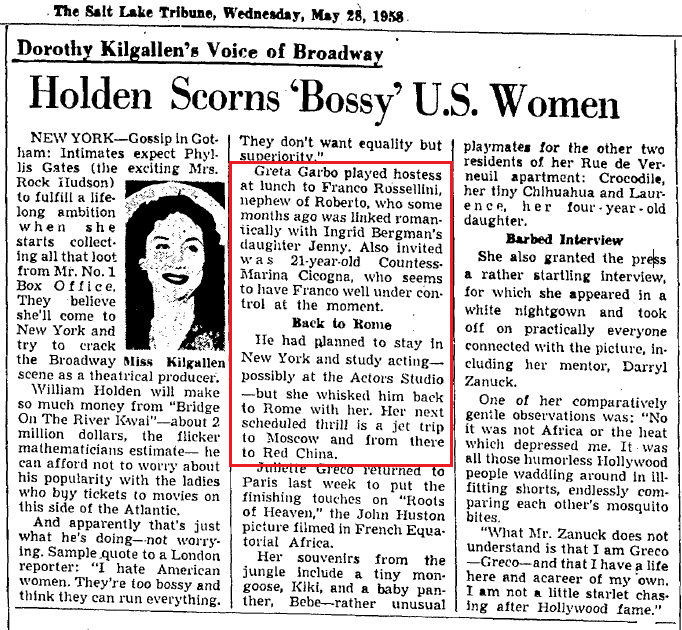
Oh, and for what it’s worth, here’s a little something about Dorothy Kilgallen:
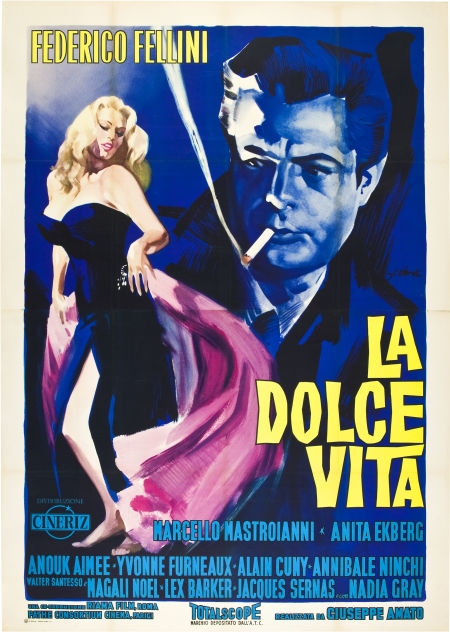
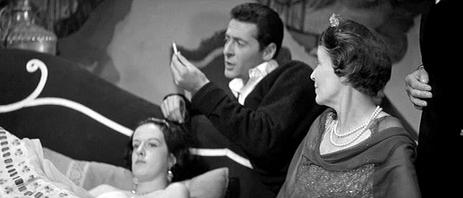
Age 24, without credit, as the Beautiful Horseman in Federico Fellini’s
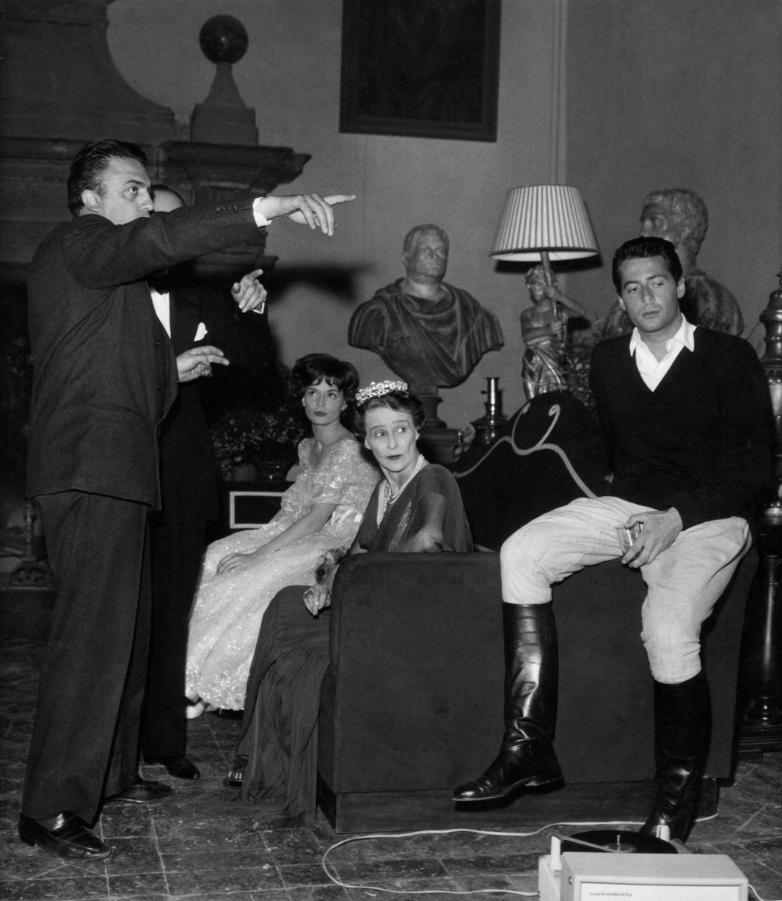
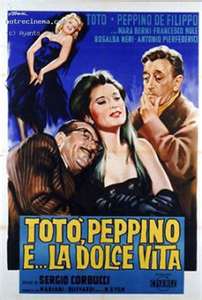
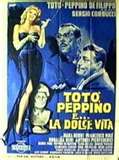
There was the inevitable “B”-movie
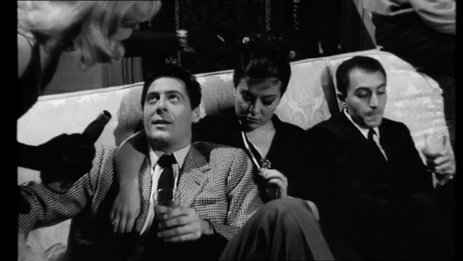
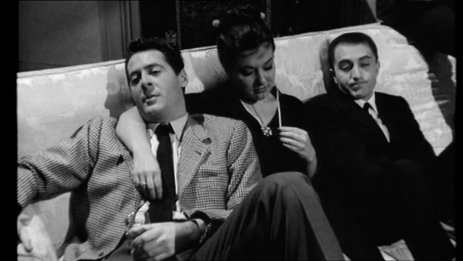
He portrayed himself in a
Most of this scene was shot in direct sound. Click here for the ANICA record.
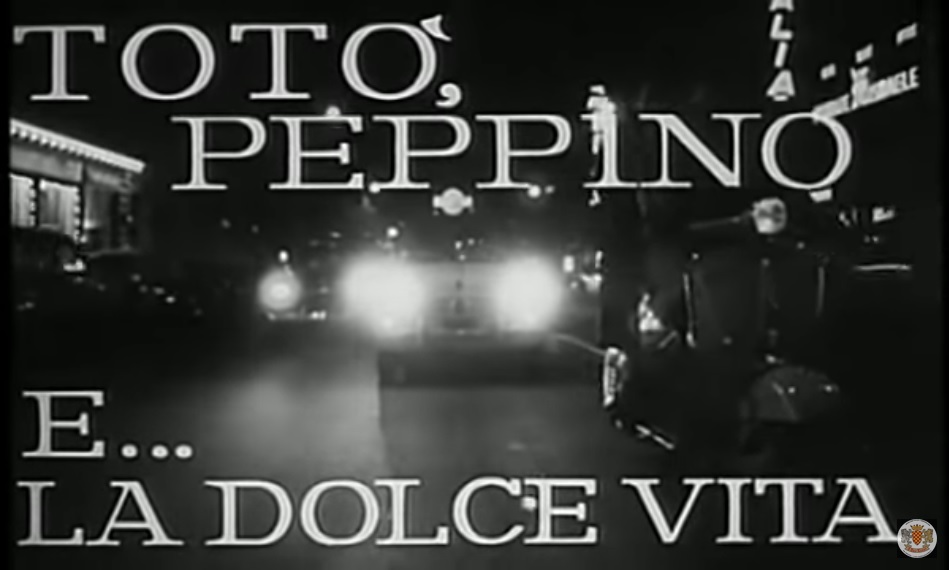
My heavens! Are copyrights a thing of the past?
Whatever. It’s now on YouTube, https://youtu.be/QzRGYB1UkDw. Skip ahead to 1:08:47 and then again to 1:19:57.
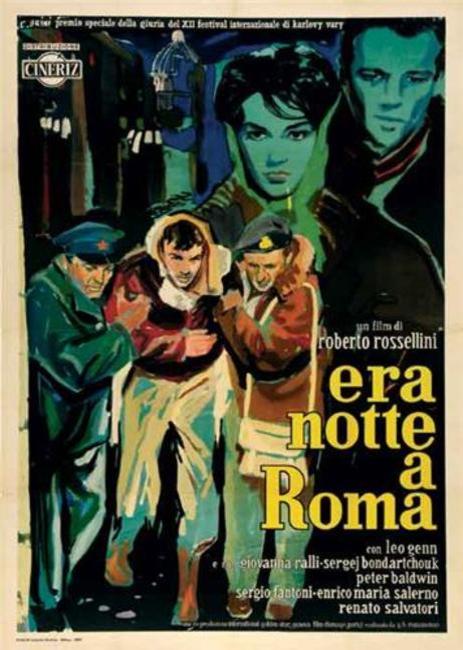
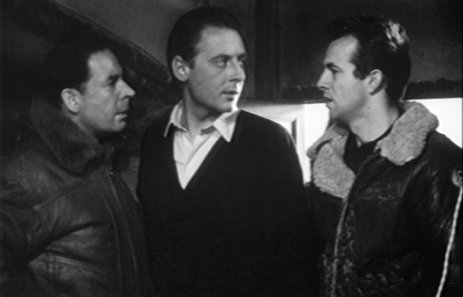
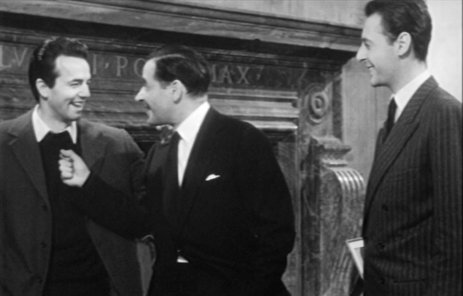
Age 24, uncredited, as Prince Augusto Antoniani
in uncle Roberto Rossellini’s Era notte a Roma (1960).
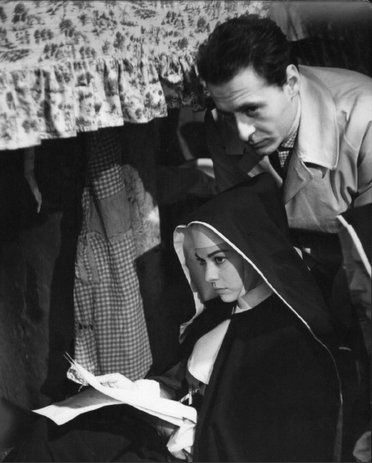
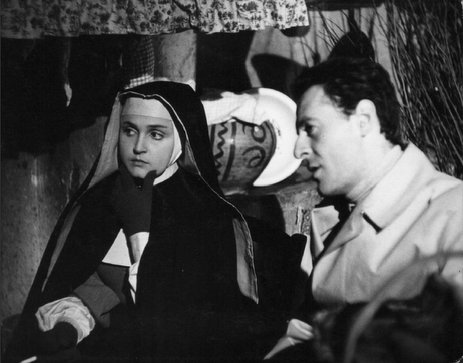
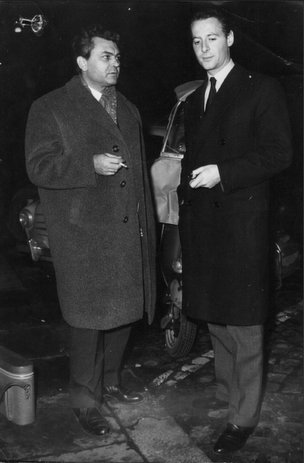
Directing Giovanni Ralli and Laura Betti, discussion with Sergeĭ Bondarchuk.
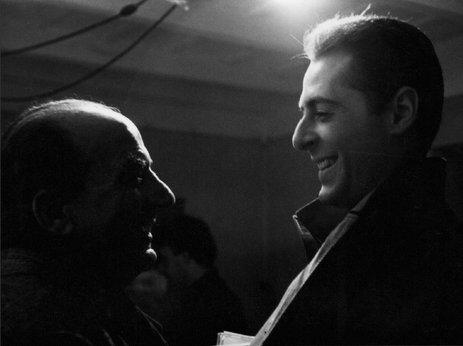
Enjoying a moment with his uncle between scenes.
The four photographs above were copyrighted by VittorUgo Contino, who is quite elderly now and whom I do not know how to reach. If you know how I can contact him, please write to me because I would like to license these photos. Thanks! Click here for the ANICA record.
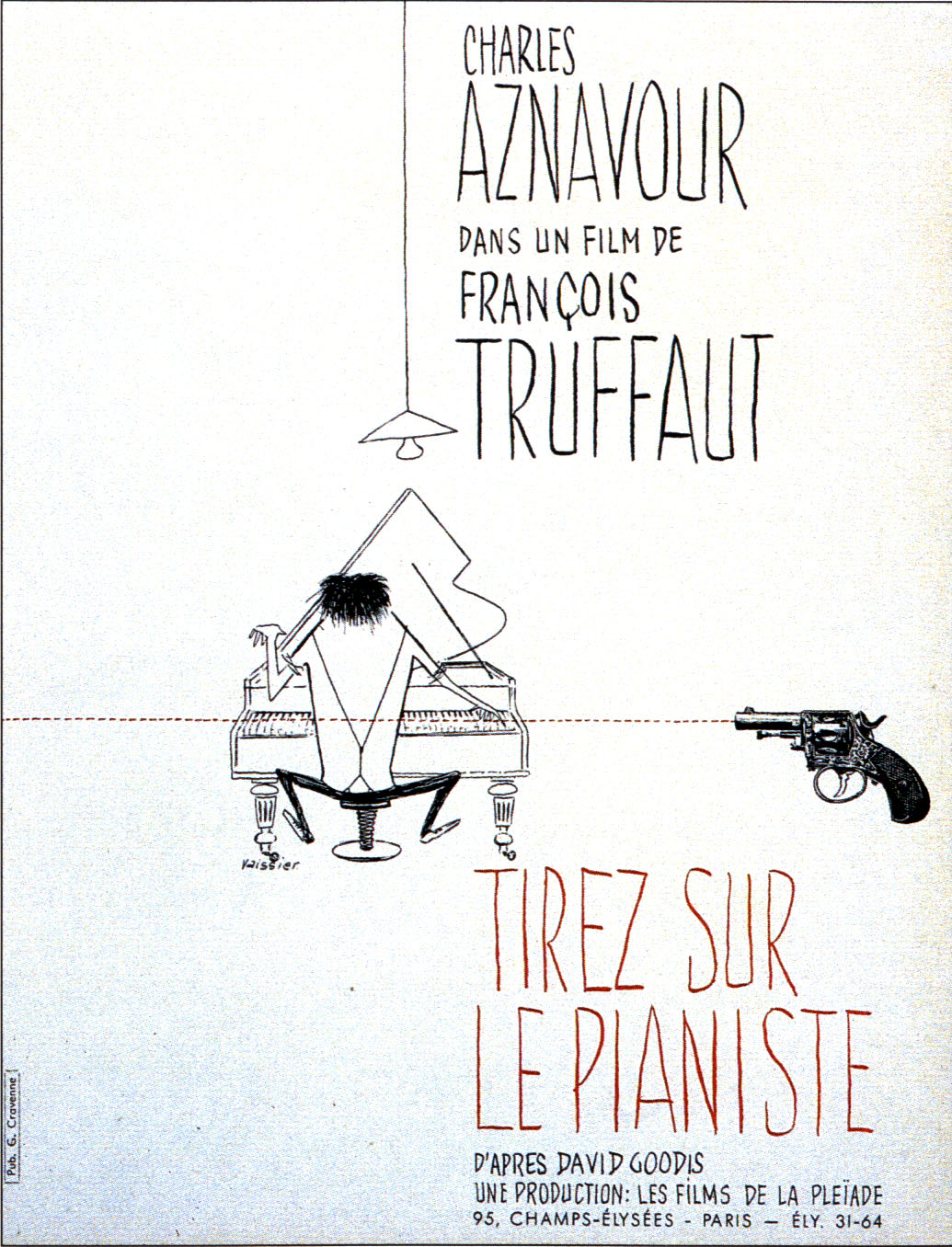
Franco Rossellini also assisted in some capacity, without credit, on Shoot the Piano Player, a joke title referencing a popular
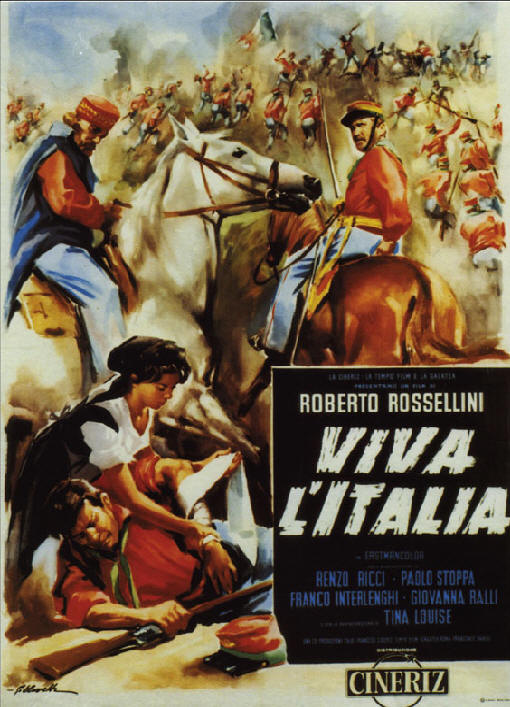
Filmed in 1960, released at the beginning of 1961. In commemoration of the centenary of the first Italian parliament, Roberto Rossellini was commissioned to make Viva l’Italia!, a historical film on Garibaldi, which he did as sheer hero worship, not as history. Nephew Franco again assisted with the direction. Click here for the ANICA record.
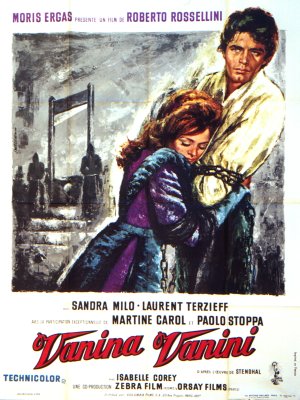
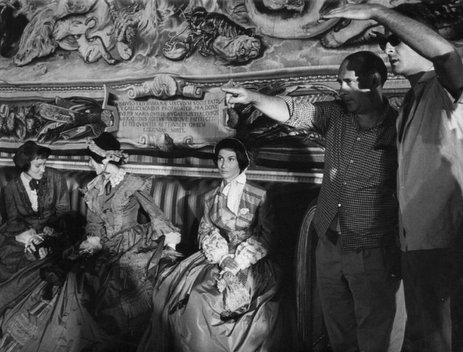
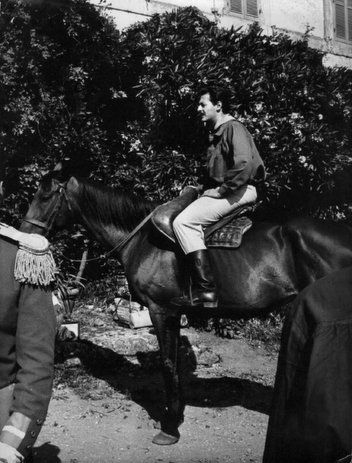
Franco, age 25, assisting Roberto, and also playing a bit part. I assume this is from Vanina Vanini (1961) but it’s been years since I’ve seen it and so my memory is hazy. (Actually, it’s been years since I’ve seen what little is left of this movie. The distributor chopped out the entire beginning of the movie. The only complete copy was on file at the Cinémathèque Françse but then it was destroyed in a vault fire. So all we have left is this crippled abridgment. Ugh.) Both photographs above were copyrighted by Agenzia Fotografica Pierluigi, via del Babuino 29, and if you know how I can reach the current rights holders, please write to me as I would like to license these images. Click here for the ANICA record.
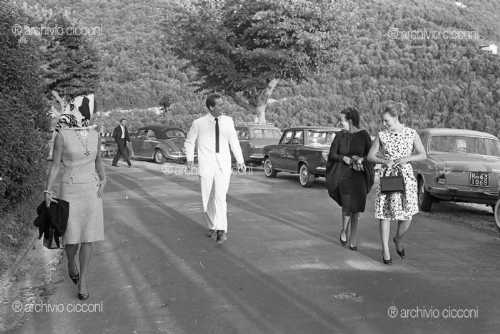
Marina Cicogna, Franco Rossellini, Baroness Fiona Von Thyssen, Jeanne Moreau at Spoleto.
Copyright © Cicconi Archivio Fotografico Storico Italiano.
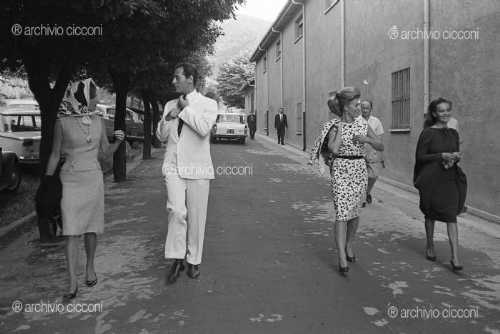
Marina Cicogna, Franco Rossellini, Jeanne Moreau, Baroness Fiona Von Thyssen at Spoleto.
Copyright © Cicconi Archivio Fotografico Storico Italiano.
In 1962 Franco found employment as assistant director on four movies.
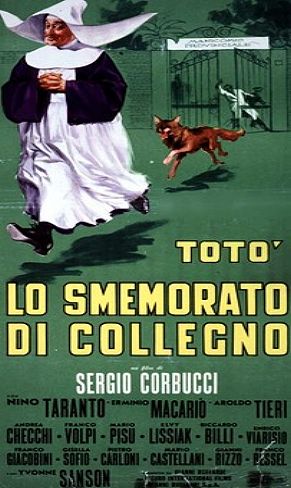
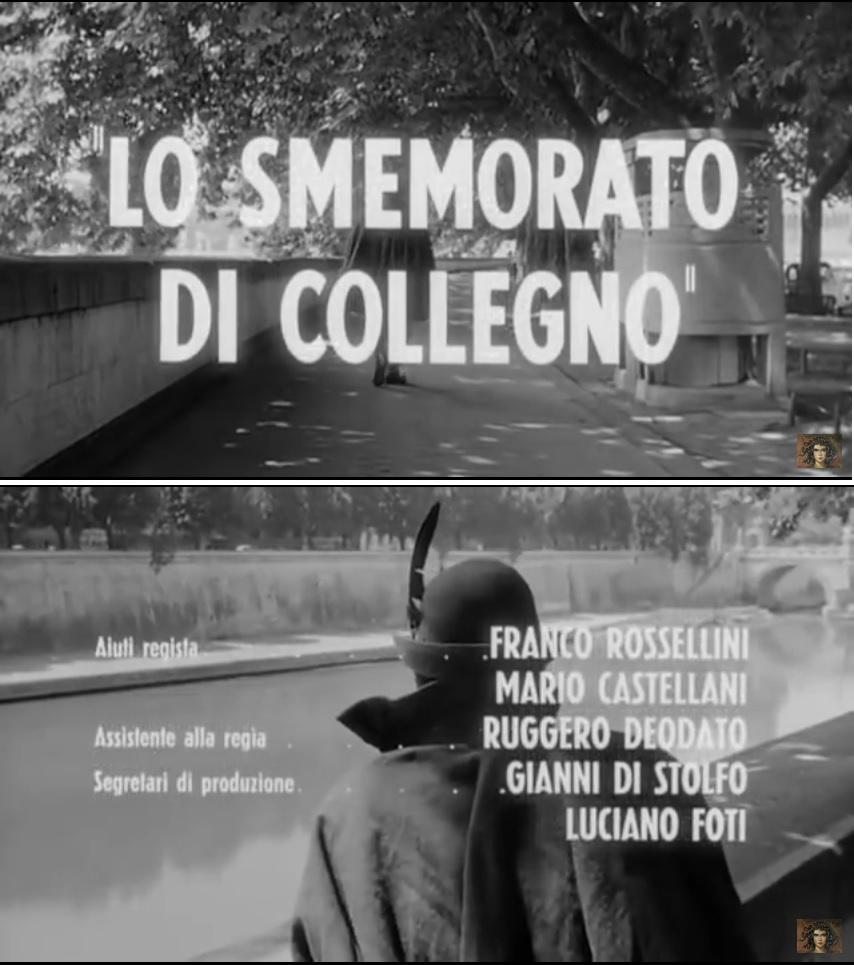
https://www.youtube.com/watch?v=umGF5uEnJOM
Also available for purchase on DVD.
ANICA
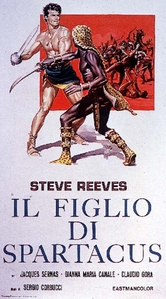
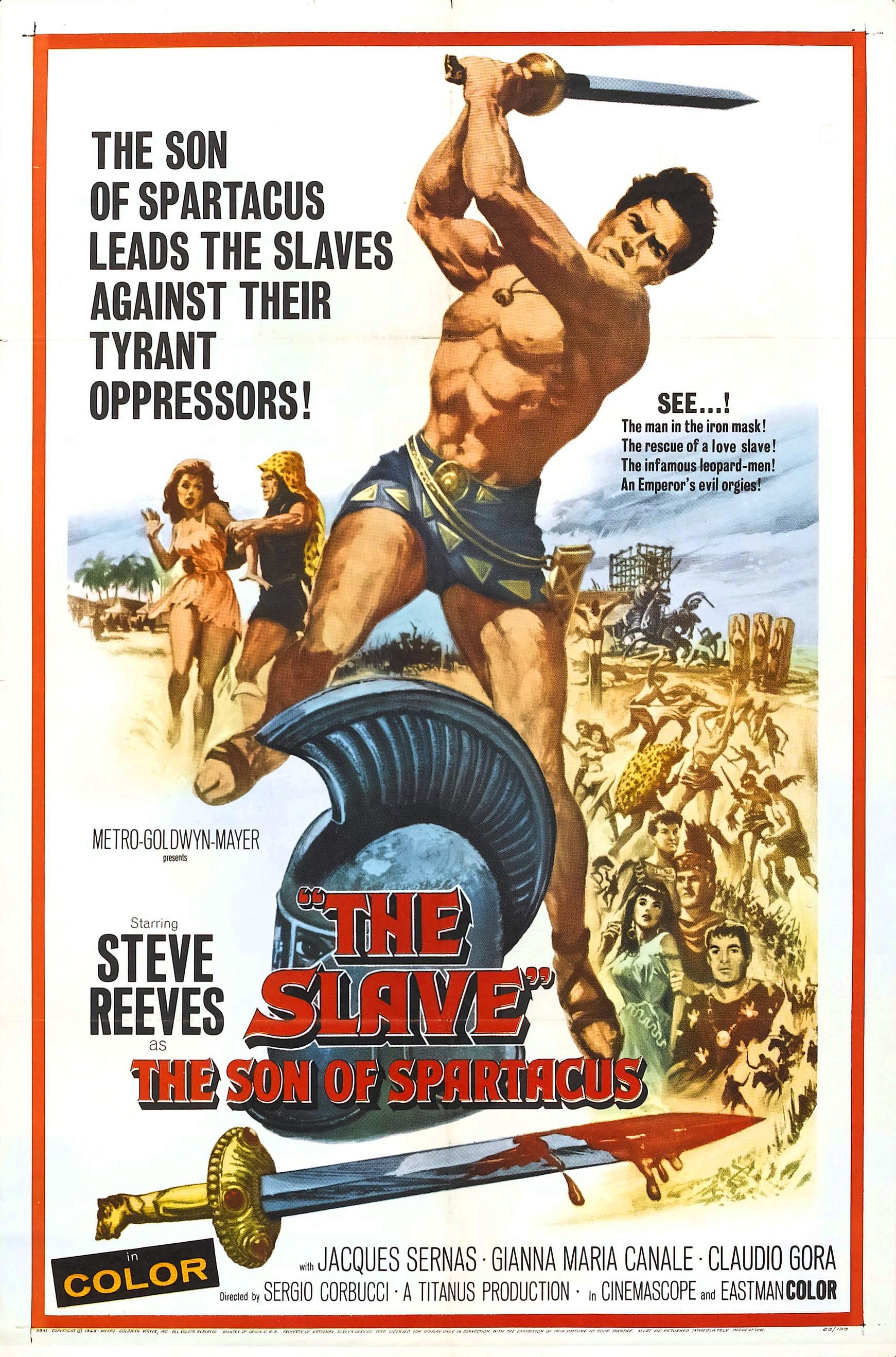
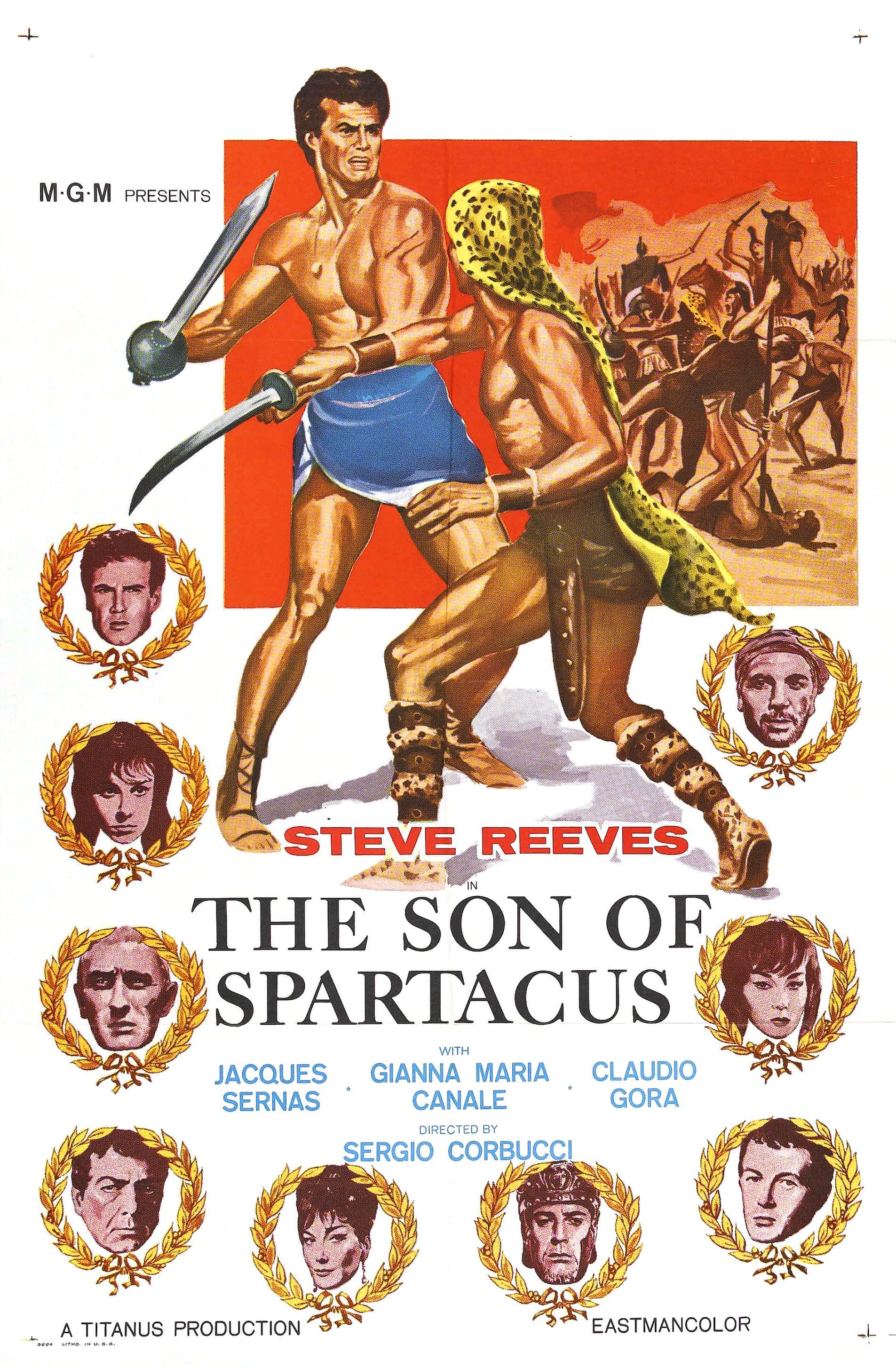
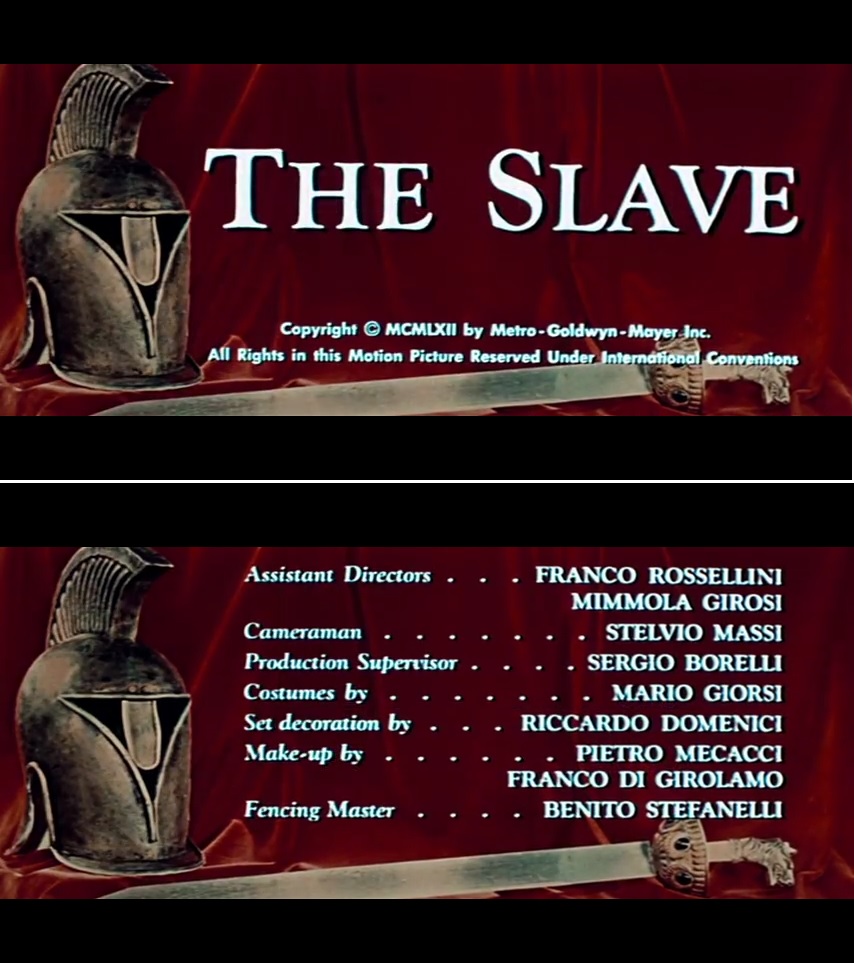
https://www.youtube.com/watch?v=_phnRaYRg_0
ANICA
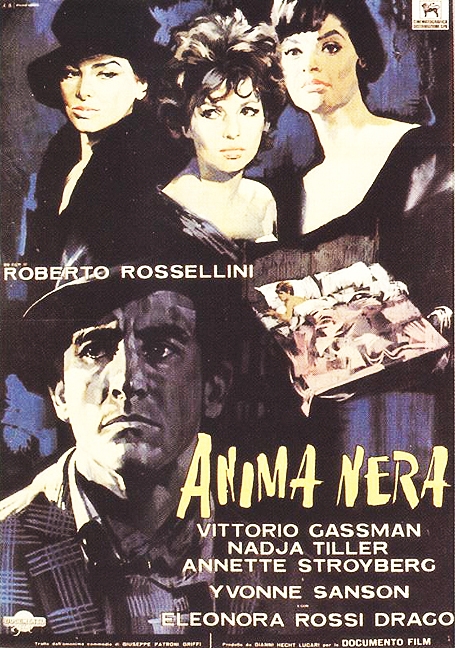
Available for download.
No screen captures, because my WMV copy, downloaded from Amazon, disintegrated.
ANICA
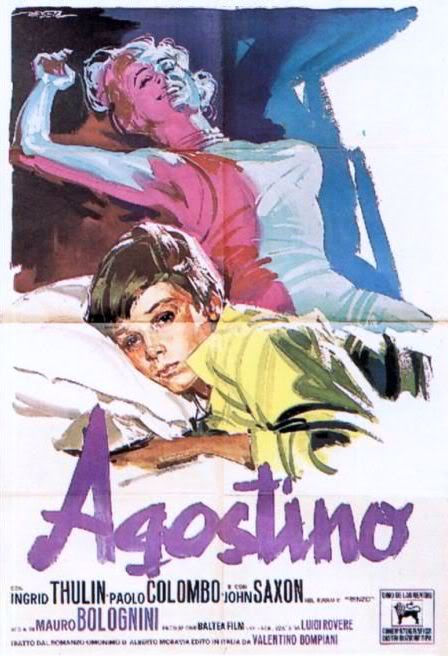
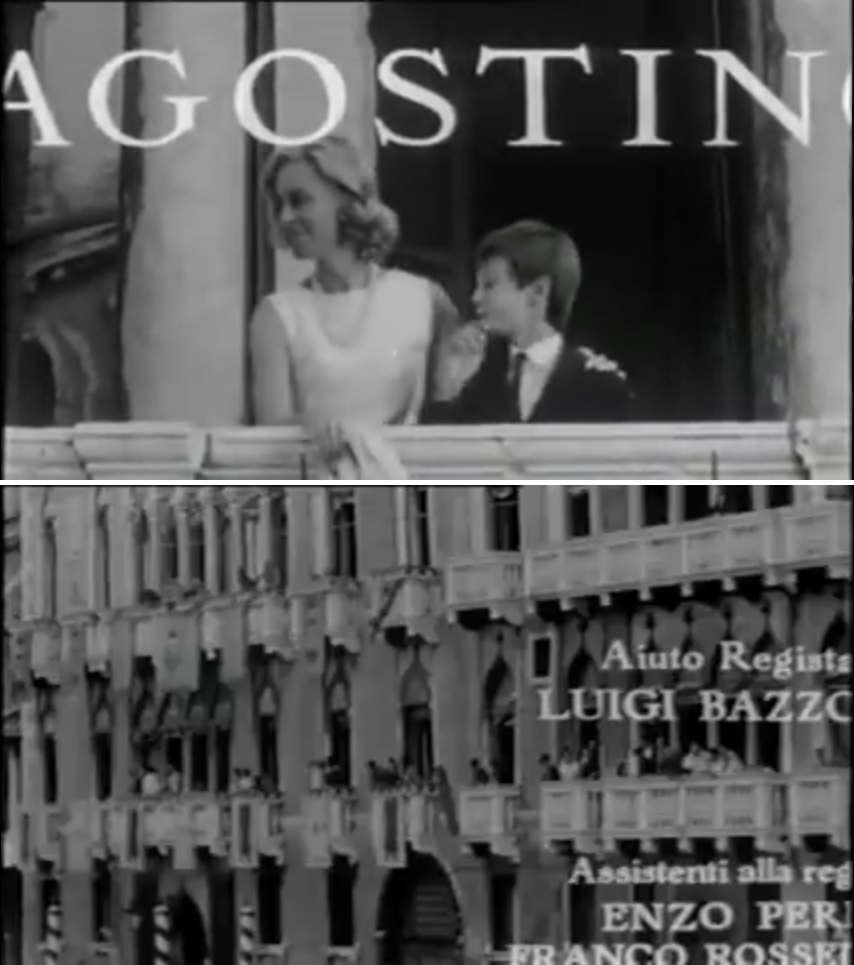
https://www.youtube.com/watch?v=Xx7jjvpAMAE
Another copy, missing the first 3 minutes 48 seconds, but with English subtitles, is available here.
Both these online editions are cropped from the original 1:2.39, not just on the sides, but on the top and bottom too. Some of these names pop up again, and pretty soon: Mauro Bolognini and Luigi Bazzoni, among others.
ANICA
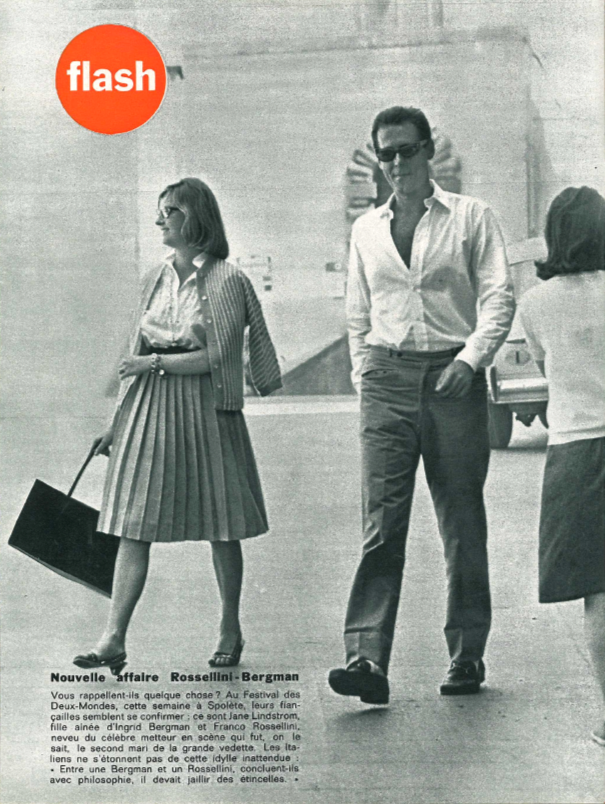
Franco and his cousin-by-marriage Pia Lindström attended the fifth annual “Festival dei Due Mondi” in Spoleto. This was a classical-music festival founded by family friend Gian Carlo Menotti. This photo and caption are from Jours de France: l’hebdomadaire de luxe a la portée de tous no. 401, 21 July 1962, p. 22. As ever, the press couldn’t resist making much ado of nothing. I don’t speak French, but I can make some things out, and Google Translator can rough out the edges sometimes. So here goes, and I hope I’m not totally mucking it up:
A New Bergman-Rossellini Affair
Don’t they remember anything? At the Two Worlds Festival this week in Spoleto, their engagement seemed to be confirmed. They are Jane [sic] Lindström, Ingrid Bergman’s eldest daughter, and Franco Rossellini, nephew of the famous director who was, as we know, the star’s second husband. The Italians are not surprised by this unexpected romance. “Between a Bergman and a Rossellini,” they conclude philosophically, ”sparks fly.”
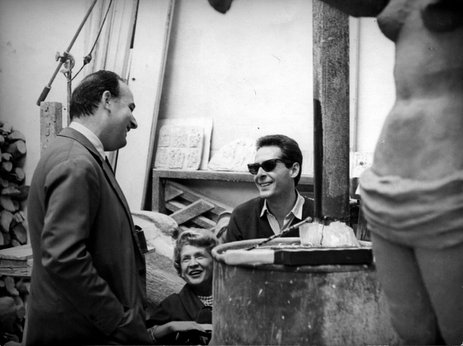
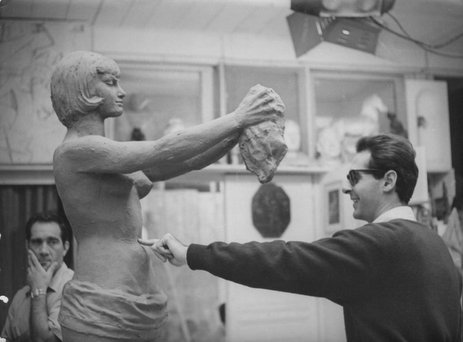
No idea what movie this is from, unless maybe it’s Anima nera? It was obviously directed by Roberto Rossellini, and Franco was obviously an assistant.
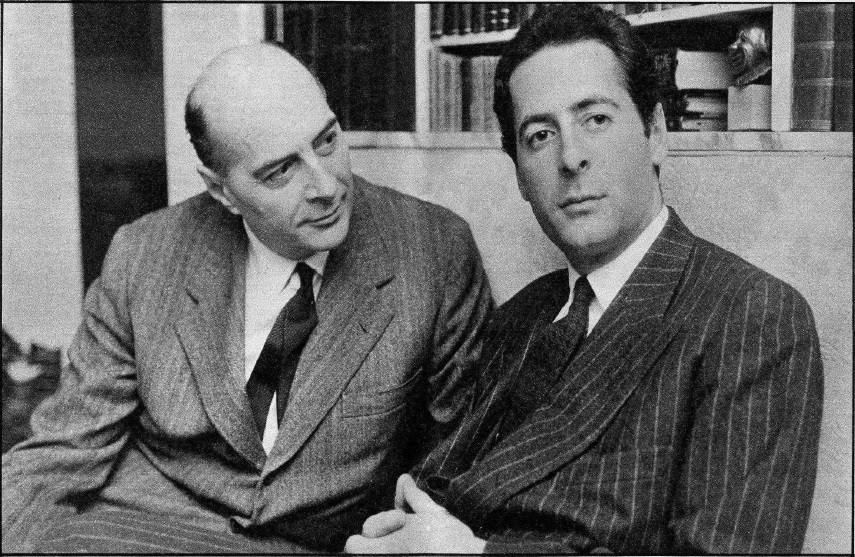
Franco with his father Renzo. Oggi, 25 April 1963, p 45.
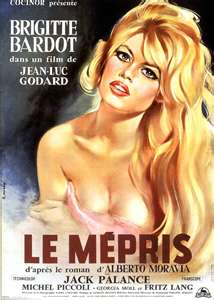
In 1963, without credit, Franco assisted Jean-Luc Godard on Contempt.
Franco would work again with Jack Palance ten years later.
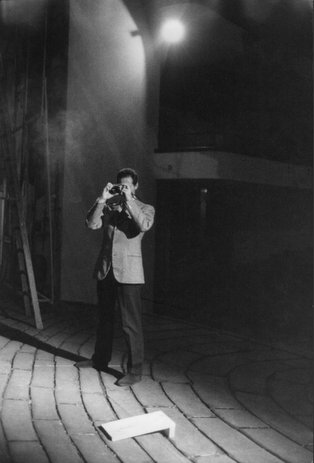
Producing an unidentified opera (La Bohème, maybe?).
Copyrighted by Angelo Frontoni. If you know how I can reach the current rights holder, please write to me as I would like to license this image.
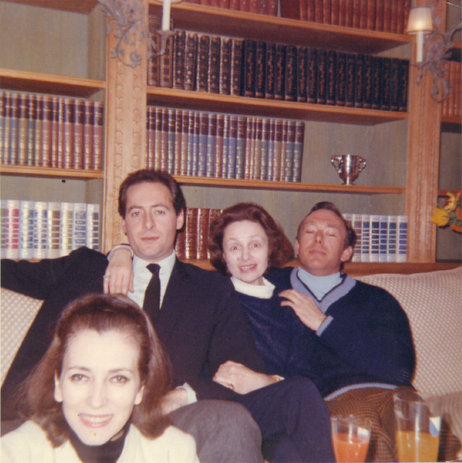
Snapshot. I would love to be able to date this precisely and identify the other people in it. My guess is that the person in the middle is Franco’s mother, Lina Pugni, the concert pianist,
Franco Rossellini went on to produce some of Italy’s most respected movies of the 1960s and early 1970s.
When audiences saw “A FRANCO ROSSELLINI PRODUCTION”
on a film’s advertising or on its opening credits,
they knew they were in for something special.
Most of Franco’s movies, though, were not works of art.
Far from it.
And on those exploitation flicks, he did not advertise his name anywhere.
That is why his movies have been so hard to trace.
You can search high and low through all the reference books
and all the trade publications
and all the archives, and you’ll come up almost empty-handed.
We know for certain that he produced lots of movies,
but his name is not on most of them.
So how can we identify them?
We have the IMDb.
Normally the IMDb is not the best source of information.
In Franco’s case, though, it is of monumental help —
but only if we know what we’re looking for.
His first production set the trend and provided the first clue. His friend
Rosemarie Kanzler handed him some money on condition that he direct a movie.
So direct a movie he did — or at least codirect with Luigi Bazzoni.
The result was La donna del lago (Woman of the Lake),
known in the UK as The Possessed.
Franco was not listed as producer.
Instead, the production was credited to a brand-new company, B.R.C. Produzione (Roma).
What was B.R.C.? Have patience, and you’ll see.
La donna del lago came out in 1965 and was a miserable flop,
though it has gained a significant reputation since then.
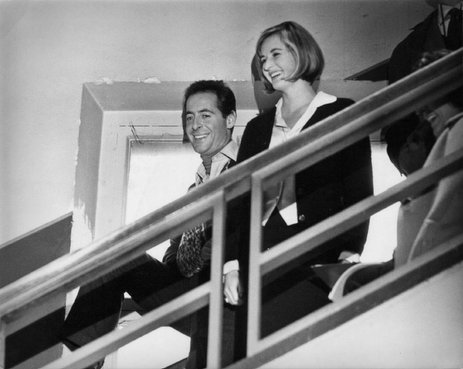
With Pia Lindström (Ingrid Bergman’s daughter)
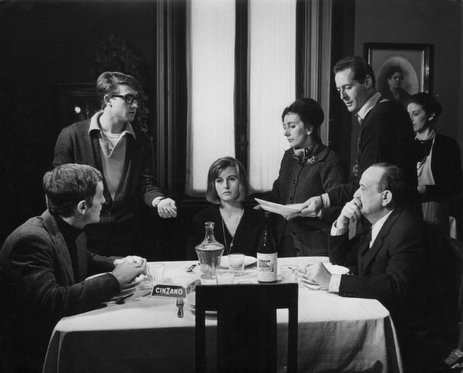
Directing La donna del lago.
The above photographs were copyrighted by Pierluigi, Lungotevera del Mellini 17. If you know how I can reach the current rights holder, please write to me because I would like to license these images. Thanks!

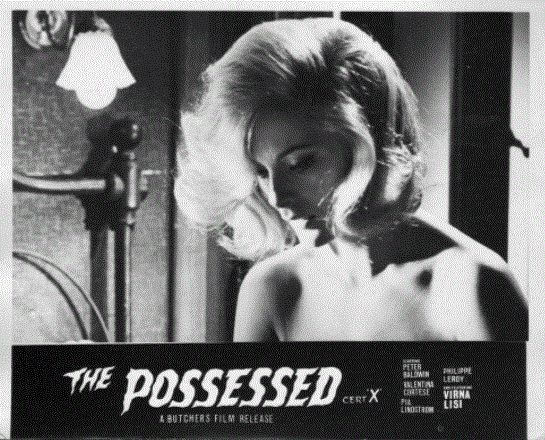
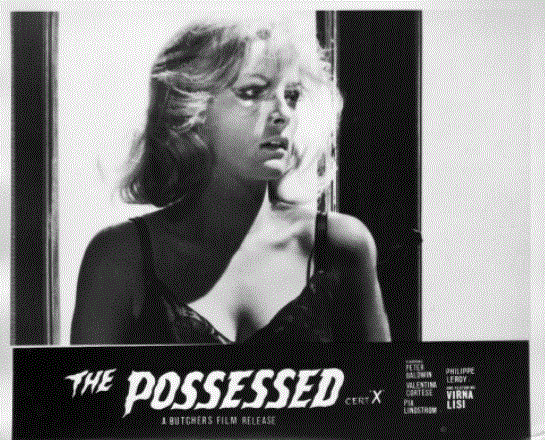
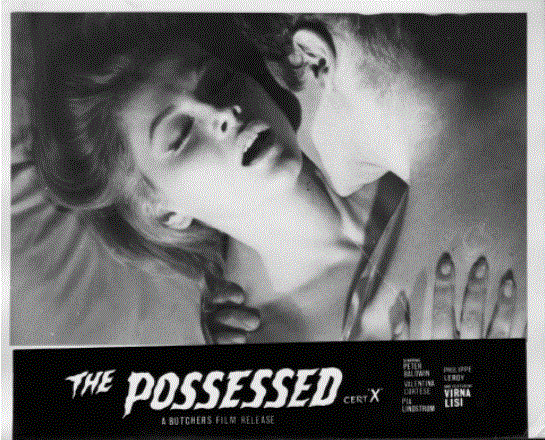
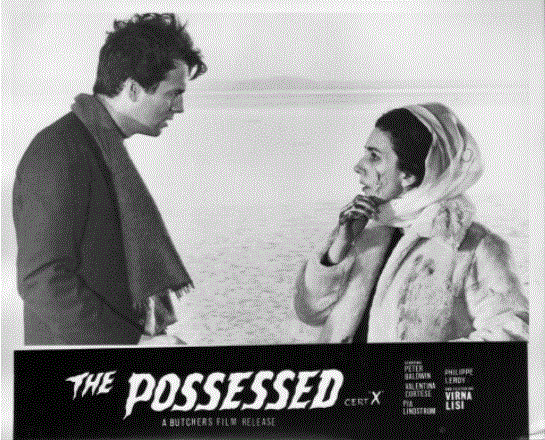
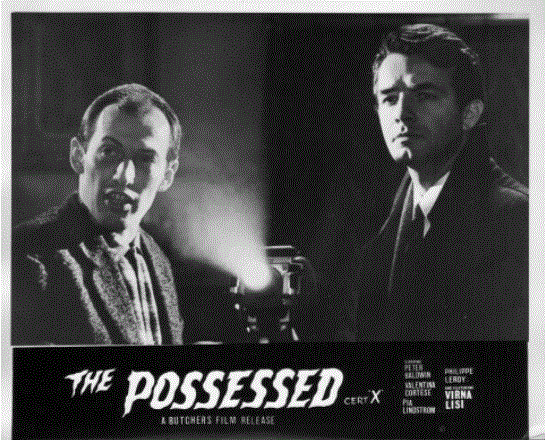
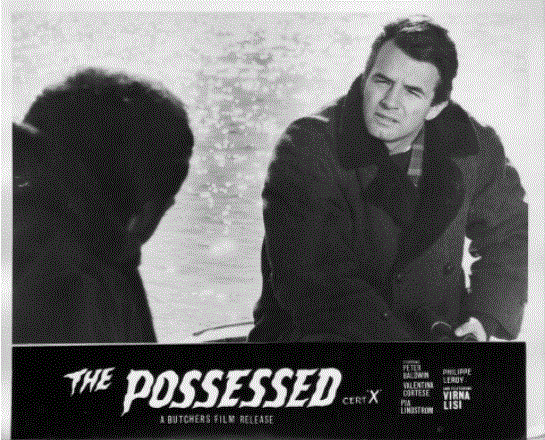
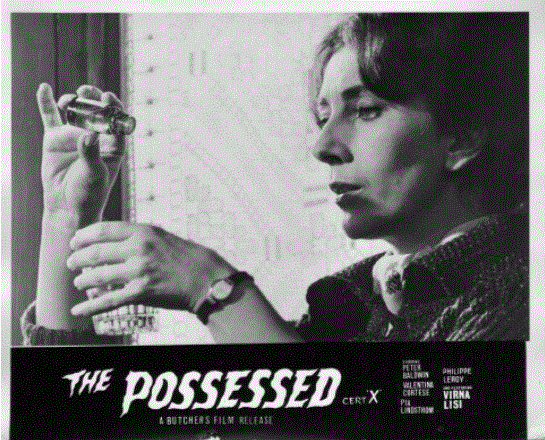
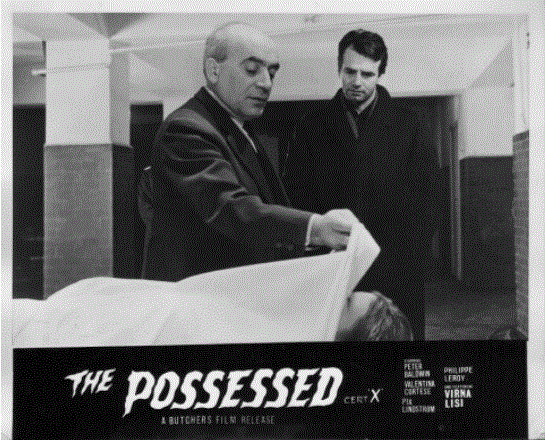
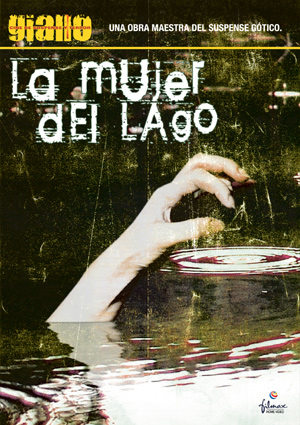
Available on DVD (region 2 PAL)
in Italian with optional Spanish subtitles. Click here for the ANICA record.
Franco Rossellini was also involved in some uncredited capacity in this unusual film,
produced for Cosmotel and Unitel by Herbert Von Karajan,
designed by Franco’s friend Franco Zeffirelli,
and released in the US sans subtitles by Warner Bros in 1965.
Franco’s next coproduction was
Django,
an immensely popular “spaghetti western” starring Franco Nero.
But we look in vain for Franco Rossellini’s name anywhere in Django’s credits or press materials.
There is not a mention of Franco Rossellini’s involvement even in the trade press.
Yet he was the coproducer, along with his friends Manolo Bolognini and Sergio Corbucci.
As we can discern from the above,
though shot in Italian, the credits were also prepared in English,
and thus the idea was for a US release.
But that never happened.
No US distributor has ever bid on it, and the UK censors banned it outright.
But it was a major hit in Europe.
In the US it eventually appeared on video,
and it occasionally gets bookings at archives and museums and festivals,
but it has never been made available to regular cinemas.

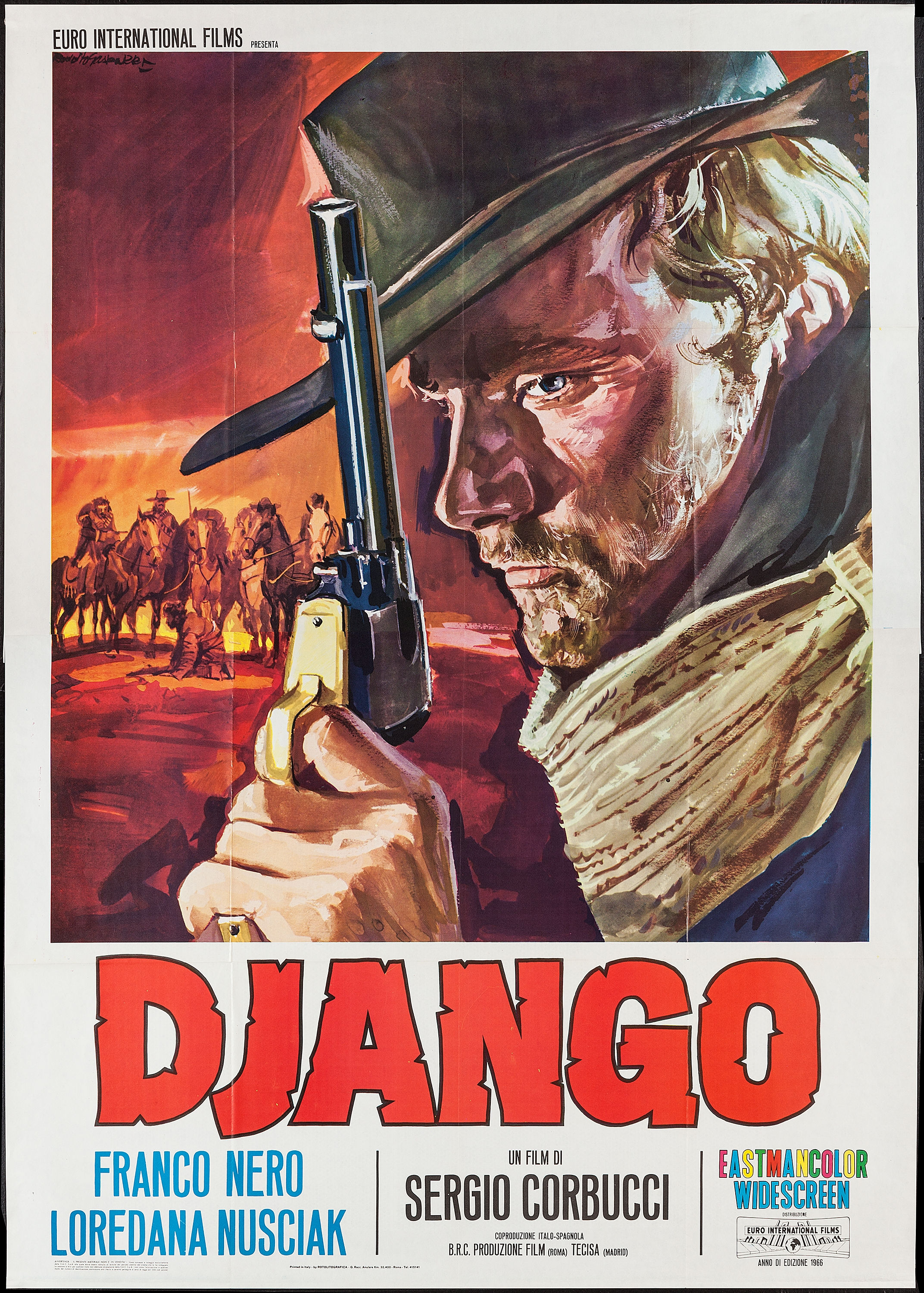
Did you notice what I noticed? Right there at the bottom of the poster. Look again at the name of the production company:
So there it is again! We know that the three coproducers were Bolognini, Rossellini, and Corbucci.
This begins to make sense, yes? Except that it doesn’t. B was really Bolognini. R really was Rossellini. But C was not Corbucci. I hear that he was someone named Colojacono or Colaiacomo, most likely Felice Colaiacomo, the cofounder of Medusa Distribuzione, SpA.
Critics ignored this movie and pretended it didn’t exist.
Audiences ate it up and were hungry for more.
I admit, I side with the audiences.
Click here for the ANICA record, which states, wrongly, that this movie was released in the US.
There were a number of Django sequels, and Franco coproduced some of them.
Which ones?
Franco could never remember most of the titles:
Meantime I was directing operas because all my friends were doing it, like Franco Zeffirelli, Tommy Schippers and Luchino Visconti. So I did operas all over the world. But I felt responsible towards Rosemarie [Kanzler] because she gave me that money and the film [Lady of the Lake] was not a success so I thought I better make another film. But this time I didn’t direct because I thought I’m such a bad director, so I got Sergio [Corbucci], who was a good friend, and made this little film, a Western. I picked up a boy who always wanted to be an actor called Francesco Sparanero — the most unbelievable name because in Italian that was “Shoot Black” and to have someone in a Western called “Shoot Black” was too much, so I changed it to Franco Nero and made Django and it became the biggest success. Franco overnight became a big star and, my dear, this film cost $100,000 — nothing — and it made in Italy alone 4 million. Then somebody called Franco from Hollywood and I lost him. So I looked for someone else — in the street, of course, because I wanted to make verylow-budget films — and I found this boy who had worked with Luchino and looked exactly like Franco Nero, so I changed his name into Terence Hill and made a few very low-budget films — the titles I can’t even remember.
These films became so popular! And I did them for fun! The moment they made so much money — like 10 or 15 million — I got scared and I didn’t want to do them any more so I got back to the very amateurish films that I like. (Bob Colacello, “Franco Rossellini,” Andy Warhol’s Interview, February 1975)
It is a bit difficult to assess the above quote.
For the most part, the claims are true.
(Yes, he did direct operas, but the only one I have been able to establish
with certainty is his father’s operatic version of Arthur Miller’s A View from the Bridge
in Germany and then again at the
Philadelphia Lyric Opera Company in 1967.
If you know what else he did, please write to me. Thanks!)
But some of his claims are fibs.
As far as I can determine, Franco Nero first appeared in movies four years prior to Django,
and it was not Rossellini who shortened Sparanero to Nero.
To another interviewer (Ben Brantley, “Rossellini’s Requiem,” Vanity Fair, May 1993, p 184)
Rossellini even claimed that he discovered Sparanero when he had employed him as his chauffeur.
Listen to what Franco Nero himself says in the Blue Underground DVD supplement,
Django: The One and Only:
My real name is Francesco Clemente Giuseppe Sparanero. And I said to [Dino] De Laurentiis my name: “My name is Francesco....” He says, “Ah, go on. Whaddaya mean? Ah, how can you be, no, I mean, you know, how can you have that name? In America the problem is nobody would pronounce your name. So, I’m going to change your name. You are going to be called Castello Romano,” because Castello Romano is the name of the street where the De Laurentiis studios were. I started to cry like a baby. I said, “Oh no! I don’t want to be called Castello Romano!” So I had a big crisis. There was a guy at the De Laurentiis studio who said, “Let’s leave your name. Just cut your name shorter. Francesco — Franco. Sparanero — Nero.” In two movies they put the name “Frank Nero.” One was The Professional Killer and the other one was Gli uomini dal passo pesante. But then when I did Django I said “No, no. I want my name Franco Nero, please.”
Sergio Corbucci drew up a contract with Mark Damon,
but there was a problem, Nero explained:
But Mark Damon was busy [at] the moment that Corbucci wanted to shoot Django. And then the other producer [Rossellini] wanted another Spanish actor. I mean, there were like three or four actors involved for Django. So Manolo Bolognini said, “Look, friends, these actors, they are not bankable. Get the photos of each of them. Go to [Fulvio] Frizzi” — he was the head of the Euro International Distribution in Italy — “and he will choose the face that he likes.” And when he went to Frizzi, Frizzi he kept looking at the photos and he point the finger on my face.
Well, as Gore Vidal warned, anything Franco Rossellini said was more likely to be amusing than true.
And as Franco Rossellini himself admitted,
“We are Italians; we live on lies” (Brantley, “Rossellini’s Requiem,” p 159).
So let’s put on our thinking caps.
We know this for certain: Franco Rossellini did not work on any Django movies after 1975.
Knowing that, we can put a limit on our inquiry.
And we can discern from the above quote that Franco coproduced the Django movies
in which Mario Girotti a/k/a Terence Hill played the lead.
But there was only one such movie:
Preparati la bara!
Let’s check IMDb again, but this time let’s tackle this problem in a different way.
Instead of searching on “Franco Rossellini,” let’s search on
B.R.C. Produzione S.r.l.
Once we do that, we hit the jackpot.
And once we sift through this jackpot,
we can understand full well why Franco chose not to post his name on these flicks.
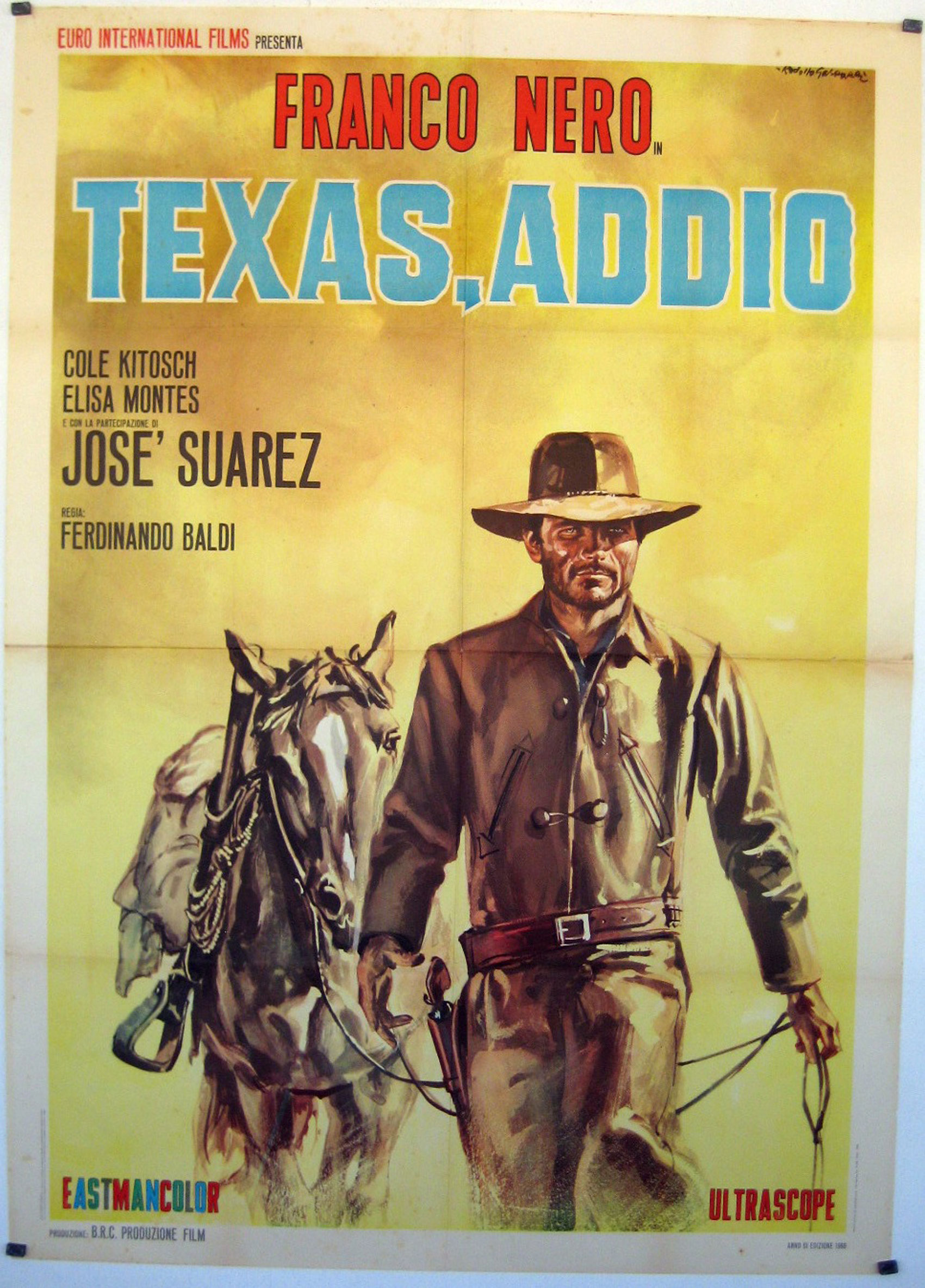
Texas, addio (Goodbye Texas), 1966
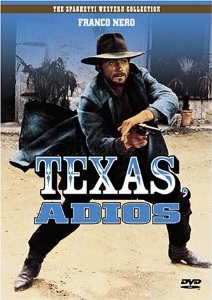
On Region 1 NTSC DVD,
with both the Italian and English dialogue options.
Sergio Corbucci had defected by this time.
His day-to-day position as film director at B.R.C. was taken over by Ferdinando Baldi.
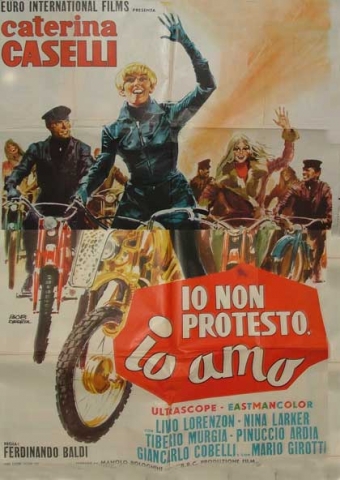
Io non protesto, io amo (I’m Not Protesting, I’m Loving), 1967
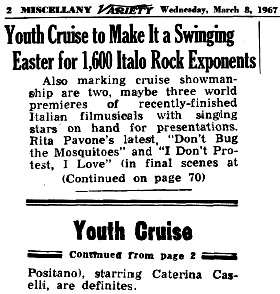
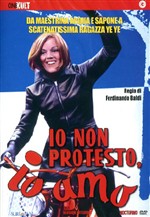
Region 2 PAL DVD
in Italian with optional Italian captions.
Unfortunately, I have yet to meet more than one or two people
who can sit all the way through this preview.
Sometimes life can be so lonely, you know?
Oddly enough, though, there’s frightfully little direct evidence that Franco Rossellini coproduced this movie.
“B.R.C. Produzione” for this movie only changed its name to “B.B.C. Cinematografica.”
Under this new “B.B.C.” moniker, the company also hoped to do a film called The Woman
(which was never made), but during the initial planning stages the company reverted to its original name of “B.R.C.”
So “R” seemed to have gone off on his own, at least for a few days, before returning to the fold.
The two “B”s must have been either the two Bolognini brothers, Manolo and Mauro,
or they could have been Manolo Bolognini and Ferdinando Baldi.
I would pay money to find out exactly what happened.
Does anyone still maintain the corporate records?
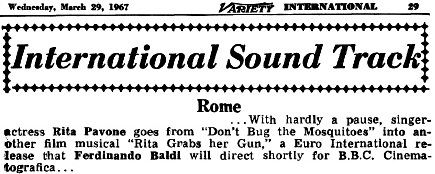
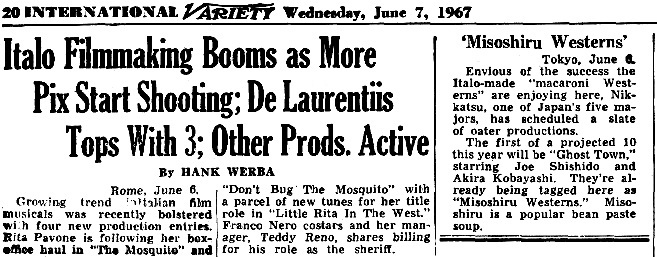
This was supposed to have been a sort-of-a-follow-up to Django,
and Franco Nero was supposed to have appeared in it,
as we can see from the above news clip,
but things changed for whatever reason and someone else played Django’s brief cameo.
The plan to have Nero reprise his rôle is a bit of circumstantial evidence
to support the hypothesis that Franco Rossellini was a coproducer.
There’s more, too.
It was Franco Rossellini who first induced Mario “Massimo” Girotti to use an American-sounding name.
Girotti chose “Terence Hill” from a list of proposed names because his mother’s initials were the inverse: “H.T.”
And when we check the records, we discover that Little Rita nel west
was indeed Girotti’s first use of the pseudonym “Terence Hill.”
And there’s more evidence too, as we shall see shortly.
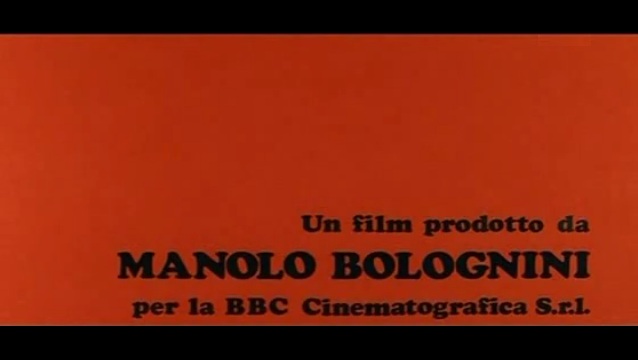
In any case, the IMDb sort-of-wrongly lists this as “B.R.C. Produzione.” Whatever.
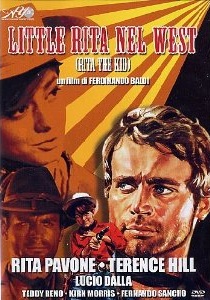 Region 2 PAL DVD. “New digital transfer from the original integral negative in the correct 2.35:1 cinema format optimized for 16×9.” Well, so it says.
It has most of the musical numbers, but at least one song was physically chopped out of the master.
The DVD is in Italian with optional Italian subtitles,
and it has an option for the English dialogue which has precious little to do with the Italian original.
I could get only a few lines into the English dub before I had to shut it off.
The English dub was not a translation; it was a wholesale rewrite.
Where the Italian was intelligent and poetic, the English was puerile and embarrassing.
About 90 seconds was all my nerves could take. |
The following song is deleted from the above “integral” DVD edition:
And if that’s not distressing enough for you, well,
most copies of this movie don’t have any musical numbers at all:
And if that’s not distressing enough for you, well,
most copies of this movie don’t have any musical numbers at all:
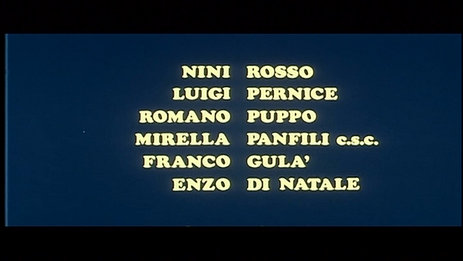
Ah! But wait! What is this?
This is the third and conclusive bit of circumstantial evidence that Franco Rossellini was the coproducer:
“Enzo di Natale.”
What does that name mean to you?
Well, here’s what it means.
His real name was Vincenzo Natale (without the di).
He was Franco Rossellini’s bodyguard from 1971 until the end,
and he was also Franco’s closest friend.
I don’t know which part he played in the movie.
So, if you happen to know,
please write to me right away!
I would be forever grateful. Thanks!
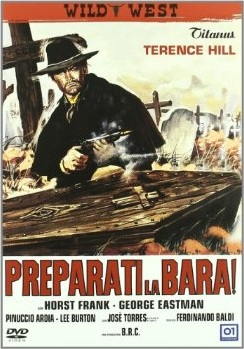 Region 2 PAL DVD in Italian with optional Italian captions. |
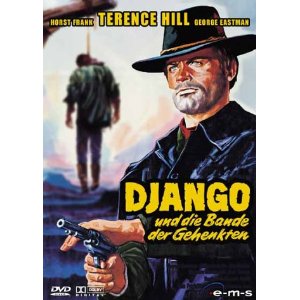 Region 2 PAL DVD option for either the German dub or the English dub. |
AETOS FILM
There was now a change.
Franco Rossellini either distanced himself from B.R.C. or he resigned altogether.
He set up a new production company called Aetos Film. Here is “International Sound Track,”
Variety (weekly), Wednesday, 13 March 1968, p 30:

If the legions of admirers of EuroExploitation flicks only knew that Franco Rossellini coproduced so many of their favorite movies,
he’d be a cult hero.
For better or worse, he took the money anonymously, which is why he’s now forgotten.
The movies on which he did proudly display his name are an entirely different sort of beast.
This is about the most abstract movie I’ve ever seen.
I saw it only once, at the June 1990 Pasolini retrospective at Jackman Hall at the Art Gallery of Ontario in Toronto.
It was so abstract I couldn’t understand it until an hour later as I was driving home.
You think I’m exaggerating?
Well here’s a typical scene, featuring Pasolini’s mother Susanna as the gravedigger
and Laura Betti as the house servant who undergoes catharsis:
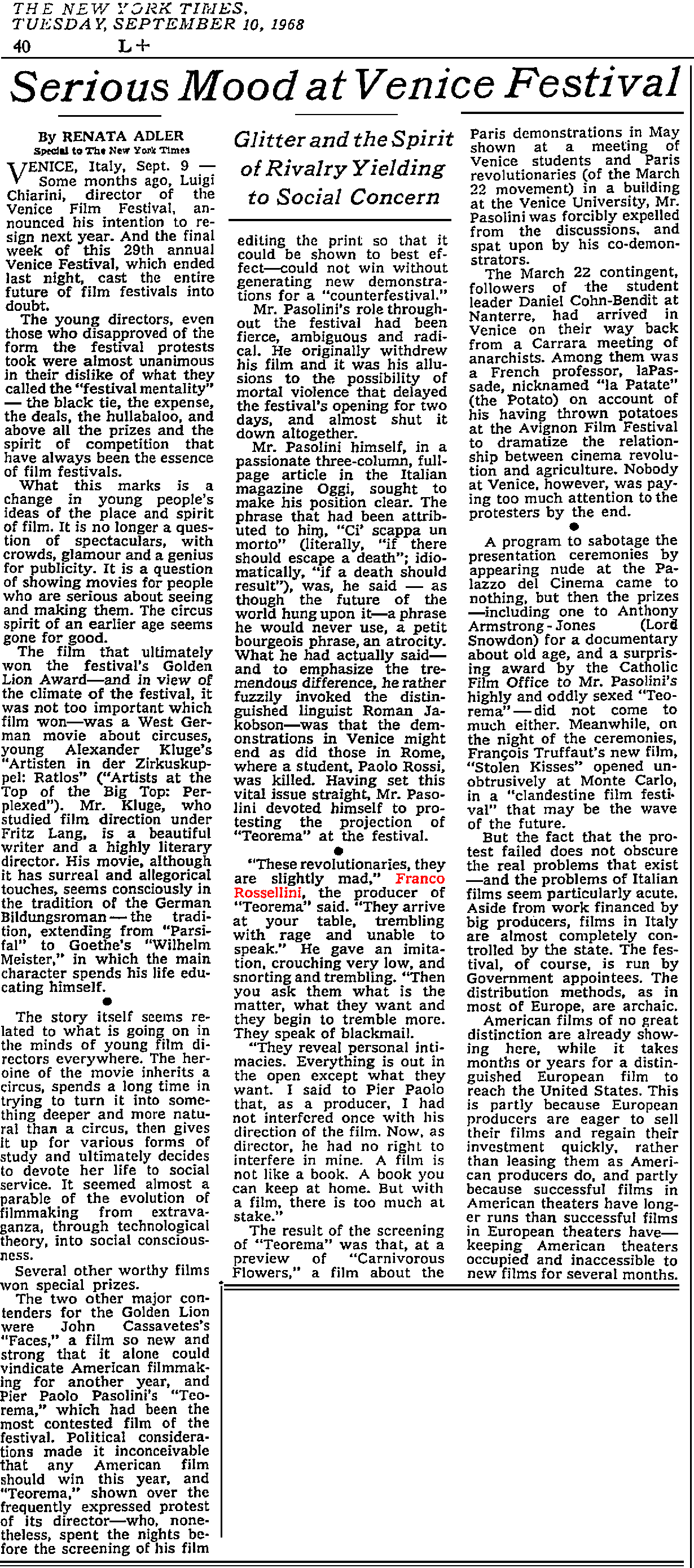

Pasolini had wanted to spend the rest of his life making goofy comedies with Totò, but after only three movies Totò suddenly died.
Pasolini was was devastated.
Instead of making more comedies he started making stuff like this.
Some folks who worked for B.R.C. seemed to have worked at Aetos too,
and Carambola (1974) was a coproduction of B.R.C. and Aetos, though Rossellini had surely left both firms by that time.
There was definitely some sort of continuity, but it’s all rather nebulous.
In any case, Aetos went into hibernation for a few years upon the release of Teorema
and so Franco began to freelance.
A FRANCO ROSSELLINI PRODUCTION
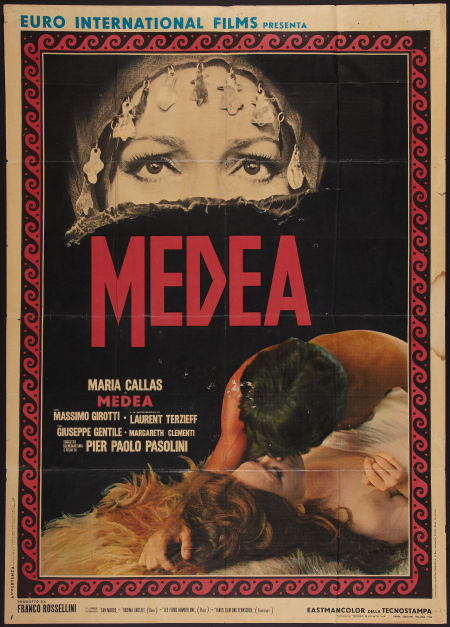
Medea, 1969
Another abstract movie, with almost no dialogue.
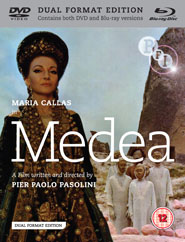
Region 2/B PAL DVD and Blu-Ray,
with both the Italian and English dialogue tracks.
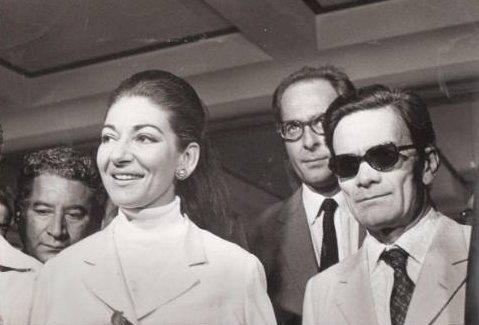
Arriving at the airport.
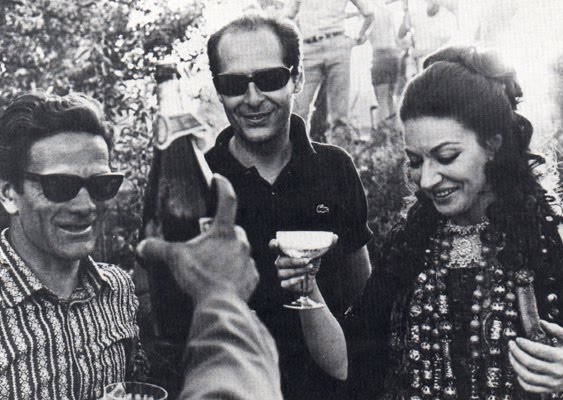
“Christening Medea — 5 June 1969”: Pier Paolo Pasolini, Franco Rossellini, and Maria Callas.
If you know who owns the rights to this photo, please write to me. Thanks!
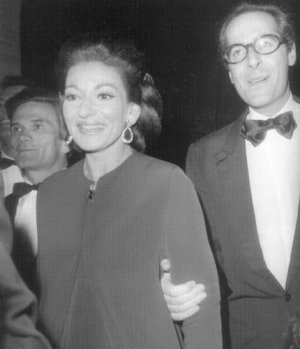
If you know who owns the rights to this photo, please write to me. Thanks!
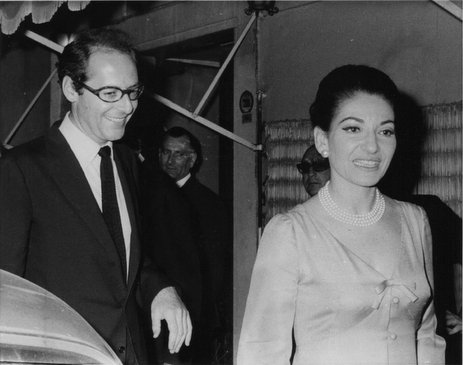
Age 33, with Maria Callas. UPI photo.

According to
the Wikipedia, Felix was founded in 1970 by Franco Rossellini, Sergio Galiano, and Donato Leoni,
and this was its first movie.
No. That can’t be.
Medea was made in 1969, and besides, here are the credits as they appear on screen:
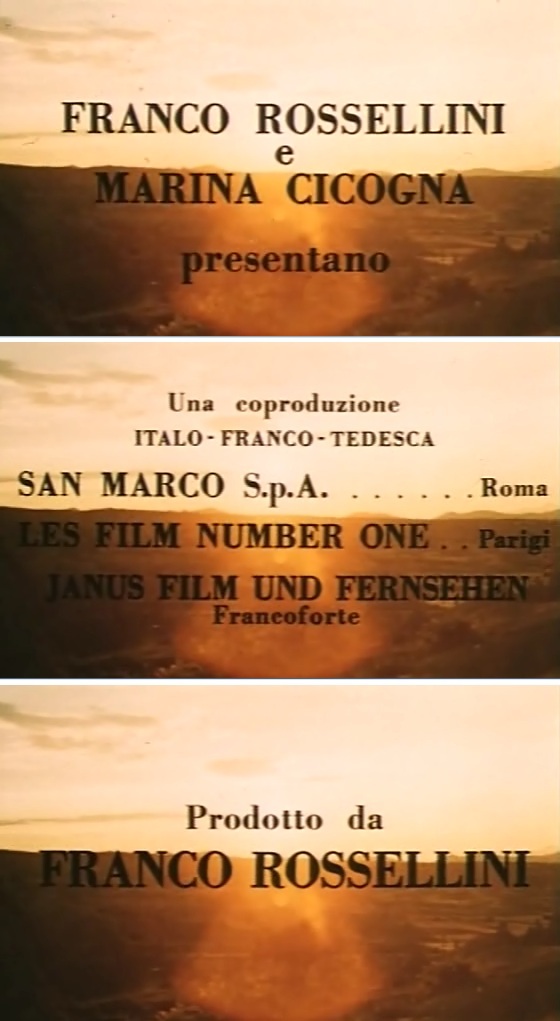
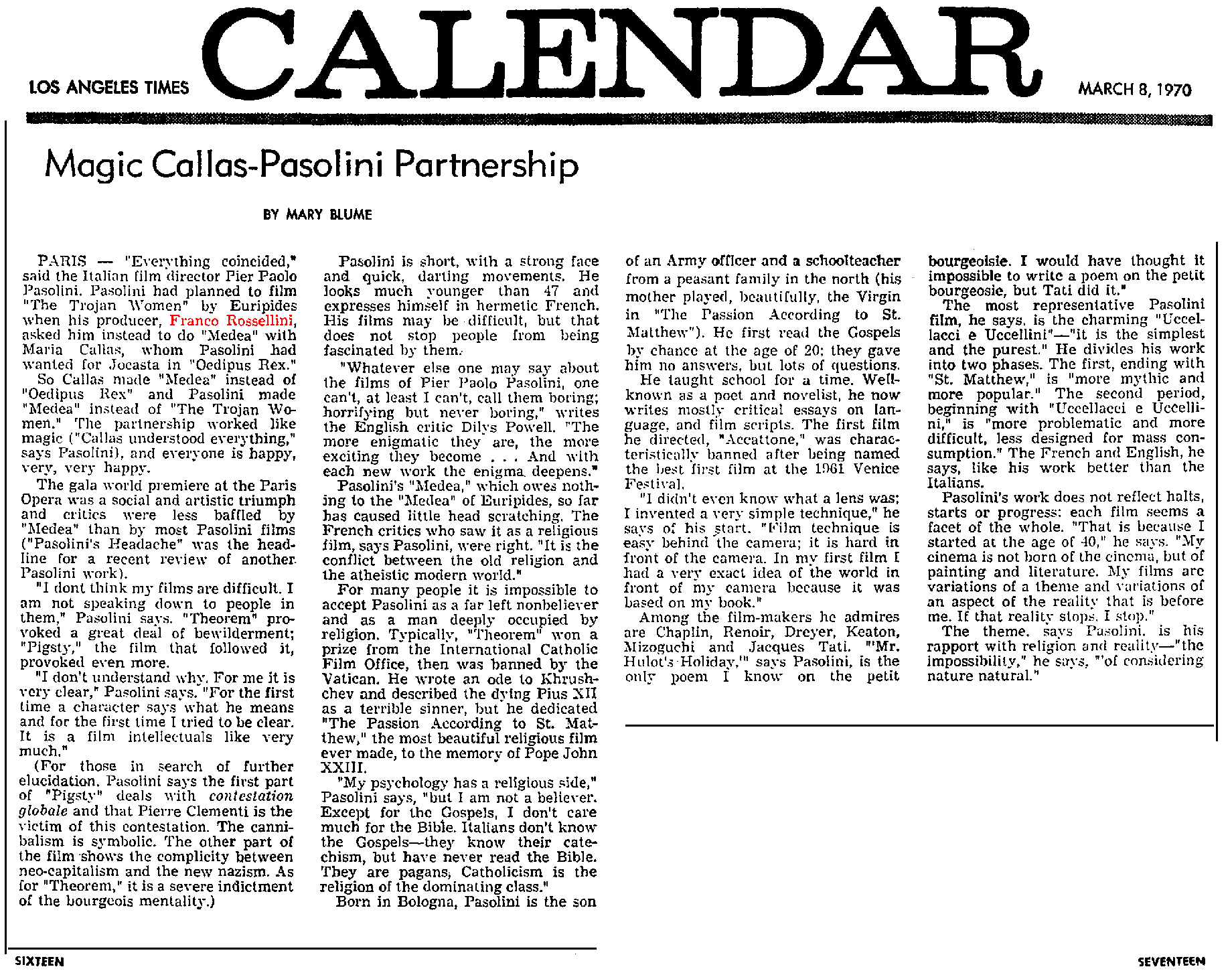
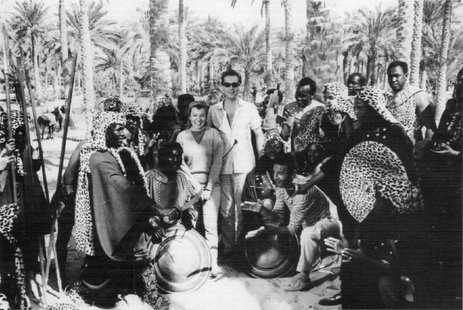
Circa 1970. No idea what this is about.
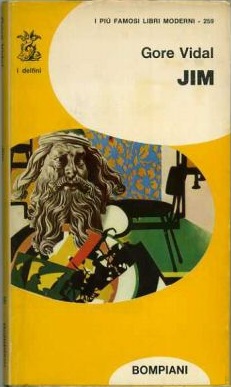


This movie was going to be called Jim Now, and it was only loosely inspired by Gore’s famous novel The City and the Pillar,
known in Italy usually under the title Jim (sometimes as La statua di sale and originally as La città perversa).
I read the script, and it’s a hoot.
In the archive that’s always as quiet as a tomb,
I created a bit of a scene when I burst out laughing.
This script is priceless.
Gore’s tenant, Jack Silverman, devoted his energies
to raising funds for this project, but the results were disappointing.
Avco-Embassy, United Artists, Palomar, Playboy, Cinerama, World Film Services, and Josef Shaftel Productions
all rejected the script, and Columbia as well as Alberto Grimaldi’s P.E.A.
didn’t seem to be overly enthusiastic either,
apparently because no major studio would back a film directed by Gore Vidal,
though any studio would pay top dollar for a movie written by Gore Vidal.
If you can explain the logic behind that, I’ll give you a prize.
Without financiers, Franco Rossellini was unable to produce this movie.
Too bad.
Not only would it have been groundbreaking, with the potential of altering the movie industry forever,
it would have been a laff-riot.
It would be so nice if Gore’s estate would publish this script someday.
Here’s an interesting little story, possibly apocryphal, from The Los Angeles Times of 27 February 2005, page E30,
in an article by Patrick Goldstein entitled
“The Oscars;
‘Midnight
Cowboy’ and the Very Dark Horse Its Makers Rode in On;
With Its Down-and-Nearly-Out Crew, Quirky Casting and X Rating,
No One Expected Mainstream Hollywood’s Seal of Approval”:
...[Director John] Schlesinger and [producer Jerome] Hellman auditioned a number of writers, including Gore Vidal, who told them the book was rubbish, saying, “I did it all in ‘The City and the Pillar’ years ago — why don’t you make that instead?” They eventually hired Jack Gelber, anoff-Broadway playwright who dropped out after doing a lackluster first draft, telling Hellman that “the movie will never work if Ratso Rizzo has to limp.”...
That’s even more interesting when you realize that some of the Warhol crowd appeared in bit parts in Midnight Cowboy. They were Franco’s friends!
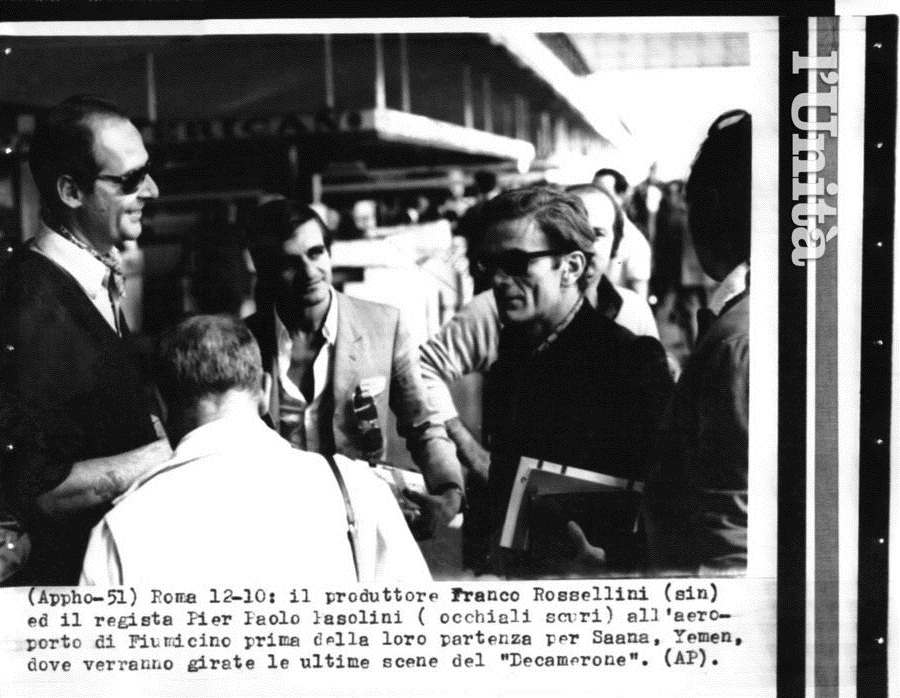
Rome 12 October: Producer Franco Rossellini (left) and director Pier Paolo Pasolini (dark glasses) at the Fiumicino airport prior to their departure for Sana’a, Yemen, where they will film the final scenes of The Decameron.
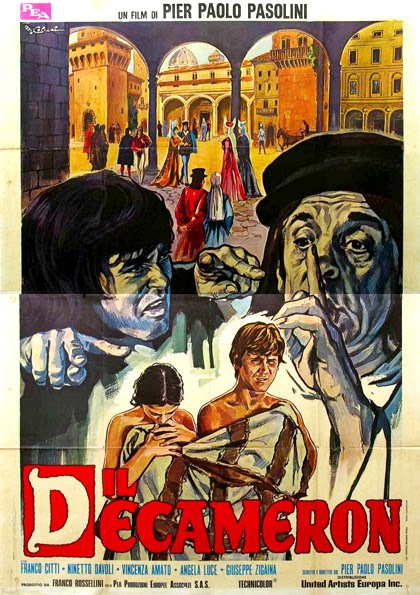
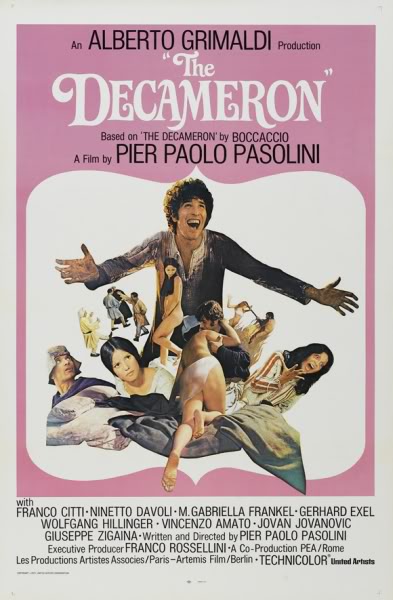
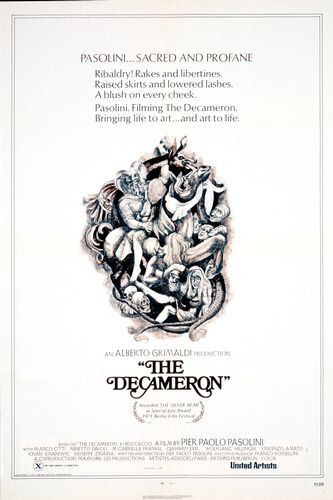
Il decameron (The Decameron), 1971
Franco Rossellini was Executive Producer
on this Alberto Grimaldi Production.

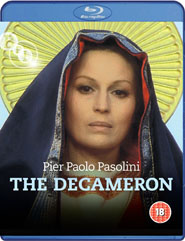
Region 2/B PAL DVD/Blu-Ray,
with both the Italian and English dialogue tracks.
Pasolini started making comedies again. Hooray!
Again, the Wikipedia states that this was Felix’s second movie, but again, that cannot possibly be. The credits don’t mention Felix:
Again, the Wikipedia states that this was Felix’s second movie, but again, that cannot possibly be. The credits don’t mention Felix:
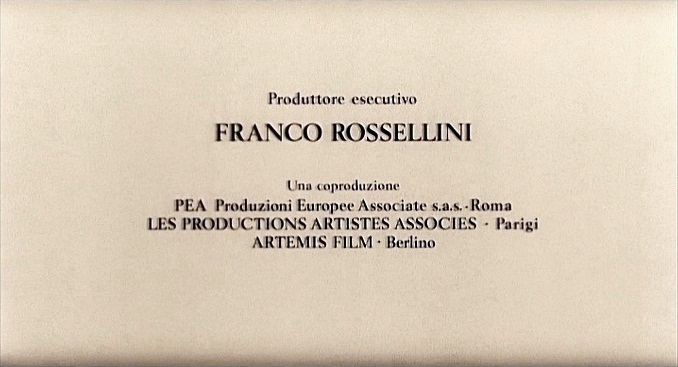
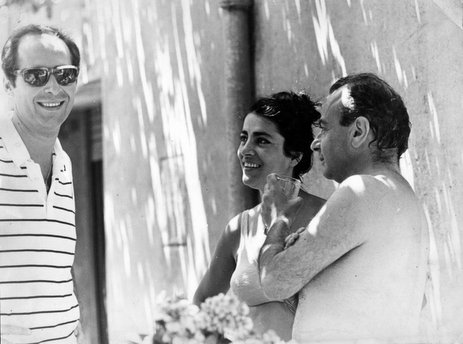
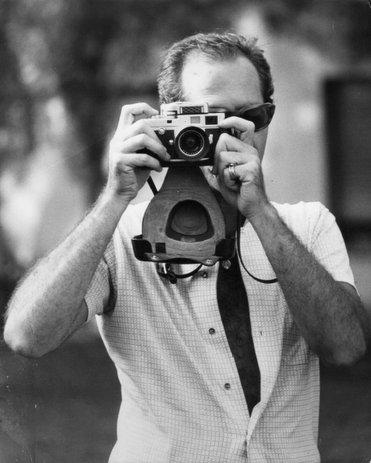
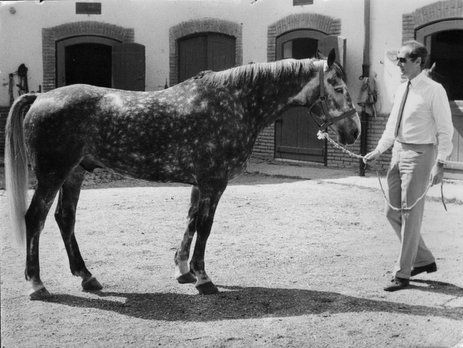
These three photos, presumably from circa 1971, were shot by Gianni Tatti. If you know how I can get hold of the currents rights holder, please write to me as I would like to license these images. Thanks!
Le mura di Sana (The Walls of Sana’a), 1971
(Unrelated to Franco Rossellini, but related to the above, is this little TV documentary that I never thought I’d be able to see again:
The Form of the City Part One and
Part Two.
Pasolini was one of those rarest of people: He understood history and he understood architecture and he understood city planning —
and he understood how they all affect us at every level of our being.)

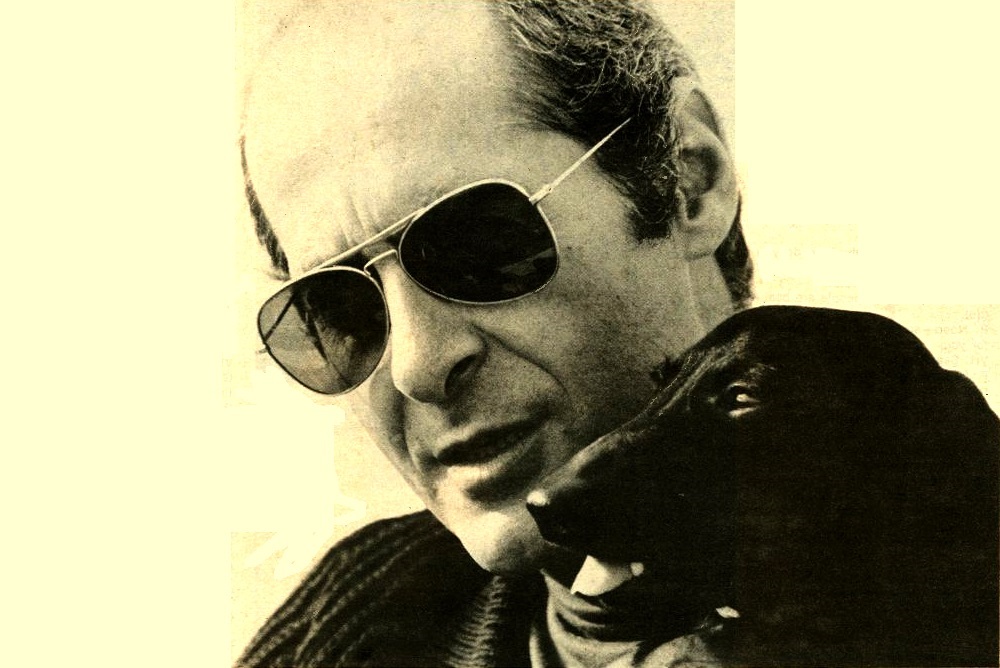
Franco and Felix
After years of producing movies, Franco Rossellini was finally able to found his own firm,
FELIX CINEMATOGRAFICA S.r.l.,
named in honor of his dachshund.
His business partners were Sergio Galiano and Donato Leoni.
Felix’s first movie was Brothers Blue.
(The IMDb
is wrong to state that the 1968 Anita Ekberg vehicle known variously as
Malenka and Fangs of the Living Dead
was by Felix Cinematografica.
The IMDb
is also wrong to state that Brothers Blue was produced by B.R.C.
Wikipedia, mentioned above,
is wrong about Felix having been founded prior to 1972.)
The proposed Rossellini / Warhol / Morrissey production must have been
Long Live Sandokan.
“Bruno Amendola” was surely a mistranscription or misprint for
Bruno Corbucci and Mario Amendola,
the director and screenwriter respectively.
I wonder if when the license lapsed this eventually became a TV movie called
La tigre è ancora viva: Sandokan alla riscossa!,
produced in 1977 by Elio Scardamaglia for Rizzoli film, directed and cowritten by Sergio Sollima.
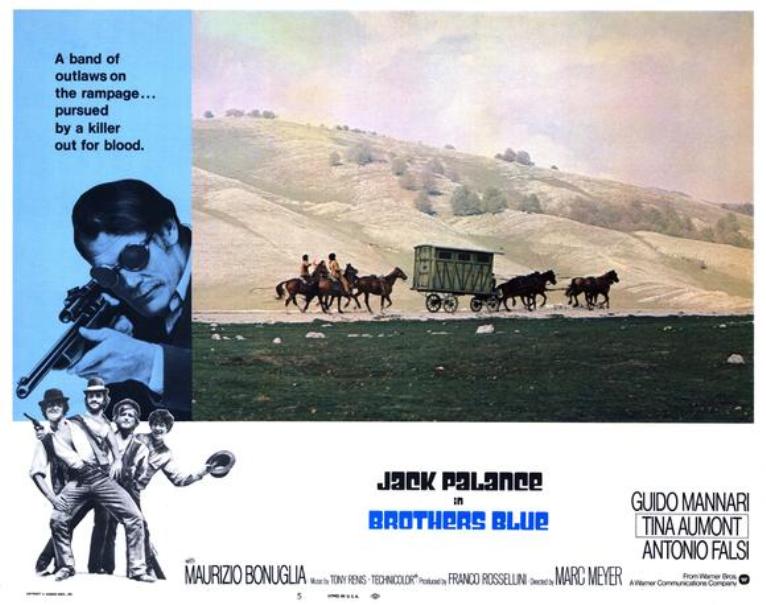
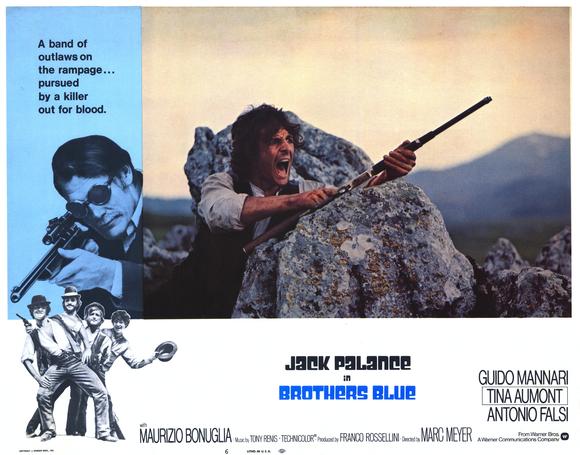
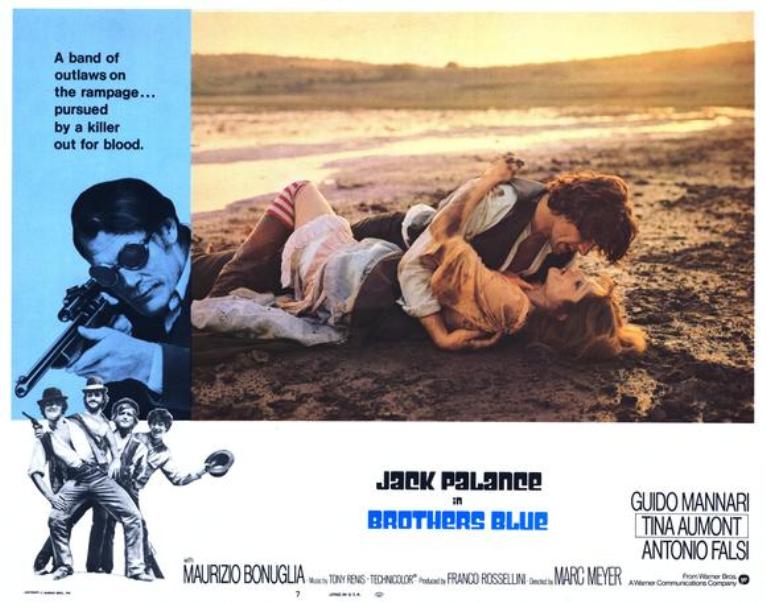
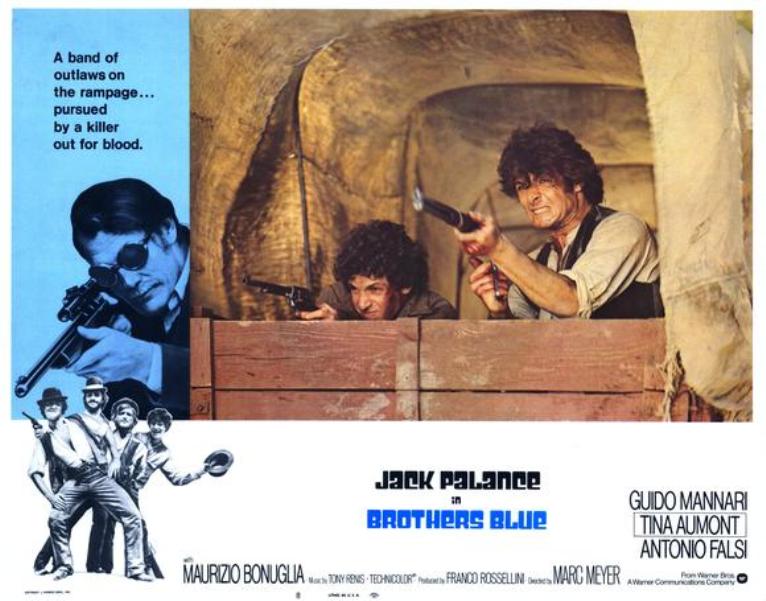
Yes, when he grimaces, Guido Mannari is entirely unrecognizable. That facial transformation in action is so surreal and nightmarish that it’s shocking.
Blu Gang e vissero per sempre felici e ammazzati
(The Short and Happy Life of the Brothers Blue), 1972
Look how interesting this is.
The above lobby cards seem to have been prepared for the US market, even though almost no US cinemas in 1973 were using lobby cards anymore.
And the poster was also US size and format, which means that Warner Bros were definitely preparing for a US release.
I finally managed to purchase a mint-condition original one-sheet poster, and though it was definitely intended for the US,
it was rubber-stamped FOREIGN, which, to me, indicates that after ordering the posters printed, WB decided not to release the movie here
and designated the accessories to be used for the international market instead.
There’s more.
We can see from the news clips above that the director was Franco’s old colleague Luigi Bazzoni.
Look, though, at what the publicity material said!
“Directed by Marc Meyer”!
An American-sounding name was used to make the movie seem American.
Nonetheless, this was a spaghetti western (or, as the Italians would call it, a macaroni western).
It was shot in the Spanish desert, as was typical.
What was not typical was the atmosphere and style, unlike any other spaghetti western I’ve ever seen.
Wowee! Somebody just uploaded it to YouTube, https://www.youtube.com/watch?v=hIfTmmojRnQ.
Huh. Have the rights expired? Anyway, download it before it vanishes.
Also, did you you notice that something is missing from the poster and from the lobbies?
See it? Look!
There’s no rating!
These were teasers.
Once the MPAA’s Ratings Board were to have a chance to review the movie and assign it one of the alphabet soup of ratings,
the poster and the lobby cards would be revised to include that rating.
But that never happened, because this movie was never released in the US.
The Felix/Warner partnership, which began so grandly, bore no fruit.
Brothers Blue wasn’t released.
Long Live Sandokan was abandoned.
Roberto Rossellini withdrew Caligula when Warner Bros. insisted on big names rather than unknowns.
And then Warner Bros. instead opted to produce Lina Wertmüller’s rival Caligula
with Jack Nicholson, Burt Lancaster, and Giancarlo Giannini — and abandoned that project, too, as we know.
What went wrong?
Even if the future flicks were all canceled,
why wasn’t the completed Brothers Blue released?
We may never know.
Brothers Blue was never shown commercially at a US cinema.
It was never shown on US television, nationally or locally.
It was never released on home video.
As a matter of fact, it doesn’t seem to have had much of a release anywhere.
The Italian dub was released briefly.
And there was even an Italian OST:
There seem to have been two Spanish releases —
or one release in more than one country under two different titles:
El Clan de la Muerte and Hermanos Azules.
There seems to have been a release in Portugal, A Vingança dos Irmãos Blue.
There was definitely a release in Brazil, O Clã da Morte.
There seems to have been a Greek release,
entitled something like Ἡ
ἐπιδρομὴ
τῆς
ἀγρίας
συμμορίας.
Some 8×10 glossies with English captions also mention that they were manufactured in
L’ÉTATS UNIS D’AMÉRIQUE,
which leads me to suspect that there was also a release in a French-speaking territory somewhere.
There seems to have been a Finnish release, Bluen jengi.
The releases must have been brief indeed.
After the initial fleeting flurry of screenings,
the movie was never reissued anywhere in any format at any time, as far as I can determine,
and it was certainly never released on home video.
That’s why this movie has been almost impossible to find.
But then somehow, somewhere, at some time, the English dub was shown on TV.
This probably happened only once.
Somebody recorded it on VHS.
And somebody posted video captures:
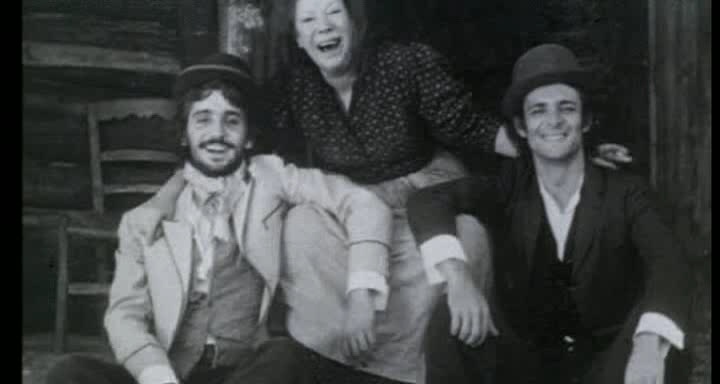
The late great Maria Michi.
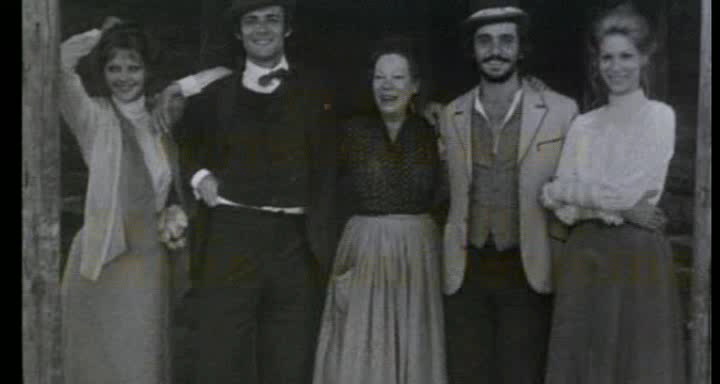
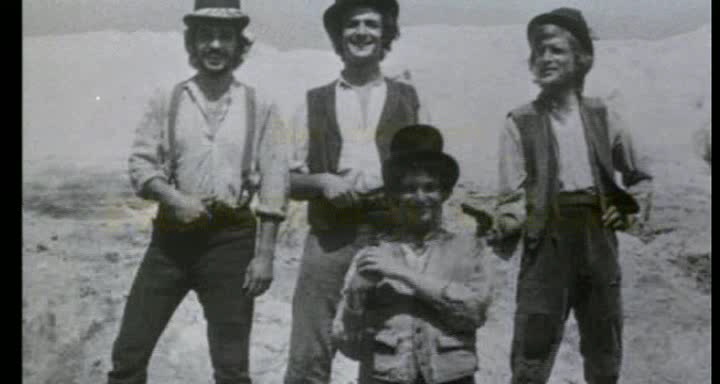
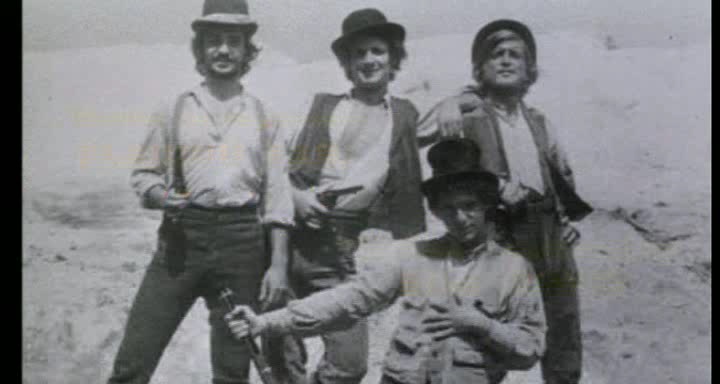
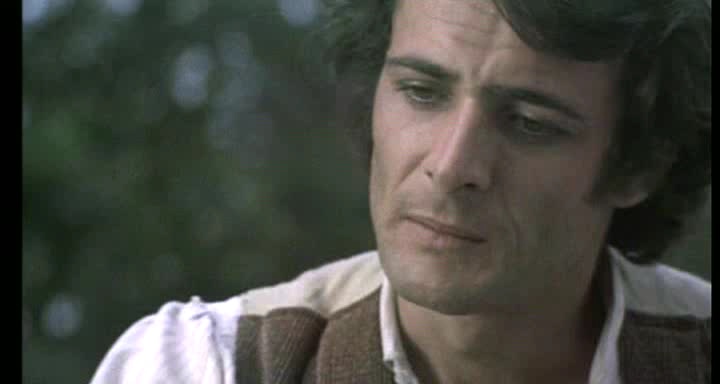
The late great Guido Mannari.
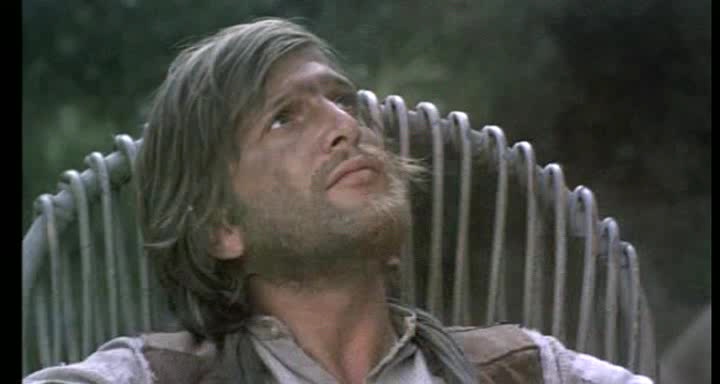
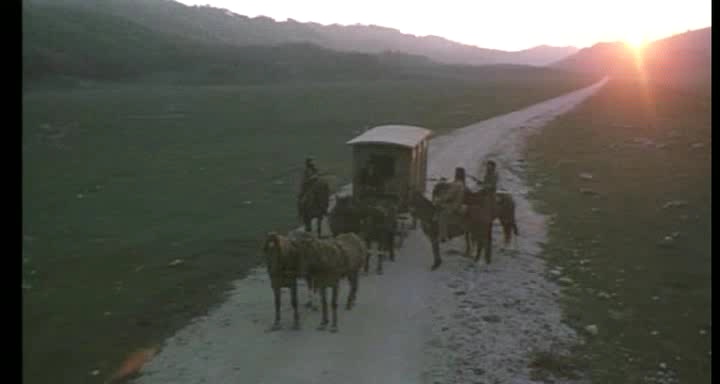
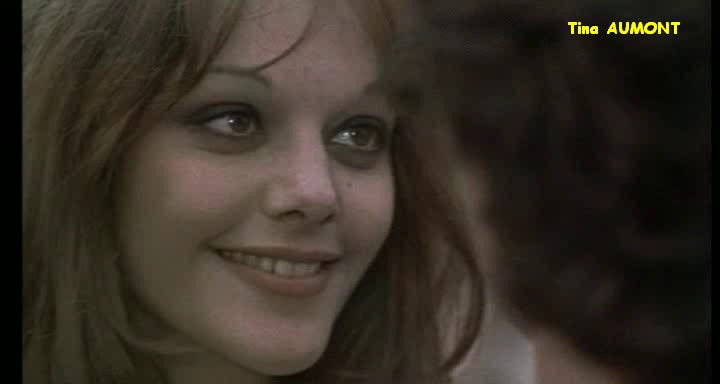
The late great Tina Aumont.
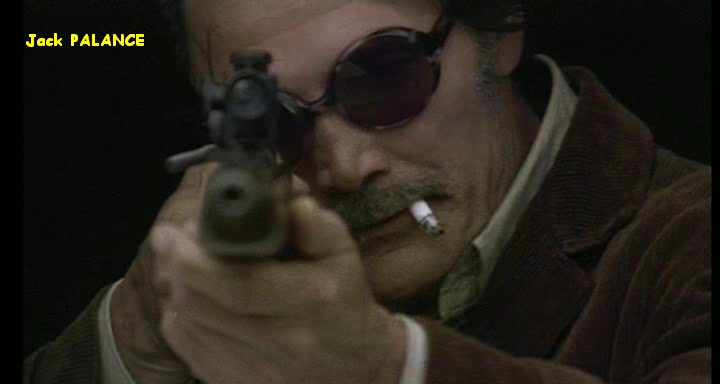
The late great Jack Palance.
And here are some publicity stills:
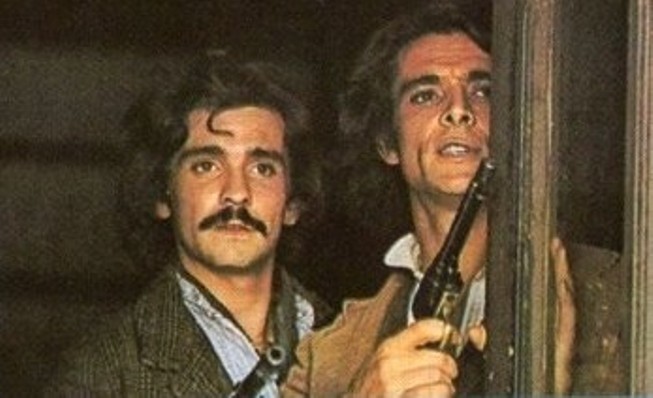
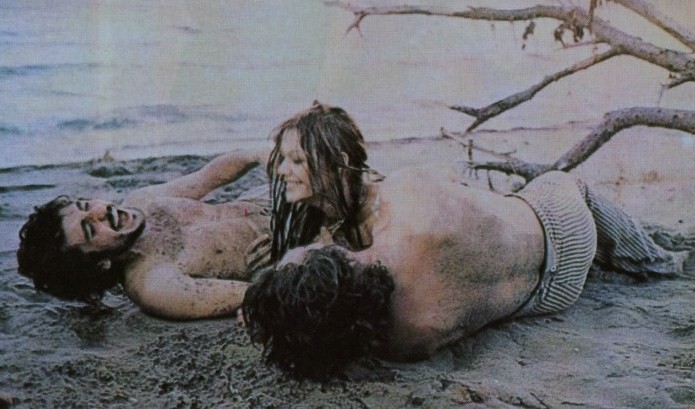
A couple of copies of that VHS were being privately circulated among a small select group of collectors,
but that tape never got out to the public.
Until now.
Note that this was taped off of a cablecast by TCM.
This was a “V.O.S.T.” (“Version Originale Sous Titre”)
which makes me guess this was shown in Québec.
Not a bad movie. Not bad at all. Actually quite fascinating.
If this had just been released in English-speaking markets and given proper promotion,
it would probably have been a huge hit, especially among high-school girls.
This was Guido Mannari’s only starring rôle, and what a star-making performance!
But almost nobody ever saw it.
Instead, I guess one of the producers or investors probably decided
this would better serve as a tax shelter or something worse, and so squelched it.
What a pity!
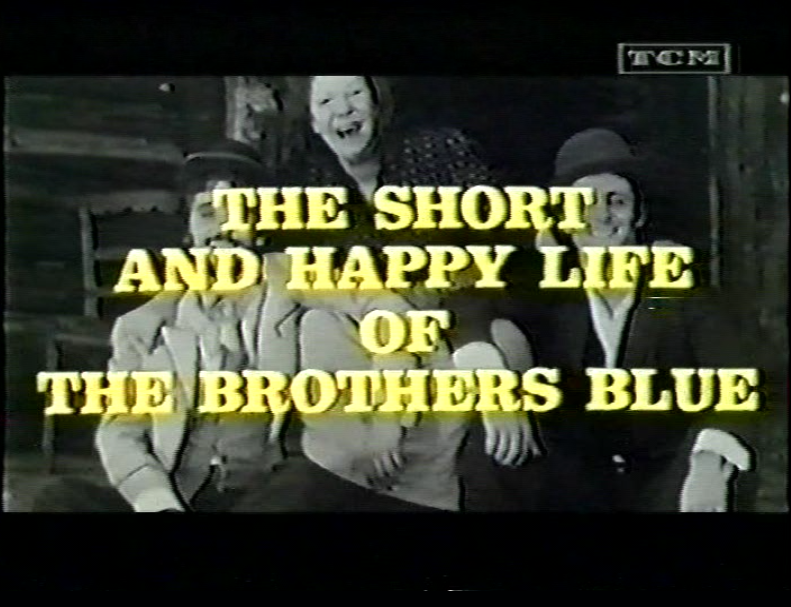
Antonion Falsi (BRC’s Bubù), Maria Michi (Roberto Rossellini’s Roma città aperta and Paisà as well as Tinto Brass’s Salon Kitty) and Guido Mannari (Franco Rossellini’s Il decameron and The Driver’s Seat and Caligula)
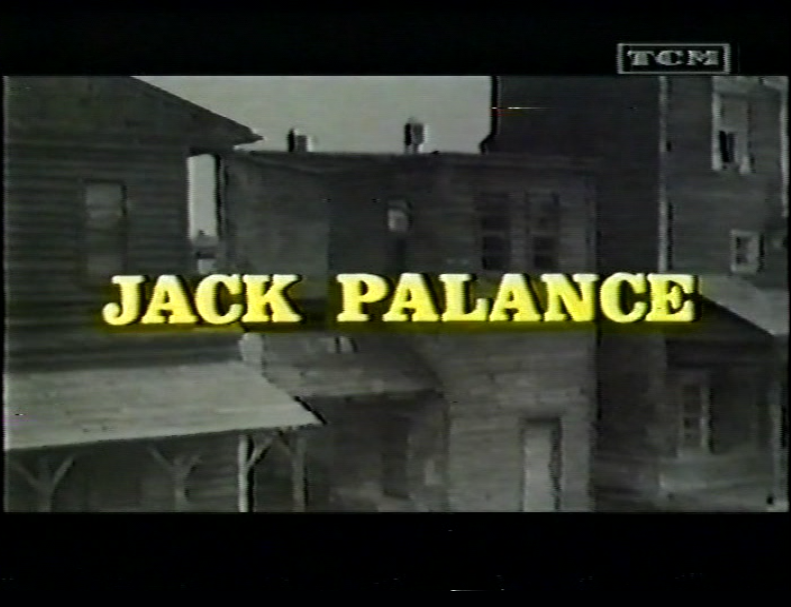
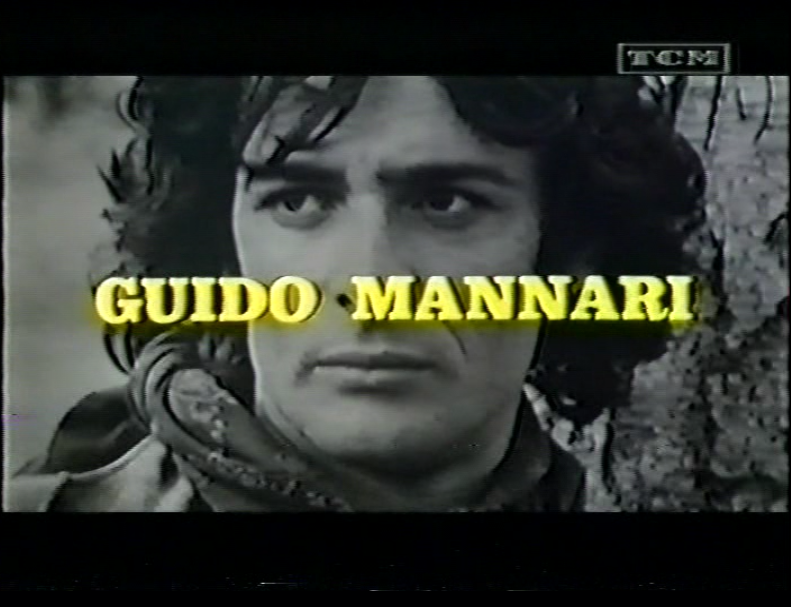
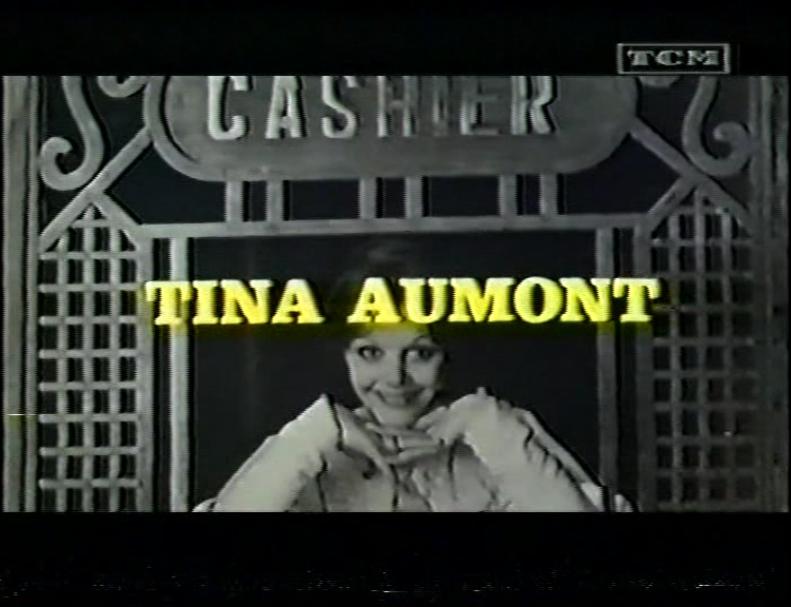
Tina Aumont (Tinto Brass’s L’urlo and Salon Kitty)
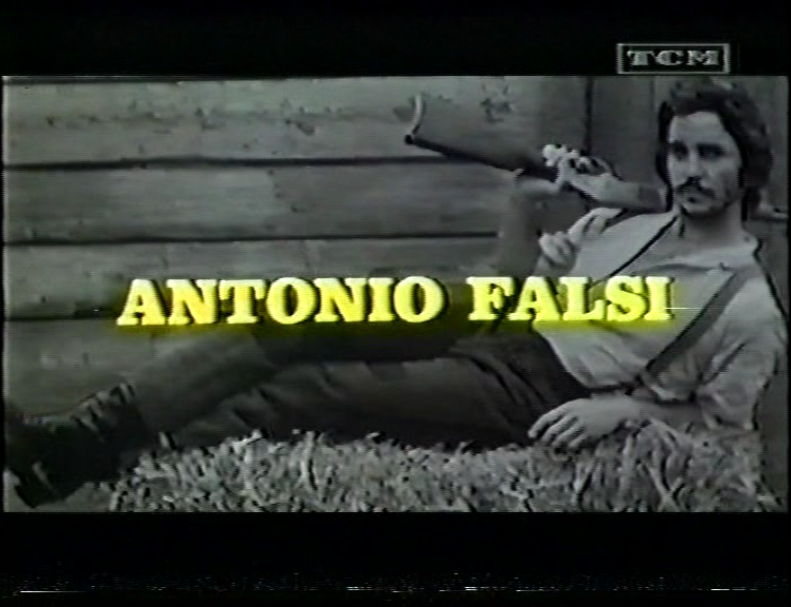
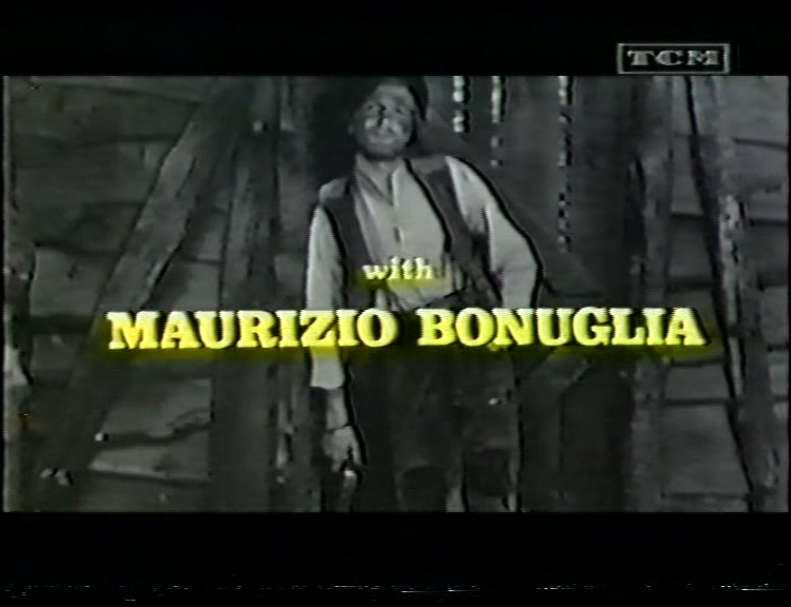
Maurizio Bonuglia (Franco Rossellini’s The Driver’s Seat)
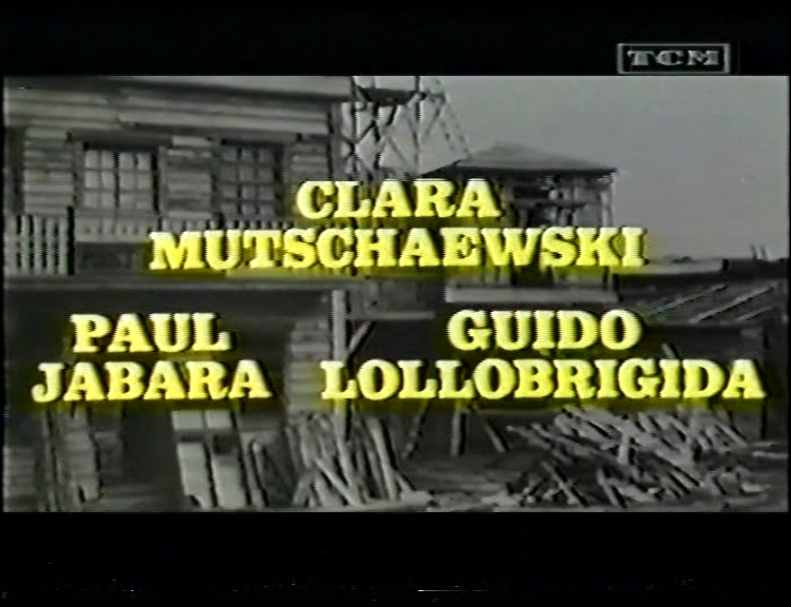
Clara Mutschaewski (adjunct secretary on Franco Rossellini’s Caligula)
Guido Lollobrigida (Franco Rossellini’s Preparati la bara!)
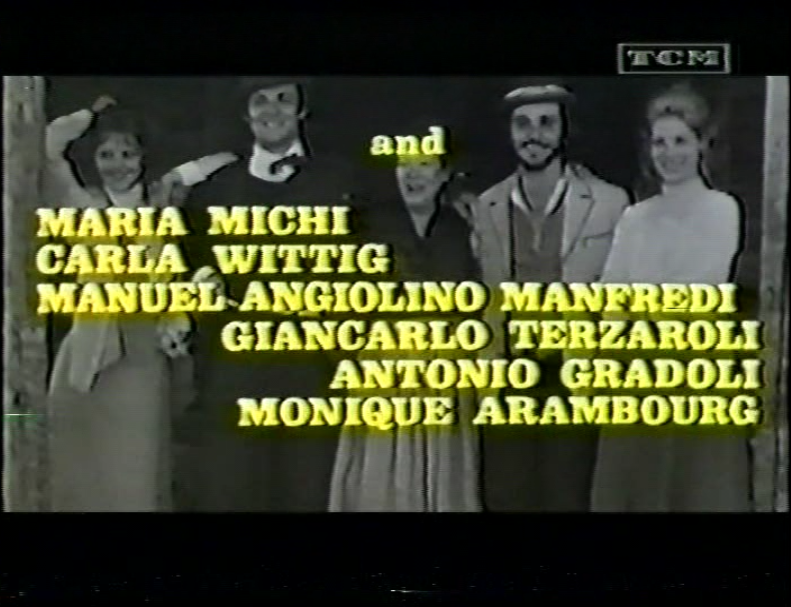
Tina Aumont, Guido Mannari, Maria Michi, Antonio Falsi, Clara Mutschaewski
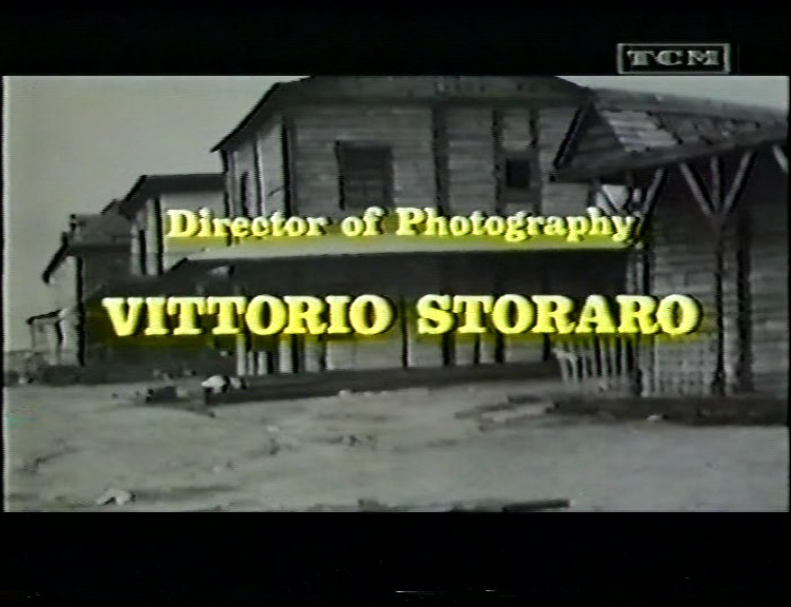
Vittorio Storaro (Franco Rossellini’s The Driver’s Seat)
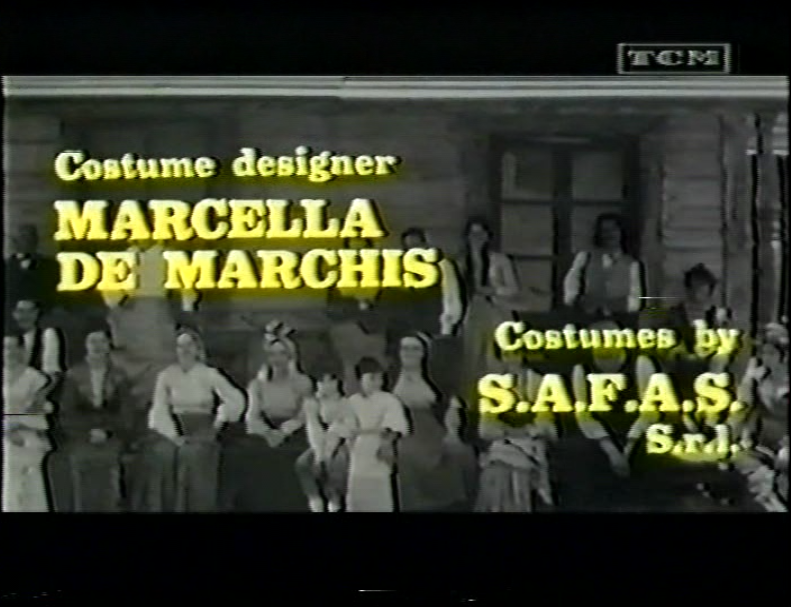
Marcella de Marchis (Roberto Rossellini’s ex)
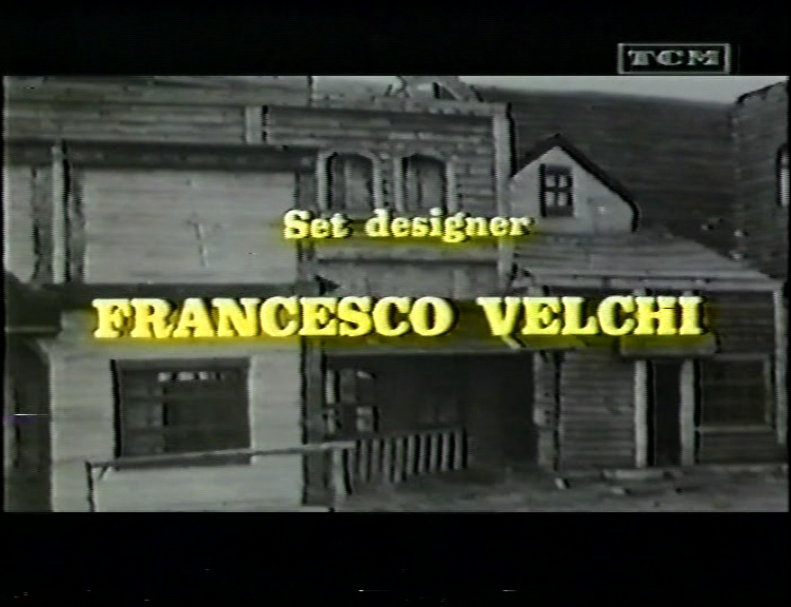
Francesco (Franco) Velchi (architect on Franco Rossellini’s Caligula)
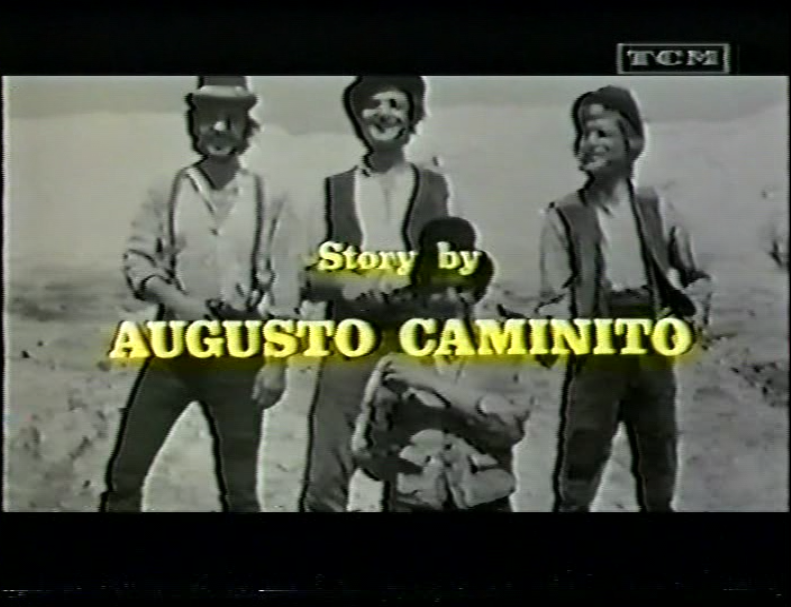
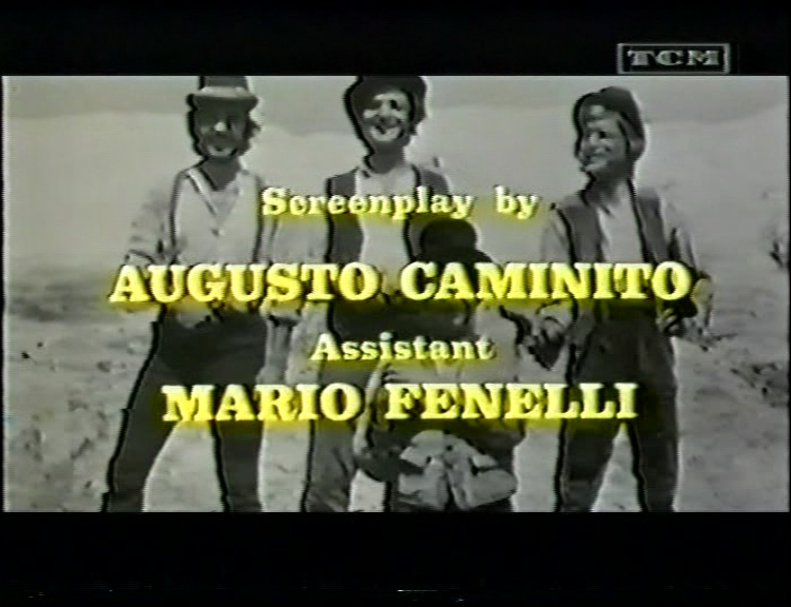
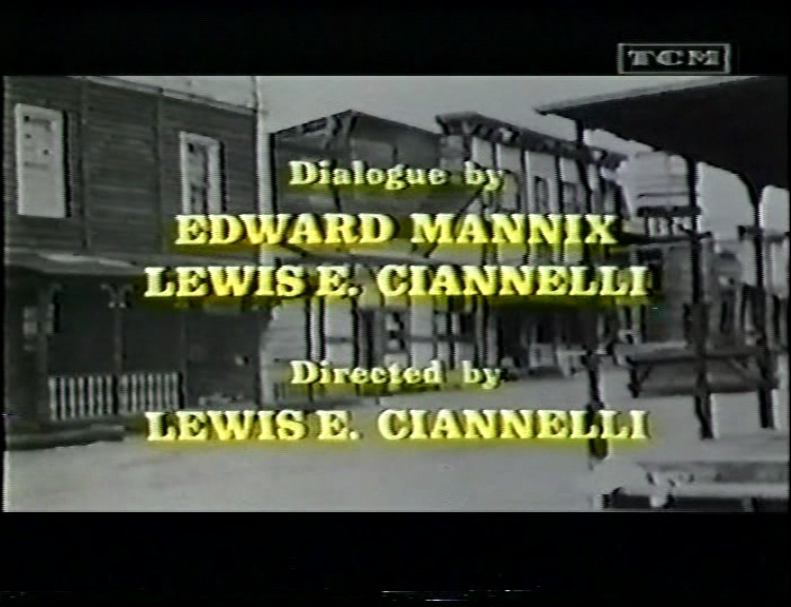
All the actors spoke English on camera,
though with such heavy French and Italian accents that they had to be dubbed.
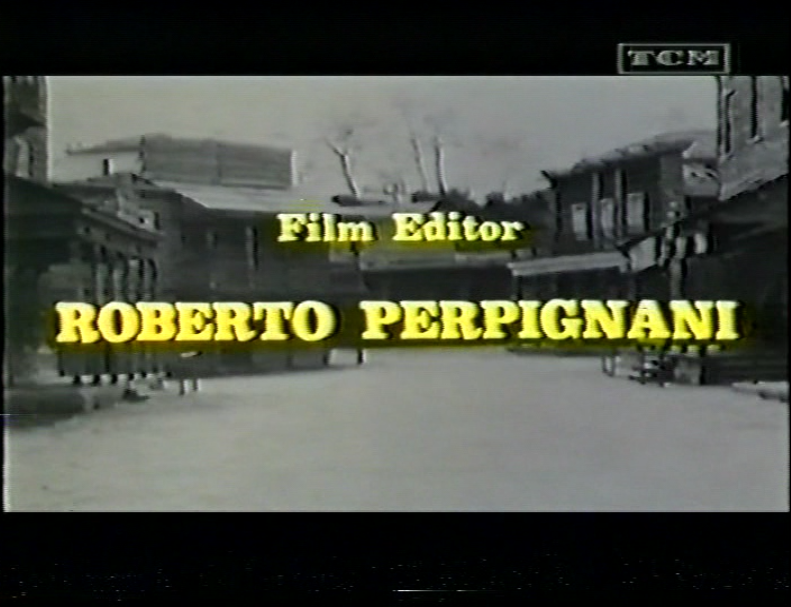
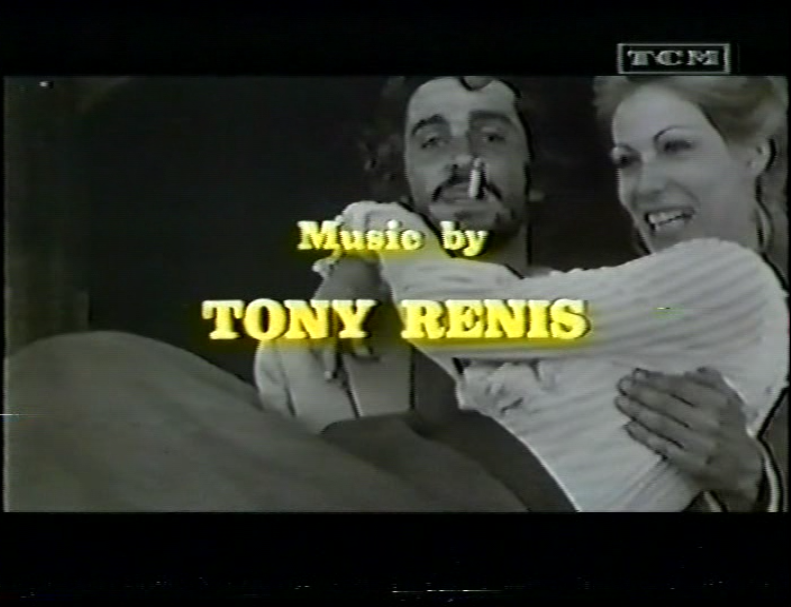
Ironically, one of his tunes was also used in The Blues Brothers, which is a strange sort of symmetry.
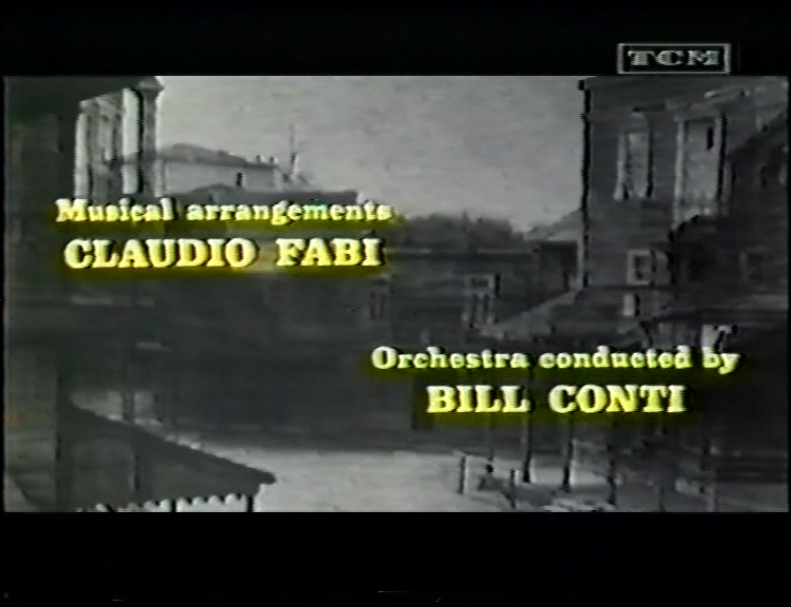
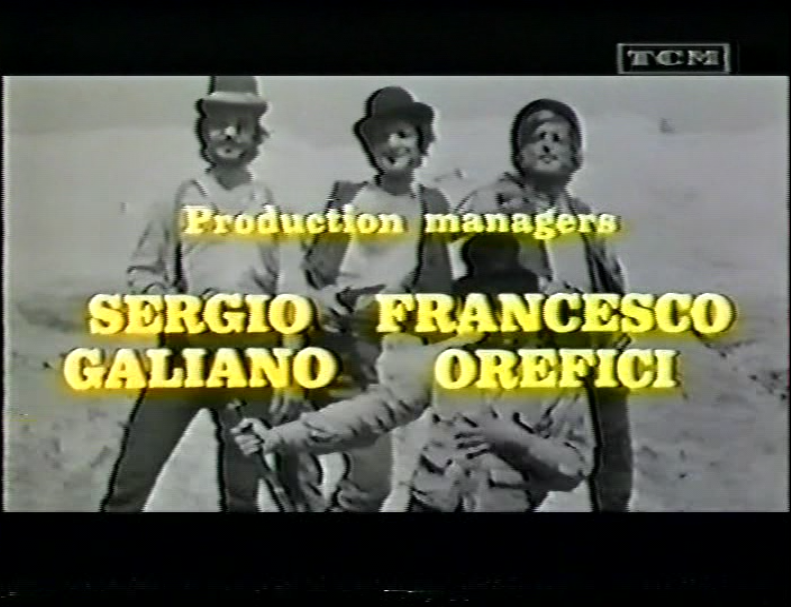
Sergio Galiano (production manager on BRC’s A Long Ride from Hell, production supervisor on Franco Rossellini’s Il decameron and The Driver’s Seat, and unit manager on Franco Rossellini’s Caligula)
Francesco Orefici (producer of Roberto Rossellini’s Agostino d’Ippona, production manager of Roberto Rossellini’s La lotta dell’uomo per la sua soppravivenza, production manager on Roberto Rossellini’s Socrate, production manager on Roberto Rossellini’s Cartesio, and production manager on Renzo Rossellini’s La città delle donne)
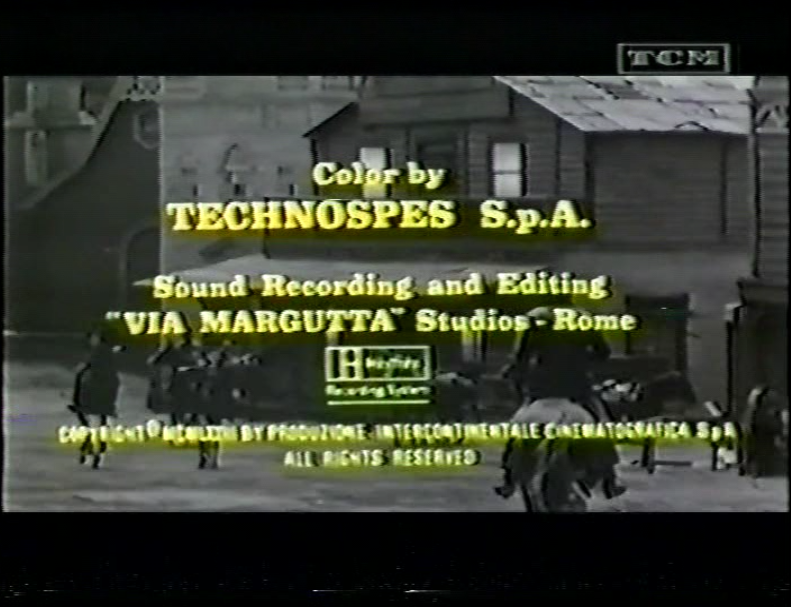
Copyrighted by Produzione Intercontinentale Cinematografica SpA. So if we can find out who inherited their copyrights, we might be able to trace this and clear the rights eventually.
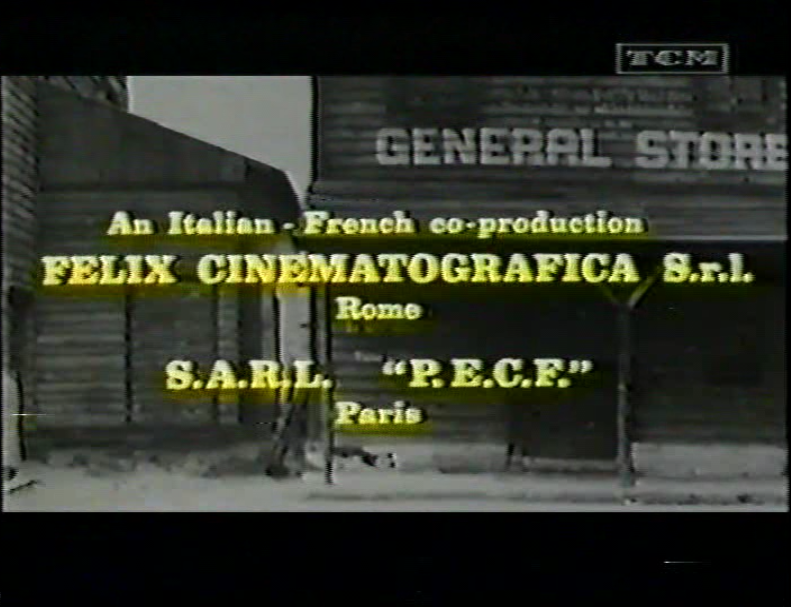
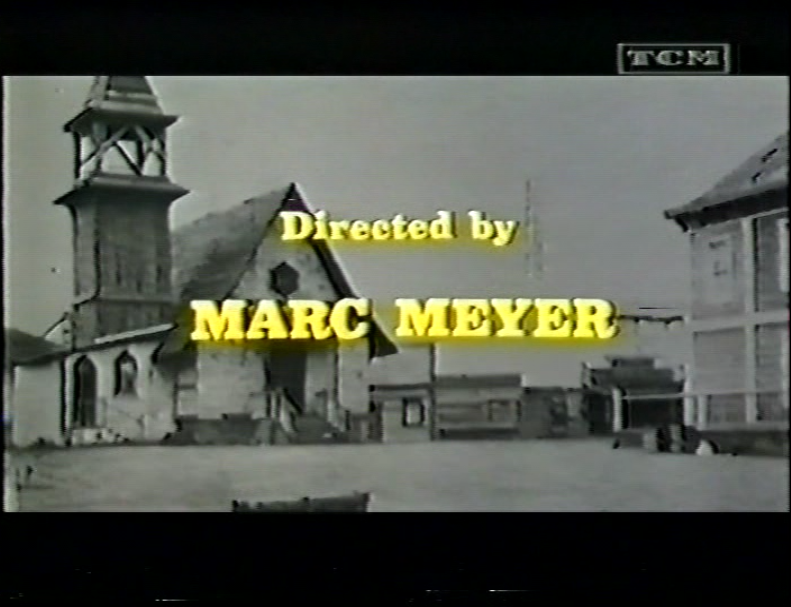
Pseudonym of Luigi Bazzoni, who codirected La donna del lago with Franco Rossellini
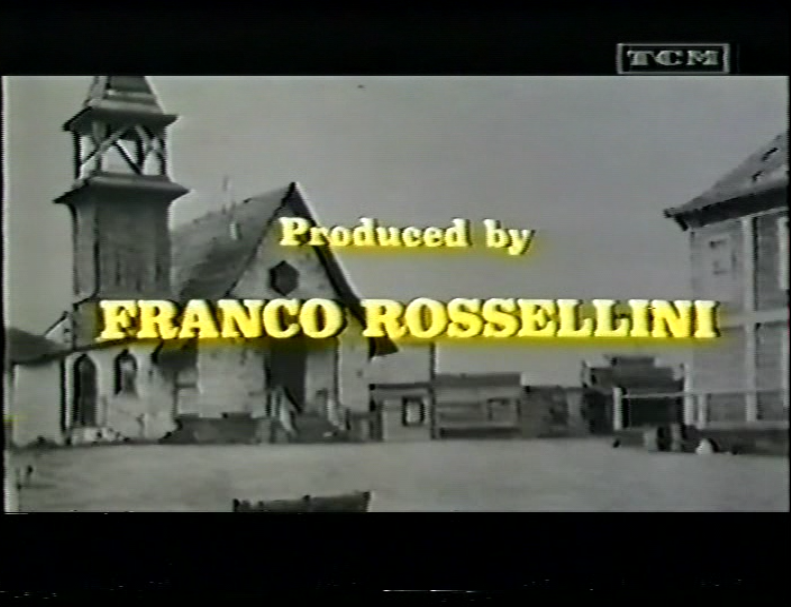
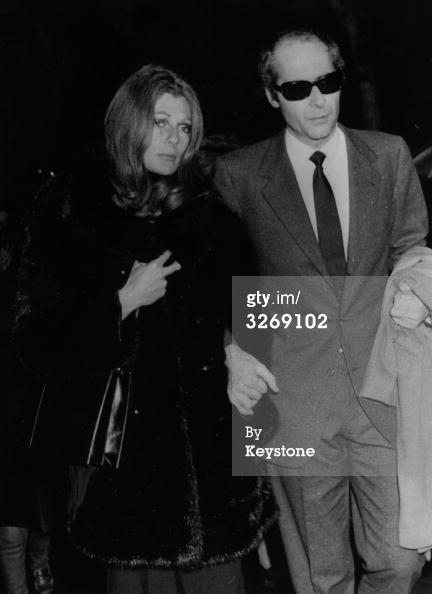
27th January 1973: Baroness Fiona Von Thyssen (former model Fiona
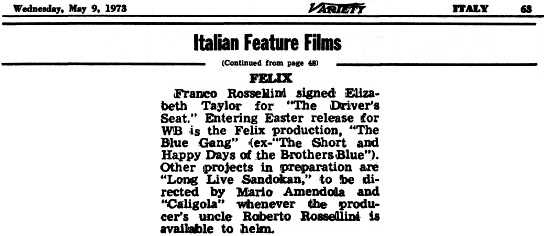
Long Live Sandokan was never made.
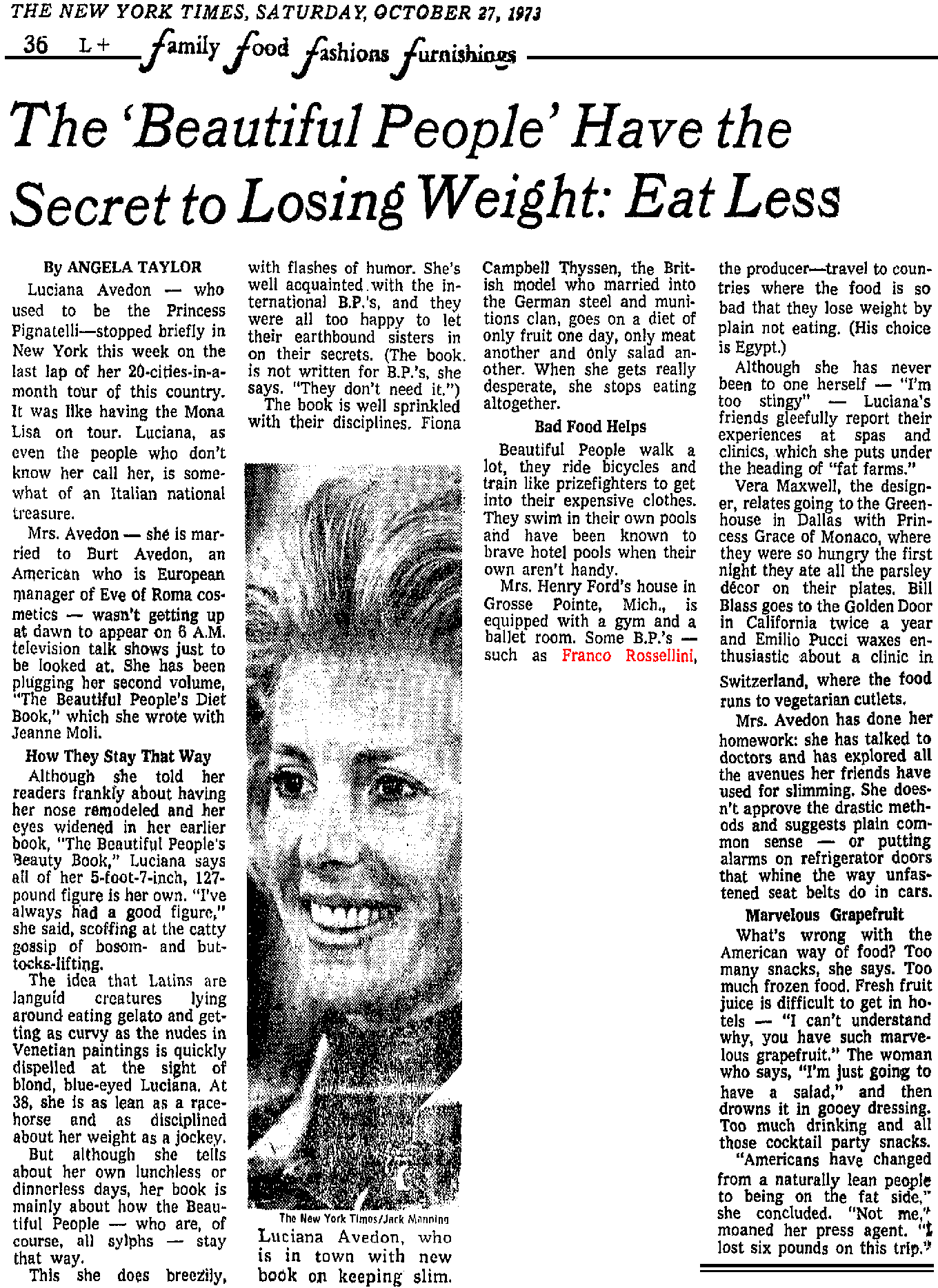
Bizarre. Somebody uploaded this as well. I don’t get it. Whatever. Download it before it vanishes: https://www.youtube.com/watch?v=DYVPHFccBlo.
Oh. You want more? Somebody uploaded the Italian dub, this time without the cropping, but at horrible quality. Download it before it vanishes: https://www.youtube.com/watch?v=3Ax3C1YYQxk.
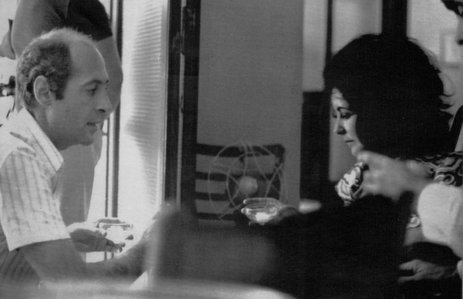
Franco Rossellini, age 38, in discussion with Elizabeth Taylor.
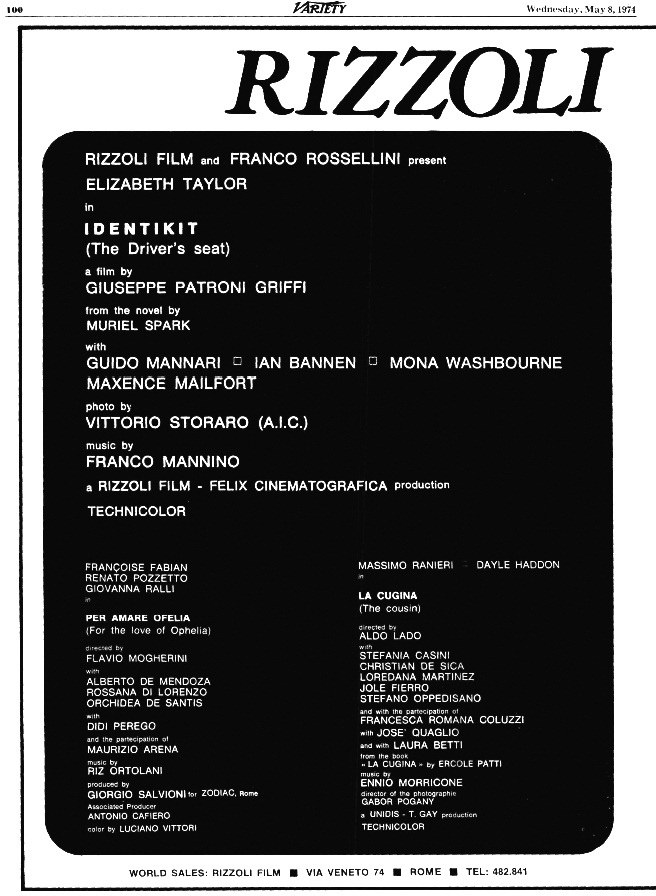
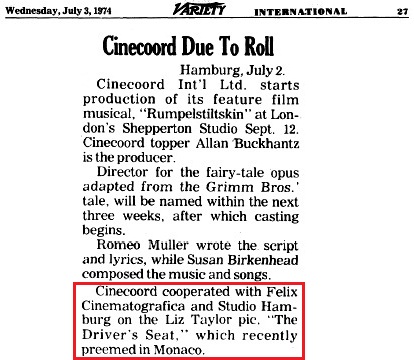

The movie rights to Muriel Sparks’s novel had bounced around from studio to studio and actress to actress,
when finally Paramount Pictures sold its option to Franco Rossellini’s Felix.
Elizabeth Taylor jumped on board, offering her services at one-tenth of her usual million-dollar-per-picture rate,
on condition that the script be faithful to the novel and that she have approval of the director and cinematographer.
Paramount would have right of first refusal to distribute.
Paramount exercised its right to refuse.
That put the film into a tailspin. Nobody wanted to release it,
until at last third-rate Avco Embassy came along and got it, presumably for a bargain-basement price,
and gave it a microscopic release double-billed with a dubbed Sophia Loren vehicle called Jury of One.
It was seldom advertised at all, and when it was the ads were minimal.
Nobody got a chance to see this thing.
Would audiences have enjoyed it? Who’s to know?
It’s extremely stylized and extremely alienating.
At first I thought that the direction was inept and that the acting thereby suffered.
Now I’m not so sure.
I think the ineptitude was quite deliberate and intentional.
Fascinating in many ways, but really hard to warm up to.
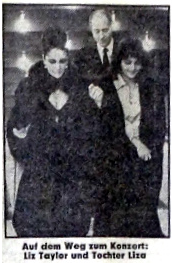
BILD — Hamburg, 26 October 1973, p 6
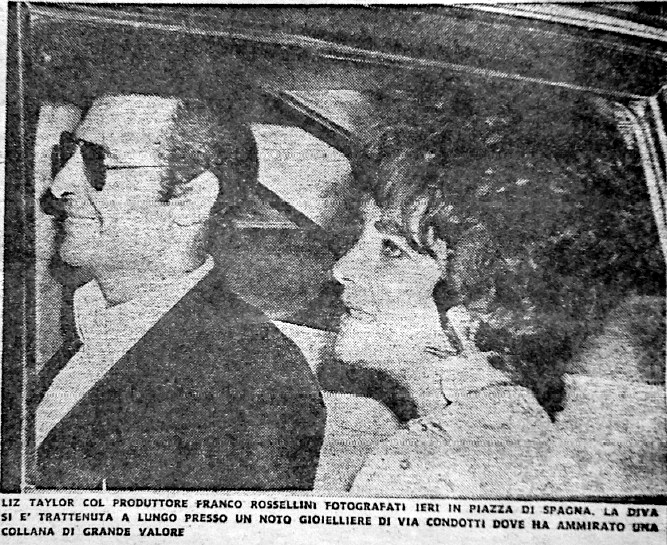
Unidentified news clipping
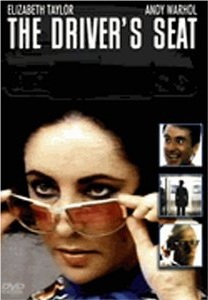 Region 1 NTSC DVD, cropped from 1:1.85 to 1:1.33, of VHS quality, in the original English. |
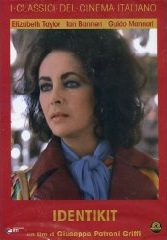 Region 2 PAL DVD, 1:1.85, dubbed into Italian. |
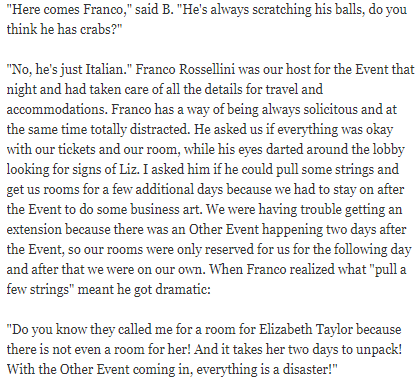

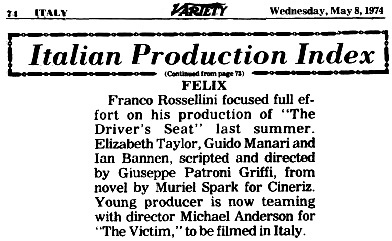

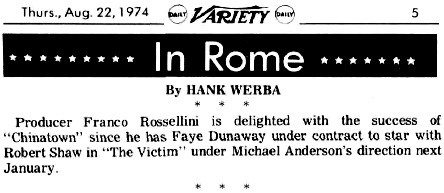
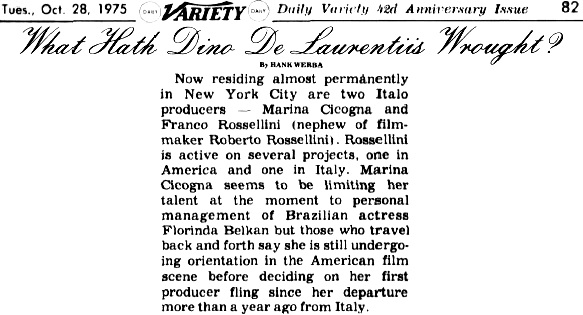
Never happened.
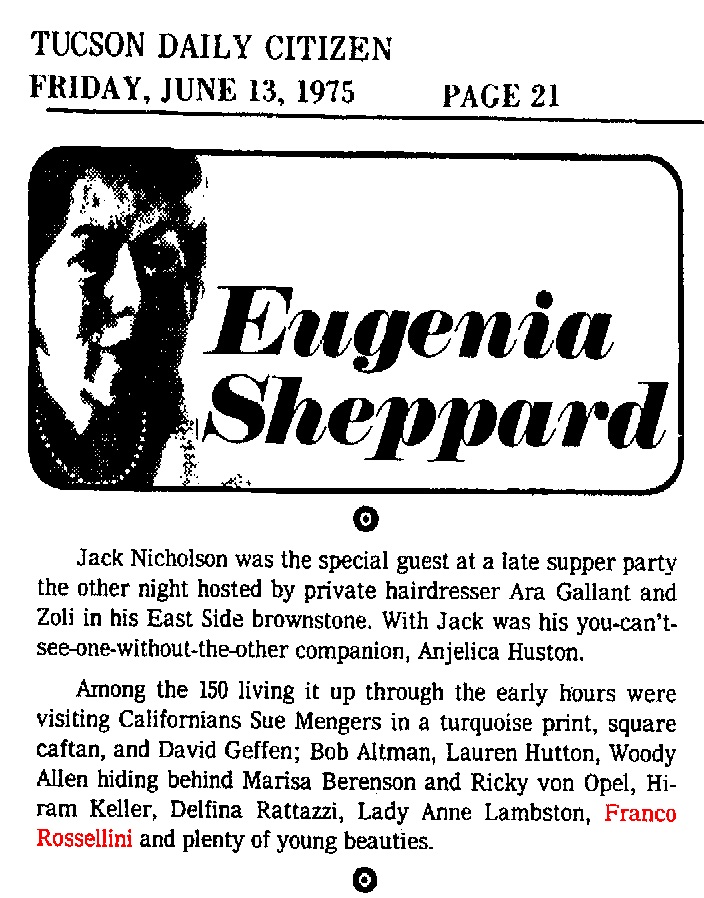
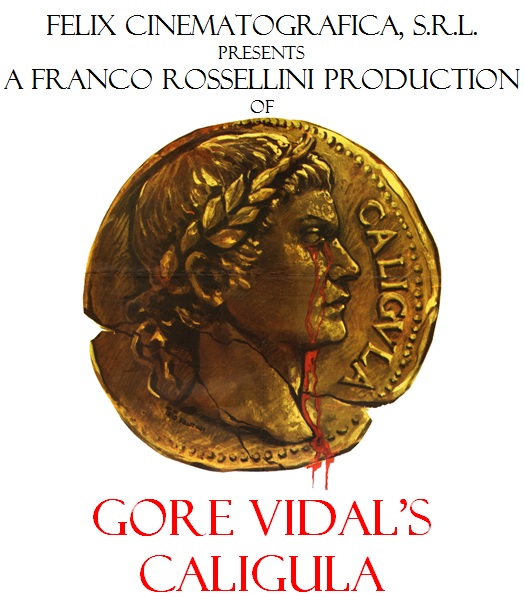
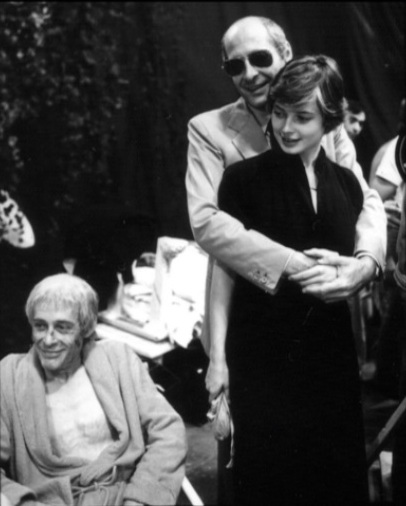
Franco, age 40, gives cousin Isabella a tour of the set,
as Peter O’Toole smiles benignly in the background.
A few flops, a lot of hits, and overall everything was looking up.
Then Caligula fell into his lap.
With a script by his friend Gore Vidal and direction by his friend Paul Morrissey, this was going to be his best ever,
the movie that would make him a major producer with a major breakthrough film that was also a major work of art.
This would be Felix Cinematografica S.r.l.’s third movie,
and it would launch it to the top of all the competition.
Well, that’s what he thought.
Franco was easy-going and accommodating.
He had learned in his years in the movie business that the worst thing a producer could do is interfere with the filmmakers.
Yes, he was a creative producer, and he did all he could to ensure top quality.
He would not produce a movie if he did not personally believe in its worth.
He had discussions with writers and crew and cast and directors and designers and composers and editors
to ensure that the films would be up to his standards and to ensure that everybody was on the same page.
But he would never interfere.
That’s an important distinction.
In Franco’s view, filmmakers should be granted total autonomy, and the producer should be on hand only to help when asked.
Yet on Caligula the financing was largely arranged by Penthouse magazine’s aggressive and domineering Bob Guccione,
who compelled Franco, for the first and last time in his life,
to interfere — with the script, with the design, with the director, with the scheduling, with the editing, with the scoring.
The result was a decade and a half of lawsuits and immeasurable ill-will.
Franco entered this project with the brightest of expectations.
Little could he realize that Caligula would destroy Felix Cinematografica.
Little could he realize that Caligula would be the film that would end
his career, his credibility, his health, his bank account, and his reputation.
There were plenty of movie productions on Franco/Felix’s schedule after Caligula.
First there was a series of Fellini movies,
beginning with the forever-delayed The Journey of G. Mastorna (Il viaggio di G. Mastorna),
to be followed by The City of Women (La città delle donne),
Woman with a Hoop and Sword, and a further untitled film.
Later there was a Lina Wertmüller adaptation of Shakespeare’s Troilus and Cressida
as well as a Rainer Werner Fassbinder movie called Cocaine.
But nothing happened.
Caligula killed everything. Well, almost.
Franco’s VHS copy is identical, but all mention of Guccione, Penthouse, and PAC were scrubbed, and the title was changed to IO CALIGOLA. That, of course, was prepared for the 1984 reissue. A friend pointed out to me that the original 1979 version was posted at the Archivio Luce page. Wowee.
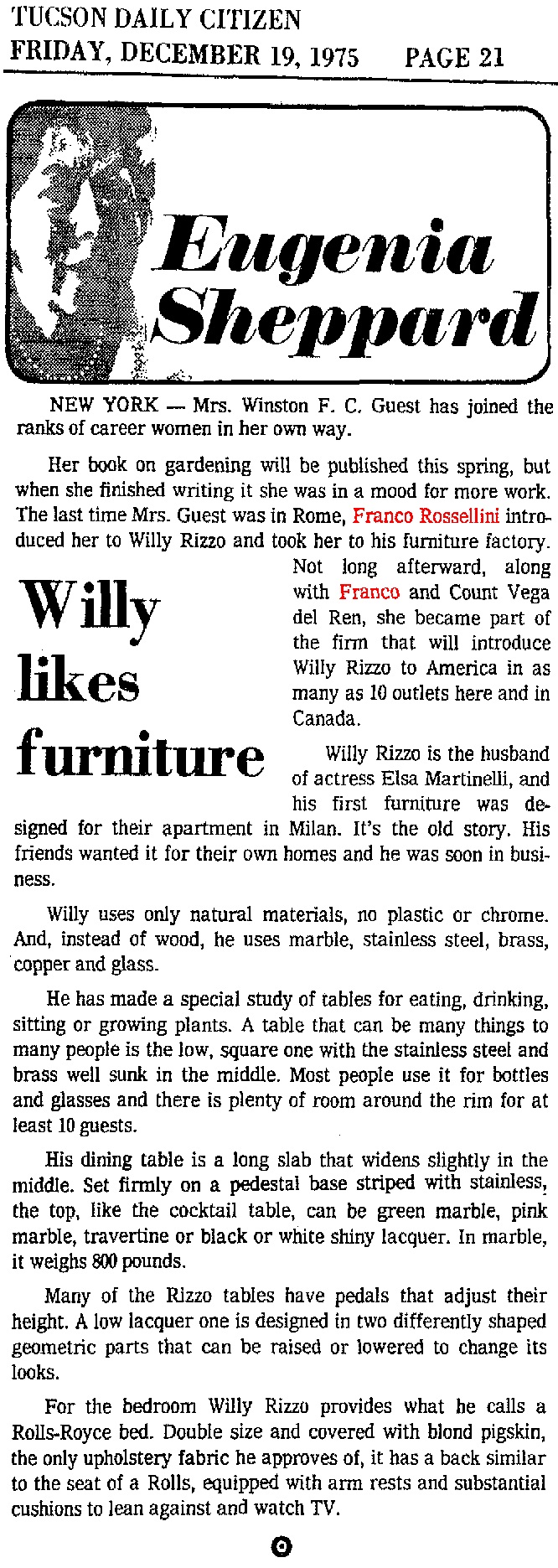
My heavens is the story of this movie confusing!
Everyone, and I mean everyone, was under the assumption that Franco Rossellini
and/or Penthouse was the producer of Messalina, Messalina.
And I was too, for the longest time.
But that was not the case at all!
Why did we think that Franco and/or Penthouse produced this movie?
Because that’s what the press reported, for example:

(“William Hickey” was a collective pseudonym for countless gossip writers who contributed to this column.)

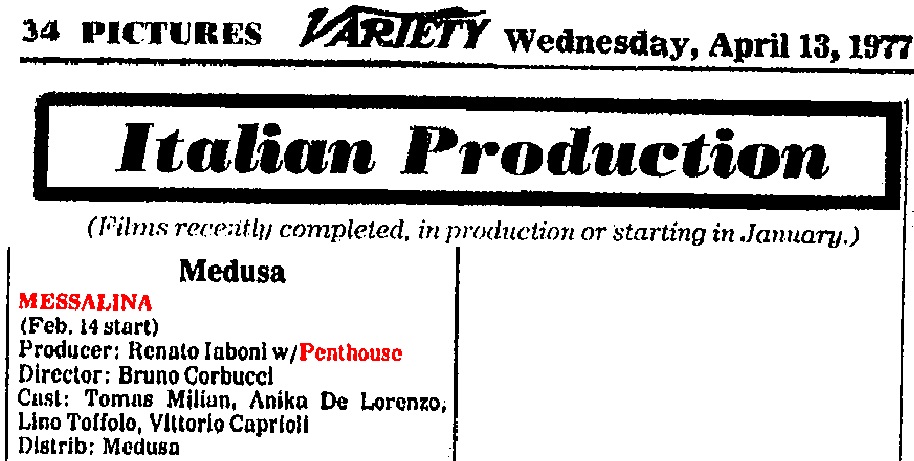
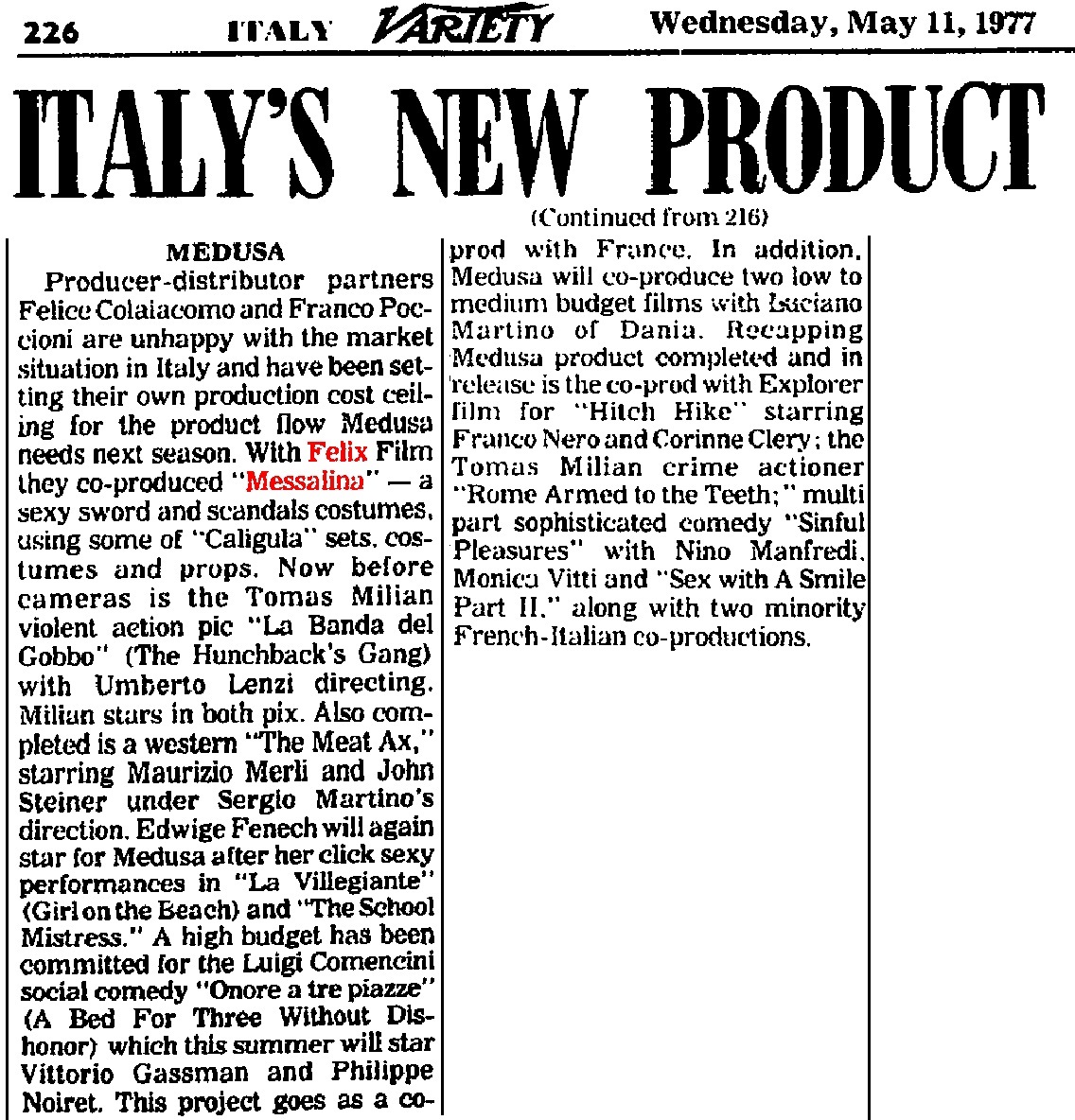
There was also a pictorial spread incorporated into Alberto Moravia’s movie-review column in L’Espresso, Wednesday, 25 May 1977, pp 150–152:
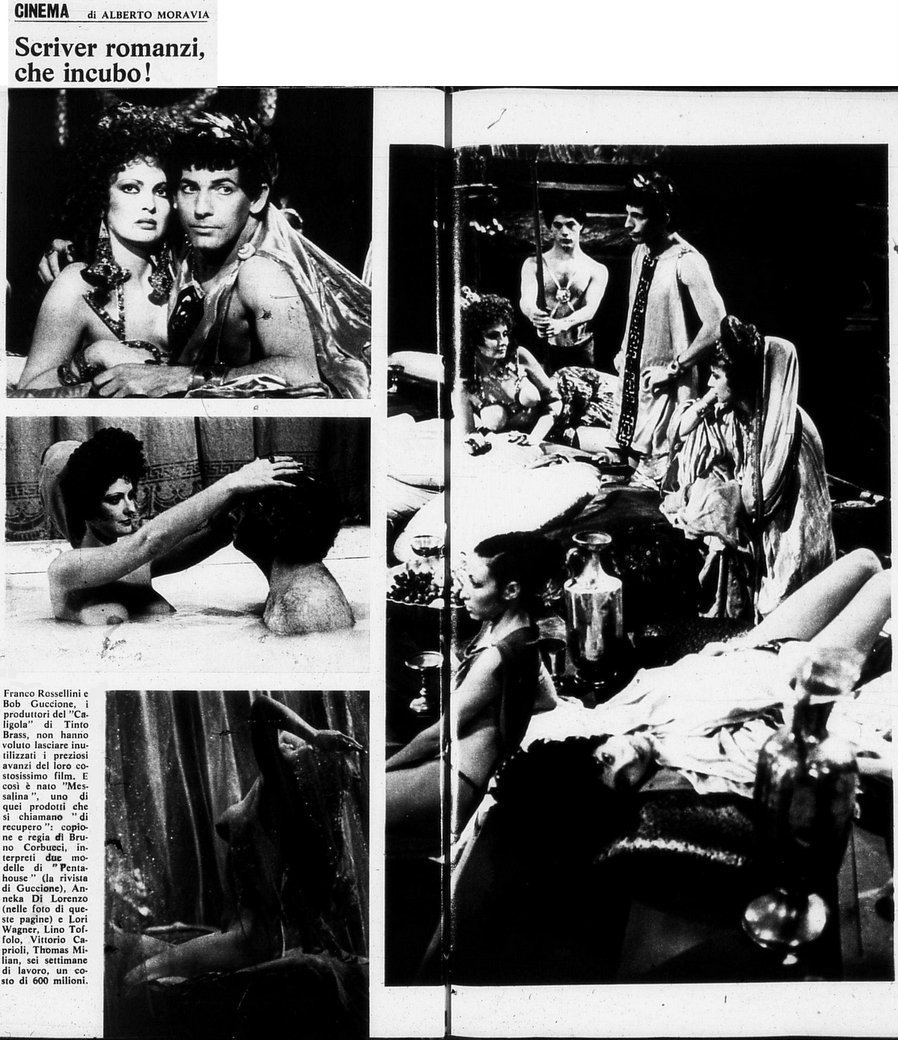
which, rendered into English, reads:
“Franco Rossellini and Bob Guccione, the producers of Tinto Brass’s ‘Caligula,’
didn’t want to let the precious left-overs of their most costly film go unused.
And so ‘Messalina’ was born, one of those productions that are called ‘recoups’:
script and direction by Bruno Corbucci, played by two models from ‘Penthouse’ (Guccione’s magazine),
Anneka Di Lorenzo (in the photos on these pages) and Lori Wagner,
Lino Toffolo, Vittorio Caprioli, Thomas [sic] Milián, six weeks of work,
a cost of ₤600,000,000” [equivalent to
US$677,448.11].
And one more for now:
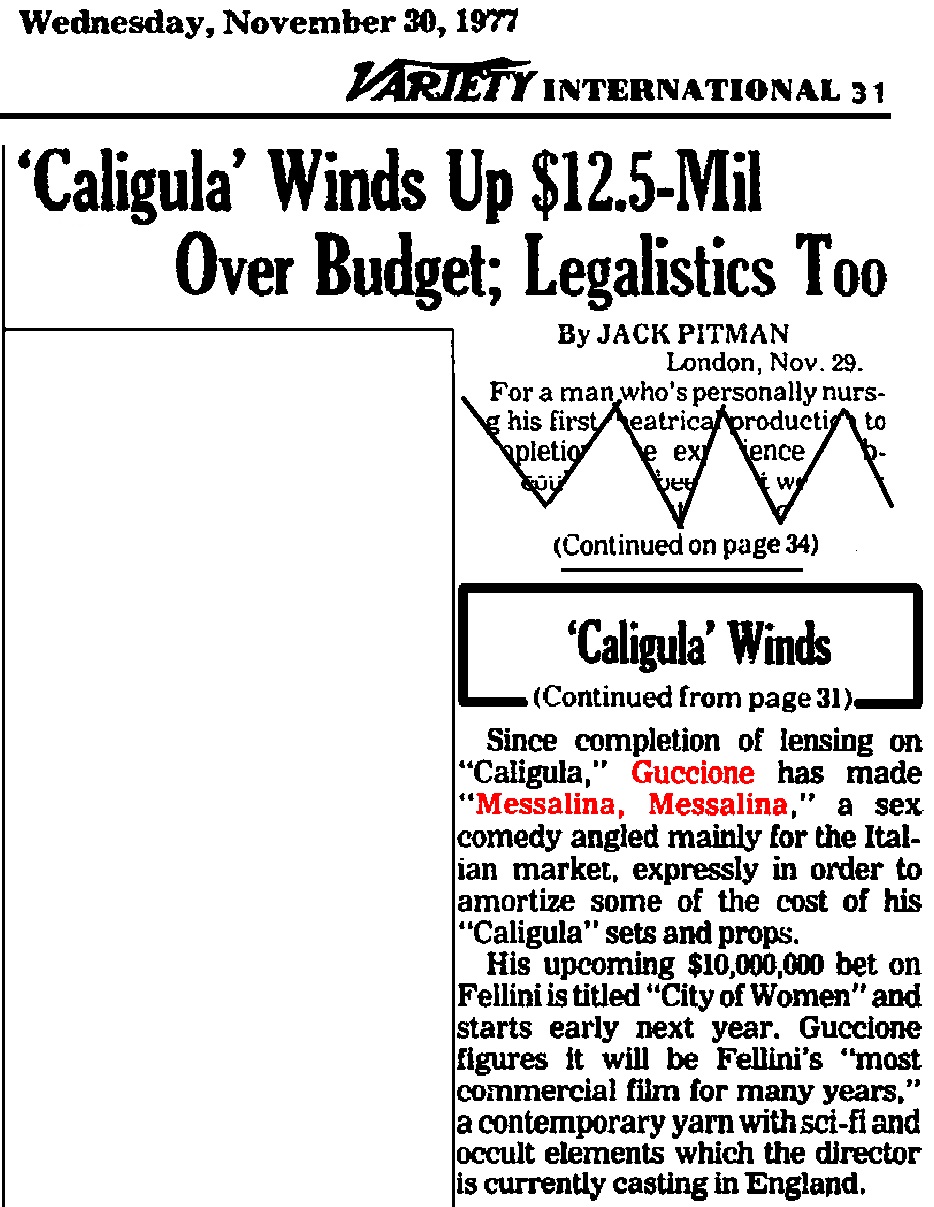

Nothing in the popular or trade press told the truth, because no reporter had access to adequate facts.
Yes, Messalina, Messalina was originally intended to be a Felix production with a controlling investment by Penthouse,
but that changed when things went wrong with Caligula.
Largely because of Penthouse’s last-minute changes,
the shooting schedule for Gore Vidal’s Caligula was delayed and extended.
Originally, shooting was to have begun on
Wednesday, 27 July 1976,
and continued through Monday, 15 November 1976,
one day short of a 15-week shoot.
As it turned out, though, shooting began half a week late, on Monday, 2 August 1976,
and continued through Friday, 31 December 1976,
a 22-week shoot, seven weeks longer than planned.
Felix was forced to make up the difference from its own coffers,
which nearly depleted the company’s bank accounts.
So Franco was looking forward to making this “B” movie about Messalina, Messalina,
as he needed some extra income, and quickly.
While working on Caligula, Franco had become friends with Anneka di Lorenzo
and decided that she should play the lead
in this new movie because he felt that Guccione had cheated her with Caligula.
He wanted to do something to set things right.
He also recognized that Anneka had a nice sparkle
and would do well on camera.
In anticipation of the shoot, Franco held three of Caligula’s studio sets throughout January 1977,
at $90/hour per set. Let us calculate: 20 business days × $90/hour × 3 sets × 8 hours per day = $43,200, and all for nothing.
You see, at the very last minute, Penthouse said, in effect, “Sorry guy. We’re out of money.
We can’t fund Messalina. You’re on your own. Sucks to be you.”
Franco acted quickly.
He offered this project for sale (probably for not much more than $43,200),
and unloaded it onto Medusa Distribuzione.
Medusa was the brainchild of Felice Colaiacomo and Franco Poccioni, who had founded the company in 1964
and earned their fame and fortune by producing a number of films that monetized Edwige Fenech’s breasts.
(People keep asking, and nobody ever answers. So here: ed-VEE-jeh FEN-eck. )
After that profitable beginning (still cherished by dévotées of 1960s/1970s Euroerotica),
Medusa added a distribution wing and it was rather successful.
Felice Colaiacomo was, I think, the “C” in “B.R.C.”
Colaiacomo and Poccioni were undoubtedly thrilled when Franco offered them two of Caligula’s luxurious sets
along with one slummy-looking one,
together with the props and costumes at such a bargain price,
and they put them to use without delay.
They already had a regular cast and crew, including Tomás Milián and Franco “Bombolo” Lechner.
How the producers managed to rope in Lino Toffolo and Vittorio Caprioli I do not know.
To write a script with what I presume was a three-hour deadline,
Colaiacomo and Poccioni had at their fingertips, and on payroll,
Mario Amendola, who had previously written for the slapstick duo Franco and Ciccio.
A quick check on the IMDb
reveals that he was prolific — but has anyone heard of even a single one of his movies?
I recognize only a few titles, and they were throw-away items at best.
Amendola, of course, had scripted the abandoned Long Live Sandokan
for the team of Rossellini/Warhol/Morrissey.
(Mario Amendola was also the uncle of Ferruccio Amendola, who would later direct the dubbing of the Italian version of Caligula in 1979.
Surely there's a connection there, yes? Ferruccio also dubbed Tomás Milián out-of-sync in Messalina.
Did Milián ever dub his own voice? I don’t know. Do you?)
Who would direct this masterwork?
Why, of course, someone else who was already on payroll: Bruno Corbucci, Sergio’s younger brother.
Mario and Bruno had teamed frequently, and they churned out endless miles of forgettable films.
In the English dub, this film is unwatchable.
In the original Italian, though, one can recognize that Lino Toffolo, Bombolo, and Raf Luca were first-tier performers.
Their inimitable talents are entirely undetectable in the English edition.
The script definitely set a very low ceiling on their portrayals,
but they nonetheless come across quite nicely, along with the great Tomás Milián and Vittorio Caprioli.
There are a few pleasant set pieces, such as the ballet at dinner,
which is nicely shot, and the music by the De Angelis brothers is often quite lovely.
Despite these few agreeable flourishes, though, this movie is execrable.
Messalina was released in Italy on 11 August 1977, and, at least in Italy, it miraculously turned a nice profit.
How much? I don’t know. Does anybody know?
It was also released in France and Montréal and possibly a few other places.
In the US an abridgment went straight to video.
Something very strange happened behind the scenes, but what?
If you have any insider information, please write to me. Thanks!
Incidentally, it seems that the masters of Messalina, Messalina have been drastically cut through the years.
The original was 98 minutes
(2,690 meters),
including the part titles (“FINE PRIMO TEMPO” and “SECONDO TEMPO”).
Most video editions run about 15 minutes shorter and have needless porn material added,
which seems to consist of discards from some other wretched movie.
If a complete version could be reassembled, it would probably have to derive largely from battered VHS tapes,
as the negatives and master audiotapes surely no longer exist in their original form.
Though Messalina, Messalina is a dreadful, well-nigh-unwatchable movie,
I nonetheless dream of restoring it,
because it shows a scale model for one of the Caligula sets,
it shows another Caligula set from impressive angles that we’ve never seen elsewhere,
and because it’s Anneka di Lorenzo’s only starring rôle.
As painfully bad as this movie is, it’s of historical importance for those reasons.
And despite my better judgment, I have somehow become rather fond of this abomination.
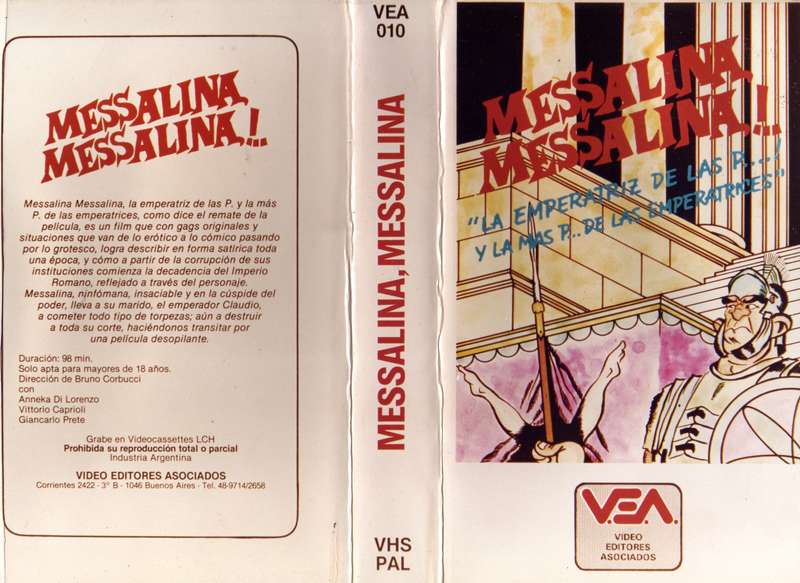
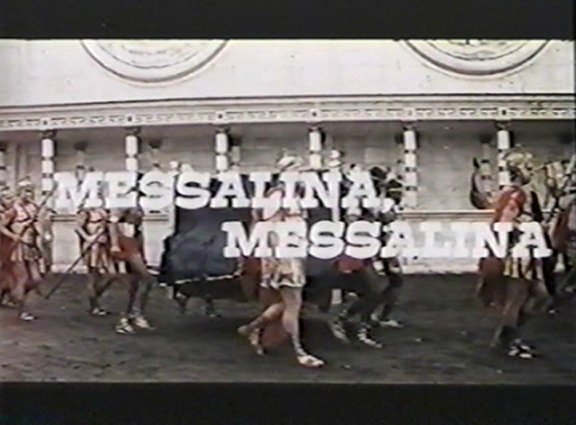
Oh phooey! They took it down. Oh well. It’ll pop up again somewhere eventually.
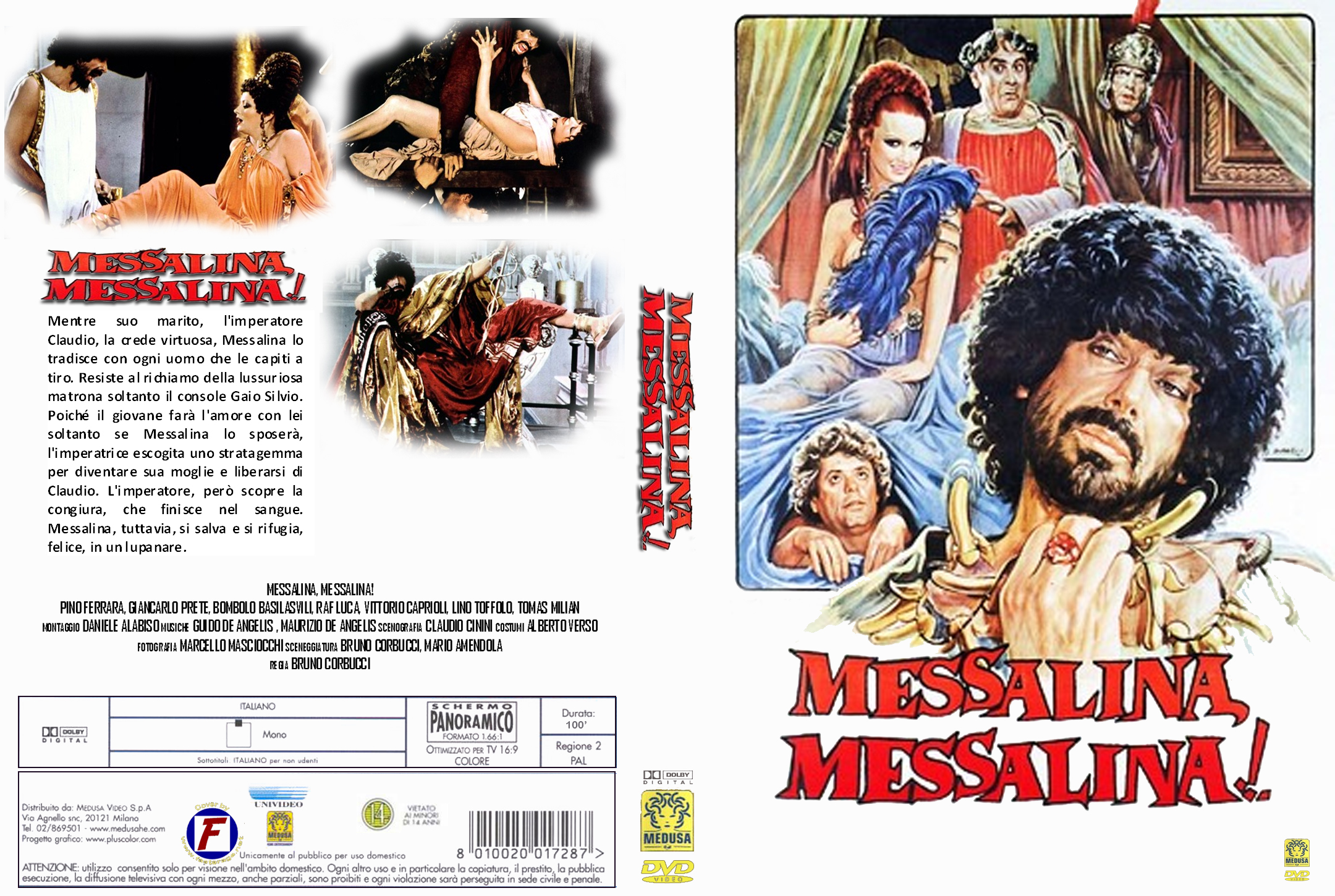
Oh this got me all so excited for a minute, and then I noticed that the image is faked. It is a clever collage of scans, items found on the Internet, and JPEGs of the Medusa logo and the Dolby logo. Anneka’s and Lori’s names are missing. The UPC is for the Medusa DVD of Squadra antigangsters. So there is no such Messalina DVD. Drat!
Oh, a colleague recently performed a little experiment (there’s no sound):
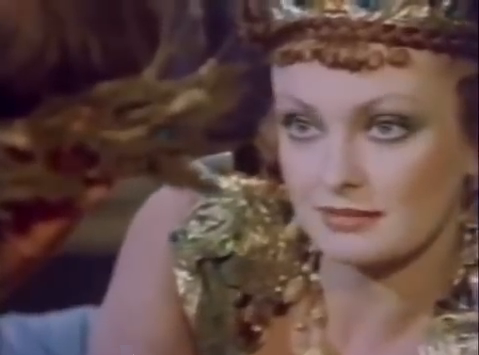
Anneka di Lorenzo
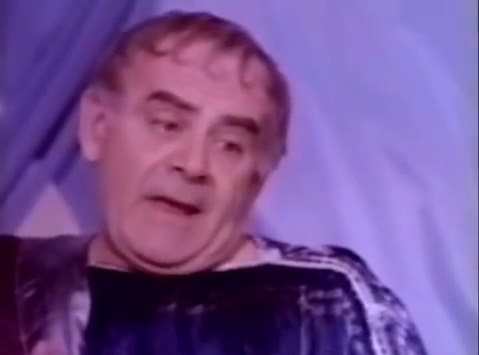
Vittorio Caprioli
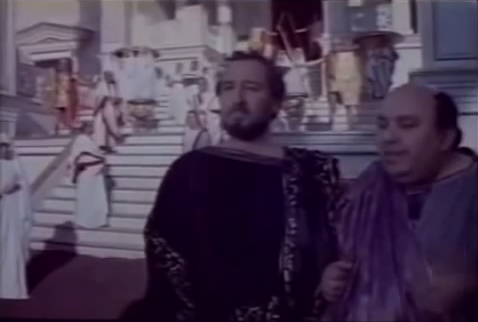
Pino Ferrara and Luca Sportelli
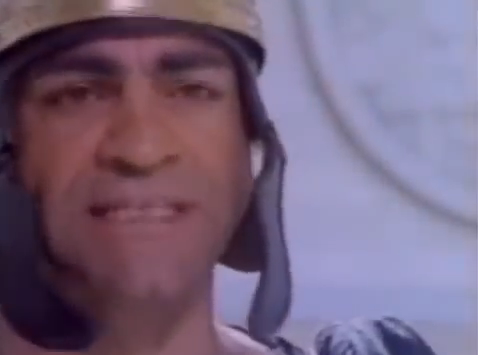
Salvatore Borghese
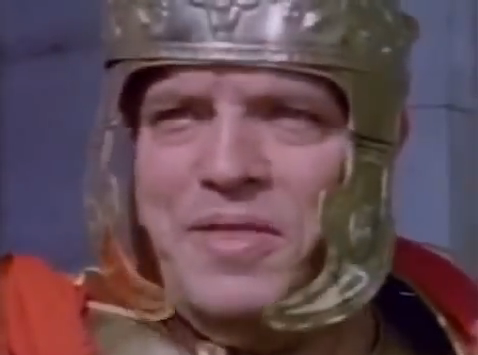
Bombolo
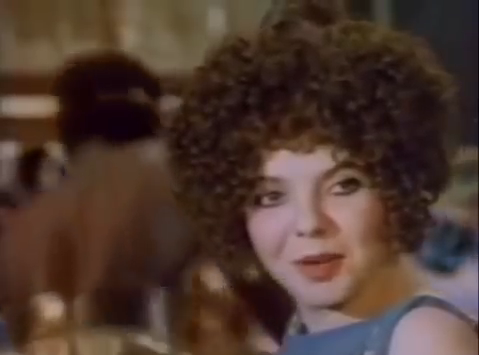
Alessandra Cardini
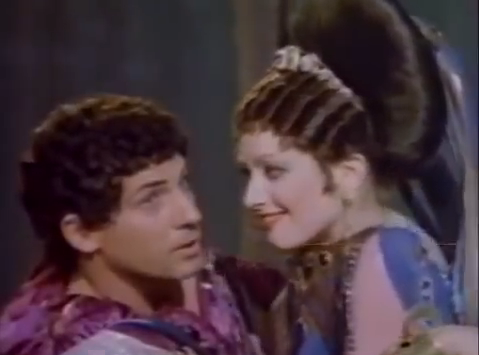
Giancarlo Prete and Lori Wagner
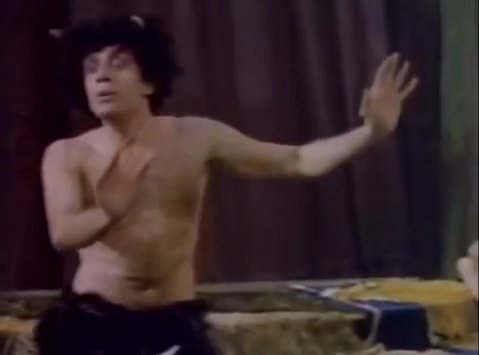
Raf Luca
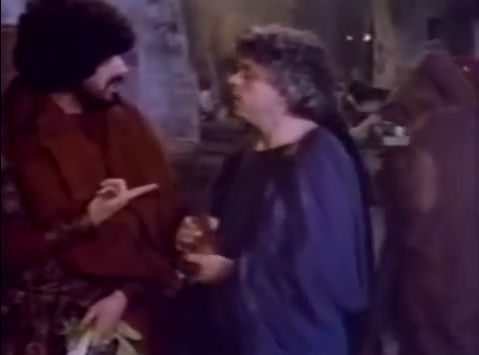
Tomás Milián and Lino Toffolo
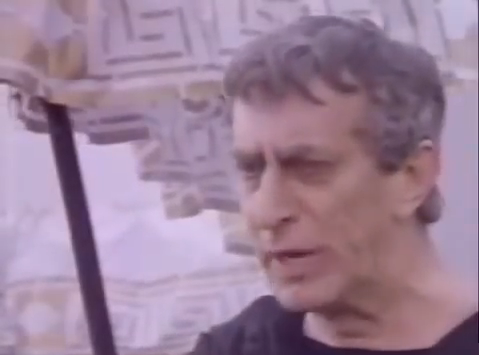
Primo Marcotulli
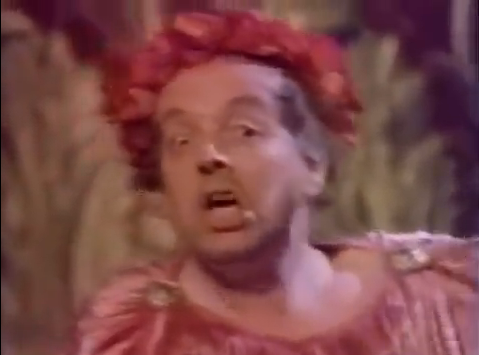
Taylor Mead
(My guess is that he was visiting Franco Rossellini
who took him to visit the set, and that that resulted
in this unplanned and momentary cameo.)
There was one more movie for Franco, who shortly into planning withdrew Felix and
drew up a new company named Viva, in honor of Guccione’s beefcake magazine.
He worked diligently on preparation and preproduction from Christmas 1975
all the way through nearly the beginning of shooting in 1978,
when Guccione withdrew Penthouse’s portion of the funds.
Franco could take no more.
He sold this project to his cousin Renzo, who produced it through his companies Opera Film and Gaumont Italia.
That soon led to protracted lawsuits
(costs were vastly inflated, and Franco, whose name was still on the opening credits as producer, was hit with the bill).
La città delle donne is my personal bid for one of the 15 or 20 greatest movies ever made,
and it is hard to realize, after enjoying it and laughing oneself to helplessness,
that the making of the movie was a series of devastating tragedies,
most seriously when Ettore Manni’s gun discharged as he was cleaning it after a day at the studio.
He died almost instantly. (It was not intentional suicide, despite all the popular claims of such.)
That was before the movie was complete, and while he still had dozens of scenes to do.
The script was hastily rewritten to work around this circumstance.
Oddly enough, it was not only Franco Rossellini who got credit; Bob Guccione received presentation credit as well —
though Guccione demanded that his credit be deleted after just the first few showings.
And that was the end of Franco’s career in the movies.
He tried. Oh did he keep trying. There were movies he really wanted to make.
But he got swindled every step of the way, and all the projects withered on the vine.
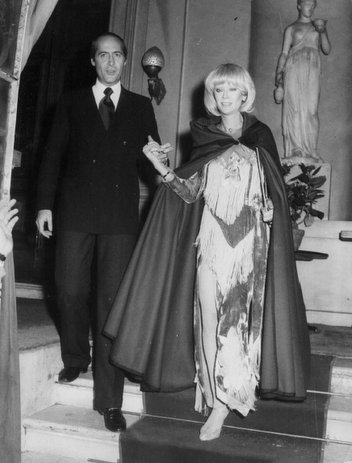
I presume this is circa 1977. Franco Rossellini with Monique Van Vooren,
but I have no idea what this VIP function was.

Andy Warhol and Pat Hackett, The Andy Warhol Diaries (Hachette Digital: 1989),
entry dated Tuesday, 28 June 1977.

Andy Warhol and Pat Hackett, The Andy Warhol Diaries (Hachette Digital: 1989),
entry dated Friday, 8 July 1977.
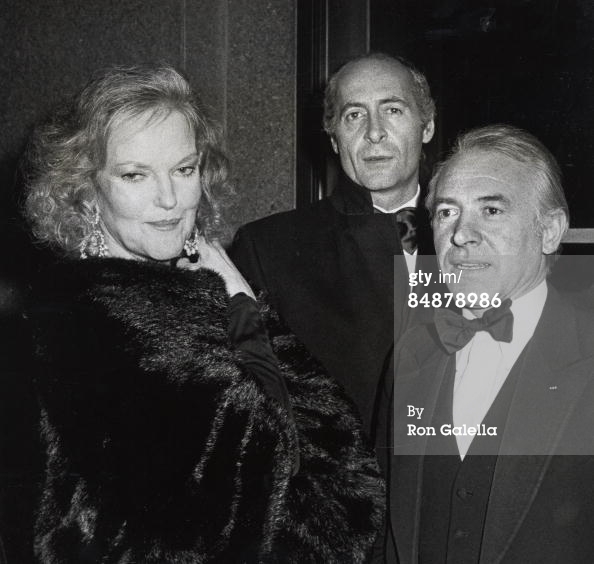
When we sift through the Getty Images site, we find this photo snapped on 2 December 1978, credited to Ron Galella/WireImage. This photograph is entitled “Steve Rubell’s Birthday Party Hosted by Halston.” On the left is Doris Duke, billionairess. I don’t recognize the person on the right. The rights to this photograph seem to be available, and when I can afford them, I’ll license them. Until then, this reduced watermarked copy with links to its source will have to suffice.

Andy Warhol and Pat Hackett, The Andy Warhol Diaries (Hachette Digital: 1989),
entry dated Saturday, 25 October 1980.
“Bob” is Bob Colacello.
And Franco’s statement was unfortunate,
for he never got his Caligula royalties from Penthouse.
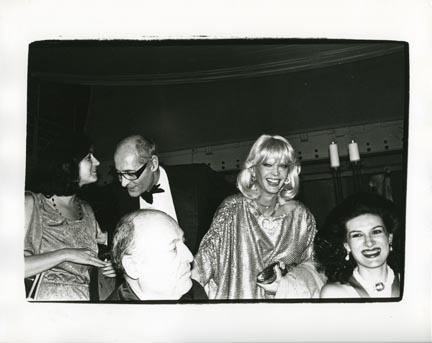
Paloma Picasso, Franco Rossellini, Jerry Zipkin, Monique Van Vooren, unidentified.
Photograph taken by Andy Warhol.
Museum of Contemporary Photography, gelatin silver print, image 8¾"×6", paper 10"×8".
Gift of the Andy Warhol Foundation for the Visual Arts, Inc.

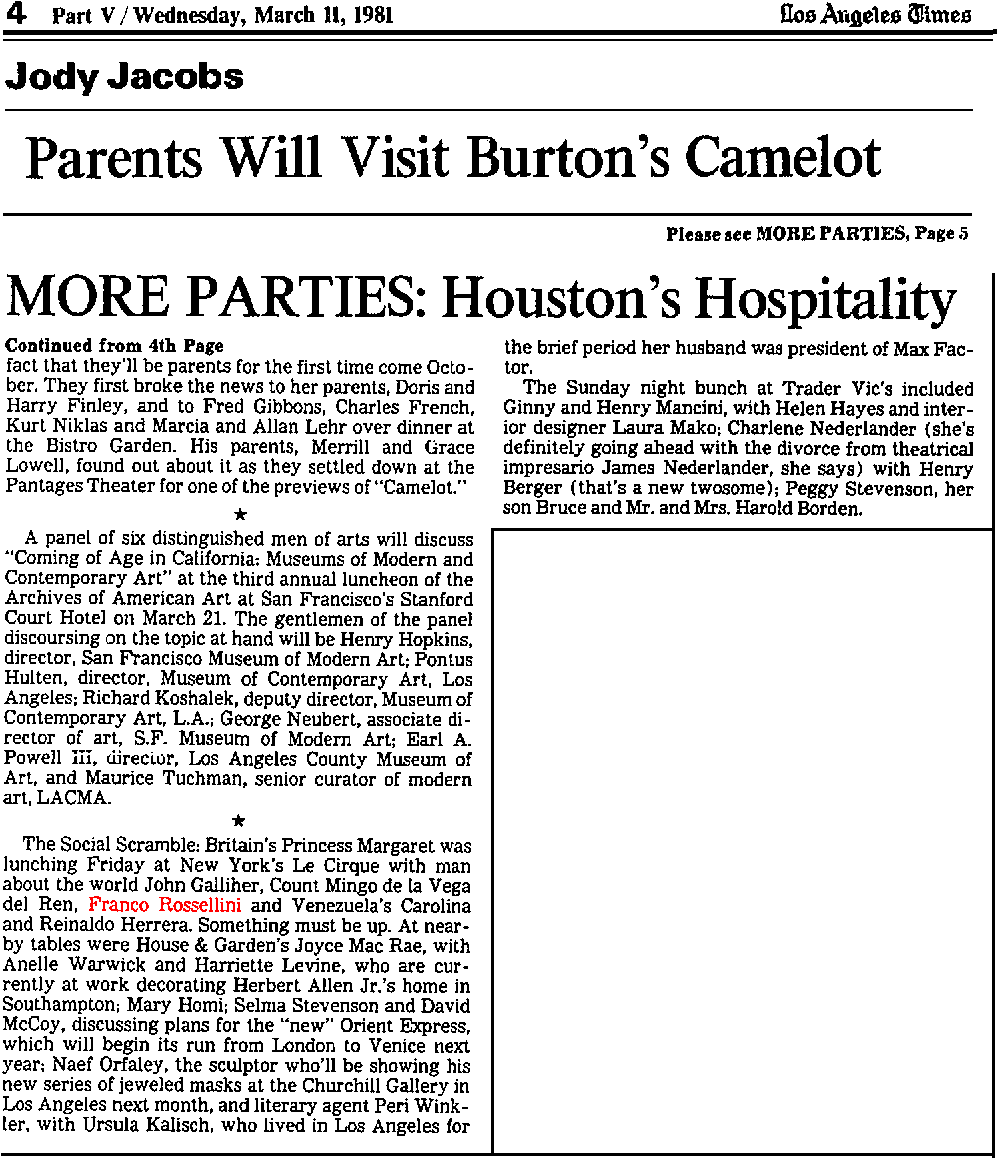

Andy Warhol and Pat Hackett, The Andy Warhol Diaries (Hachette Digital: 1989),
entry dated Friday, 13 March 1981.
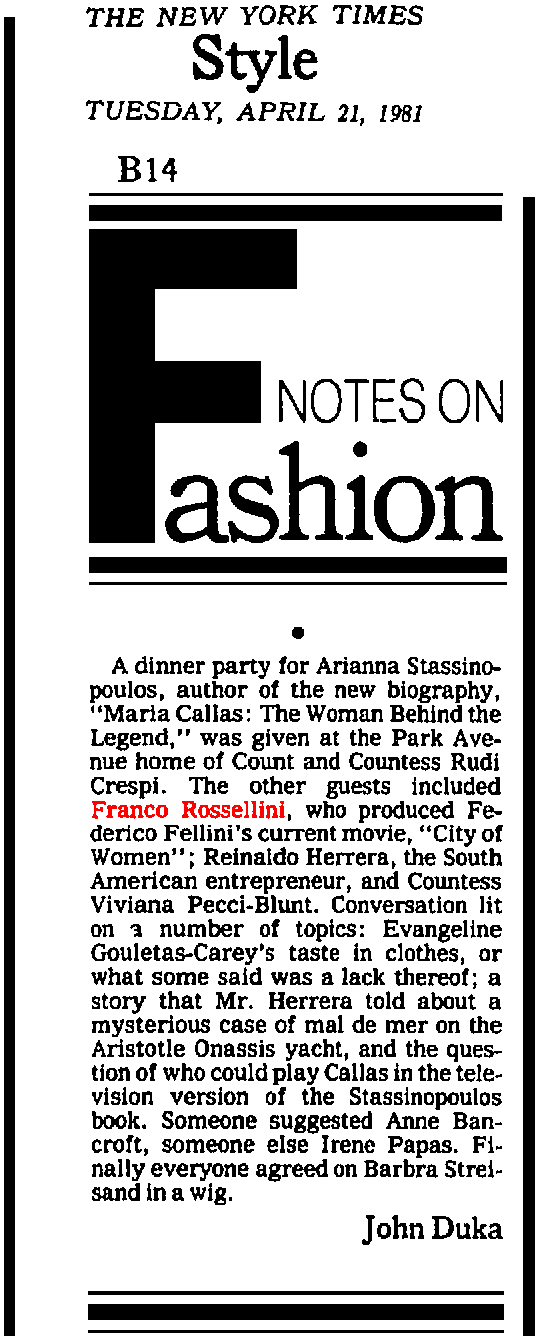
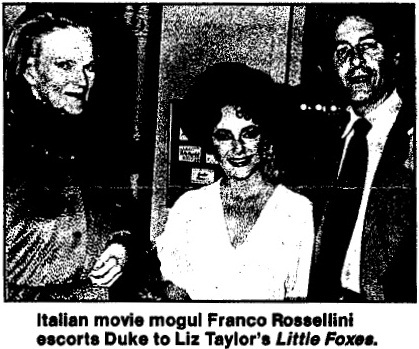
Elizabeth Taylor made her stage débût on 27 February 1981 at the Parker Playhouse in Fort Lauderdale, for the stage version of The Little Foxes. She and the show soon moved to Manhattan. The above photostat is from an unidentified news clipping, consisting of paraphrases of Tom Valentine and Patrick Mahn’s Daddy’s Duchess (Secaucus: Lyle Stuart, 1987).
Now, call me prejudiced (because I am), but some of the claims in Valentine/Mahn’s article defy my belief.
For instance, there’s this passage:
|
DD’s primary escort and dear friend for most this time was Franco Rossellini, of the famous
Italian opera and filmmaking family.
DD’s money kept Franco solvent throughout his
bitter feud with Penthouse magazine publisher
Bob Guccione over the profits from Franco’s film,
Caligula.
[Wrong.
Yes, Doris Duke did help Franco out with a little bit of funding during his first suit and out-of-court settlement,
and later she helped out only enough to prevent Franco from being homeless,
but for the final decade of his life, Franco was suffering under crushing debts and overdue bills from everywhere and everybody,
which he was never able to pay.]
Franco was allowed to live in a fine Colonial
home that’s part of Duke’s New Jersey estate. In
return, he kept DD happily showered with attention
and gifts.
[Yes, Doris allowed him to keep a house on her estate,
but Franco and his mother continued to rent their modest apartments in Manhattan,
though they were unable to keep up with the rent, resulting in endless eviction notices and physical threats from their landlord.]
Franco and Doris traveled the world together,
even visiting her close friend, Imelda Marcos, in
the Philippines. It’s said that DD taught Imelda the
art of shopping.
For more than 10 years, nobody at the Duke
business office dared to tell her that she, not
Franco, was paying for all that romantic attention.
Flowers, wine, candy, telephone calls were all on
DD’s bill.
[The attention was not romantic.
If there were such extravagances, they were at Doris’s request.
If there is any truth to this story at all, the likeliest explanation
is that Doris made one of her credit cards available to Franco so that he could do her shopping during his travels.
The idea that Franco, who was tens of thousands of dollars in arrears and effectively denied any possibility of income,
and who was being provided an essentially limitless credit card from a billionairess,
would ignore his own plight and instead shower his donor with gifts is absurd.
It is even more absurd when we remember that Doris knew full well that Franco was penniless
and could not have afforded to buy her a ball of bubblegum.
If she was accepting any “gifts,” then she knew that she was paying for them.]
When she learned that the tab was well over
$200,000, the romance was over.
[Wrong.
There was no romance.
She continued to help Franco out with small payments,
just enough to keep a roof over his and his mother’s heads,
and then left him $158,000 in her will,
unaware that by the time she signed that will on 5 April 1993, Franco had been in his grave for nearly a year.
If Franco could have gotten that sort of money a decade earlier, he could have bought his freedom.]
|

New York Magazine, 6 December 1993, p 46.
The correct figure was $158,000, which Doris did not bequeath to Franco until 10 months after he died.
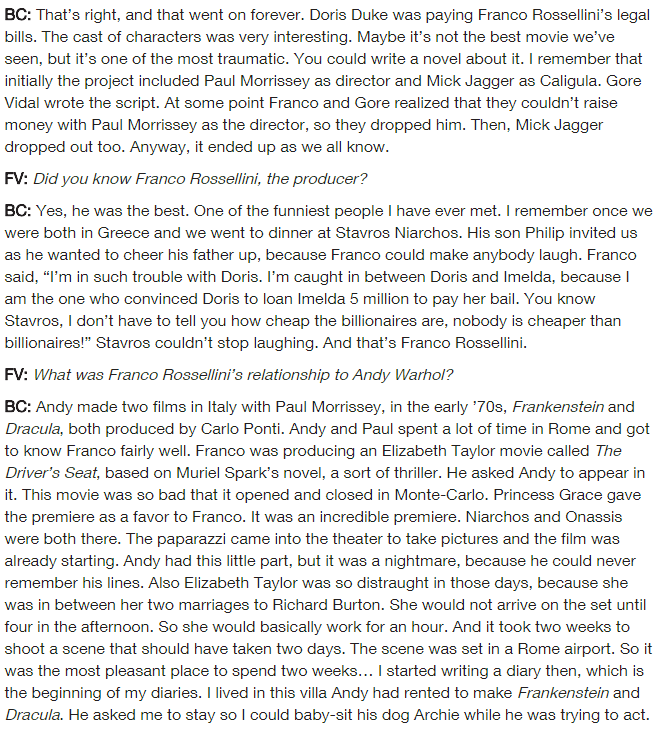
Francesco Vezzoli interviews Bob Colacello, Flash Art, June 2006
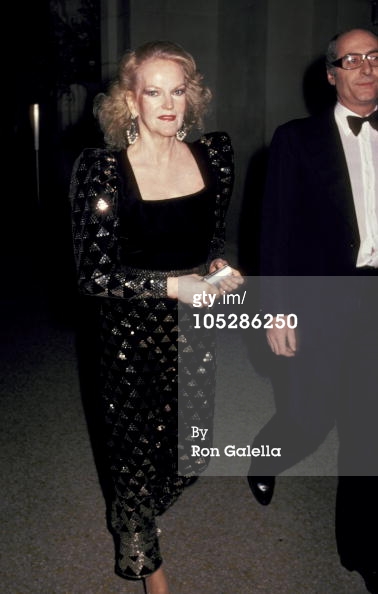
Another image on the Getty Images site, featuring Doris Duke and Franco Rossellini. This photo was snapped at “The 18th Century Woman” Costume Exhibition at the Metropolitan Museum of Art in Manhattan in December 1981. The photo is credited to Ron Galella/WireImage. Rights appear to be available, and after I scrape up some money I’ll probably license those rights. In the meantime we’ll make do with this watermarked reduced version with a link to its source.
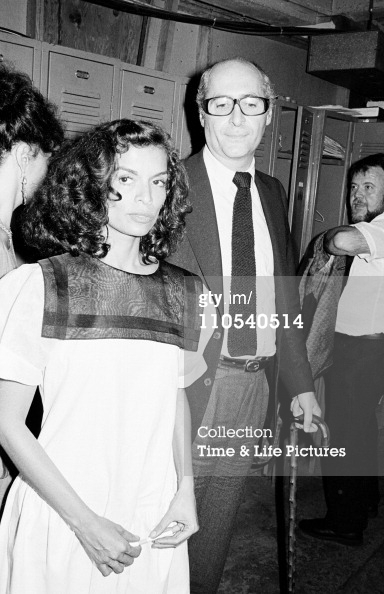
Photographer: Ron Gallela. Bianca Jagger and Franco Rossellini, 29 June 1982, at the opening of Raquel Welch’s revival of Woman of the Year at the Palace Theatre in Manhattan. Rights controlled by Time & Life Pictures/Getty Images. When I get some money I’ll license this image. In the meantime I’ll just give it free advertising.
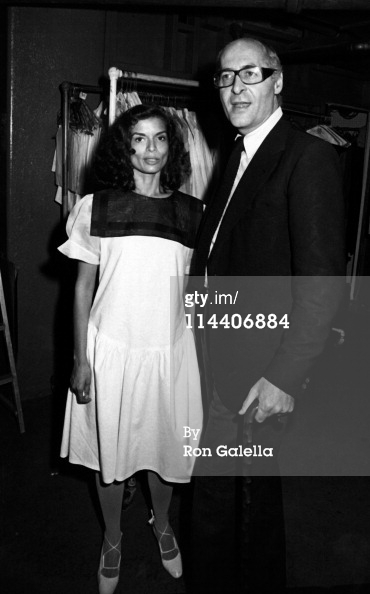
Photographer: Ron Galella. Bianca Jagger and Franco Rossellini sighted on June 29, 1982 at Elaine’s Restaurant in New York City. I guess they went to Elaine’s before the show? When I get some money I’ll license this image. In the meantime I’ll just give it free advertising.

Andy Warhol and Pat Hackett, The Andy Warhol Diaries (Hachette Digital: 1989),
entry dated Wednesday, 25 August 1982.

Paul Burke, “Paul Burke’s Neo-Dieter’s Handbook,” Diet and Nutrition, 14 November 2009. This makes me quite curious, because there’s that claim again that Franco was living with Doris Duke at her estate in New Jersey. That’s certainly an exaggeration, but I would love to know what led to that exaggeration.
(LON-21) LONDON 30 AUGUST (AP) — INGRID BERGMAN’S RELATIVES ARRIVE — Franco Rossellini,
cousin [sic] of Roberto Rossellini, arrived at London Heathrow Airport, Monday night, with
Ingrid Rossellini (floral dress) and other relatives of the deceased film star
Ingrid Bergman (AP WIREPHOTO)(dd223-5/str) 1982
NOTE: This woman was previously identified as Isabella Rossellini INCORRECTLY — on pictures numberedLON-20 and 22. She is in fact the twin sister of Isabella.
NOTE: This woman was previously identified as Isabella Rossellini INCORRECTLY — on pictures numbered
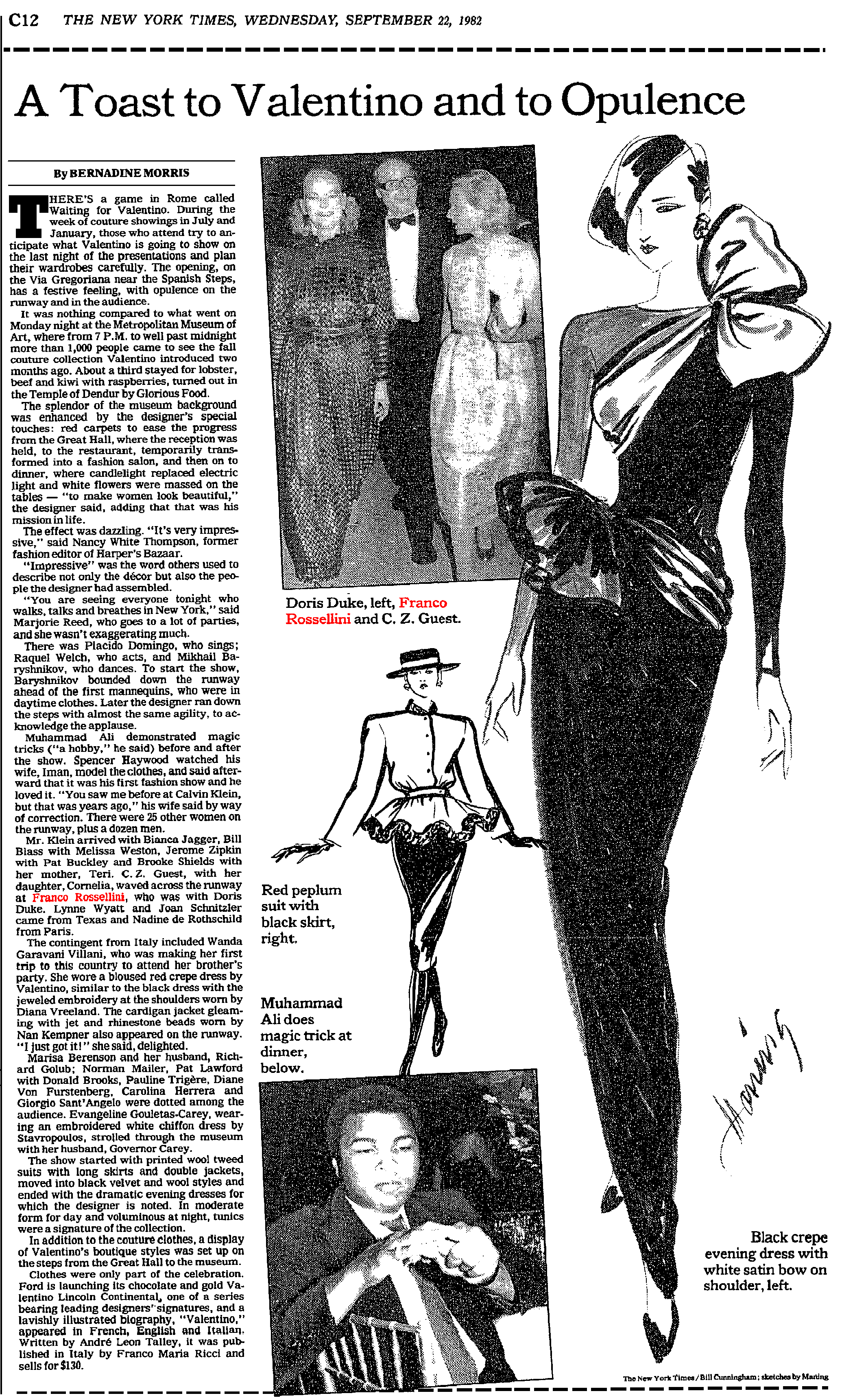
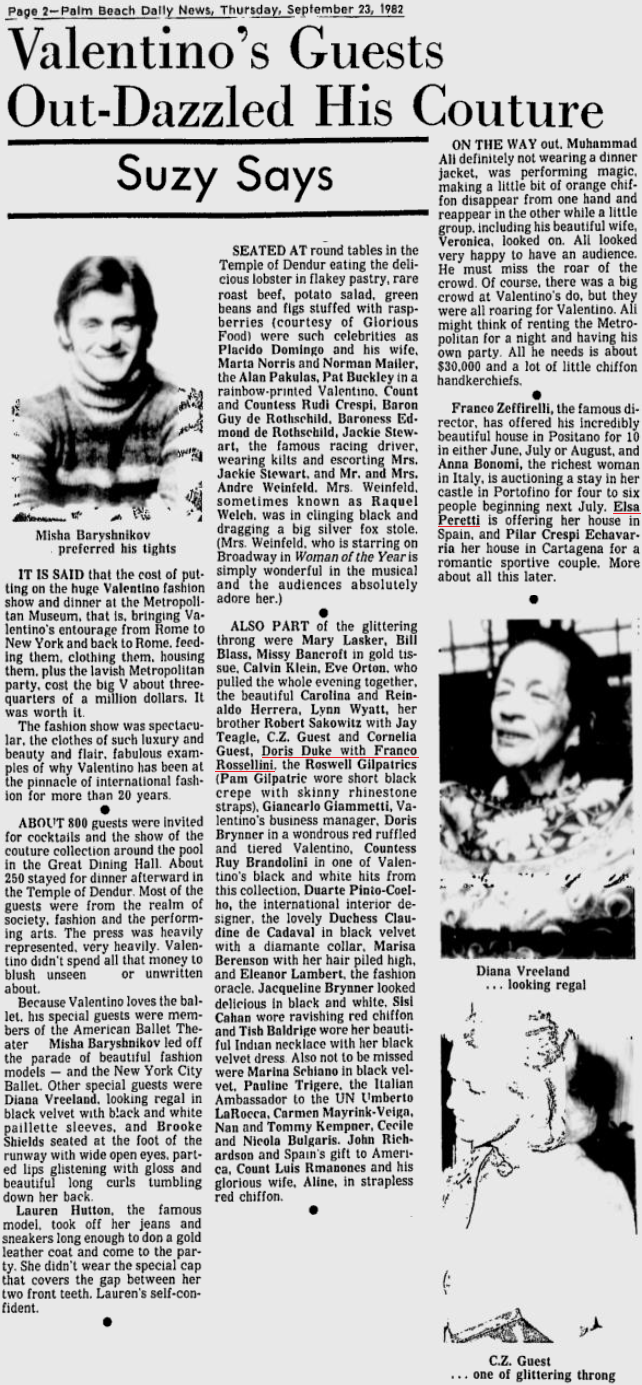
The Palm Beach [Florida] Daily News, p 2.
Click here for a photo of Franco with fashion designer Valentino Clemente Ludovico Garavani.

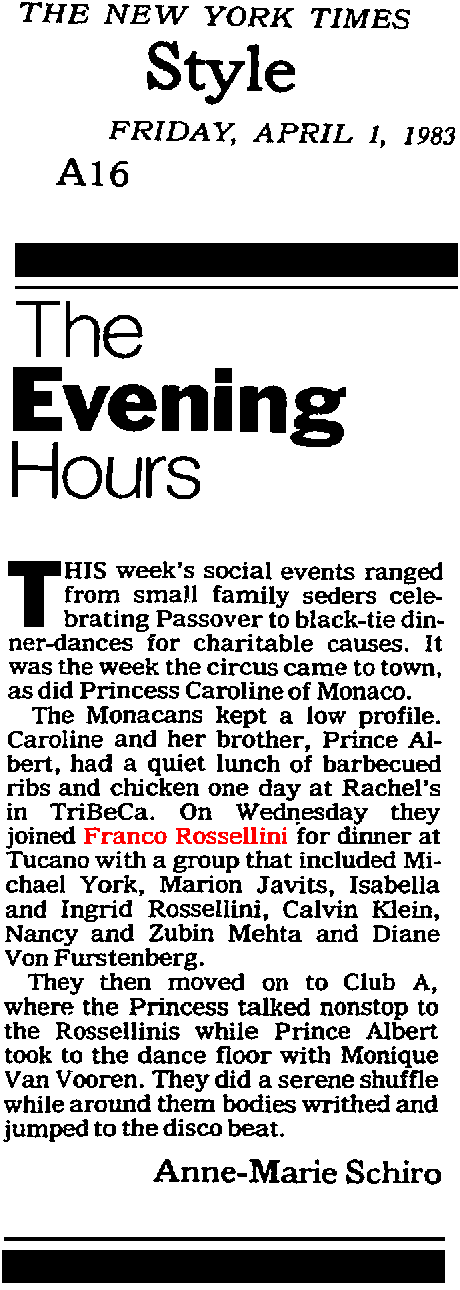

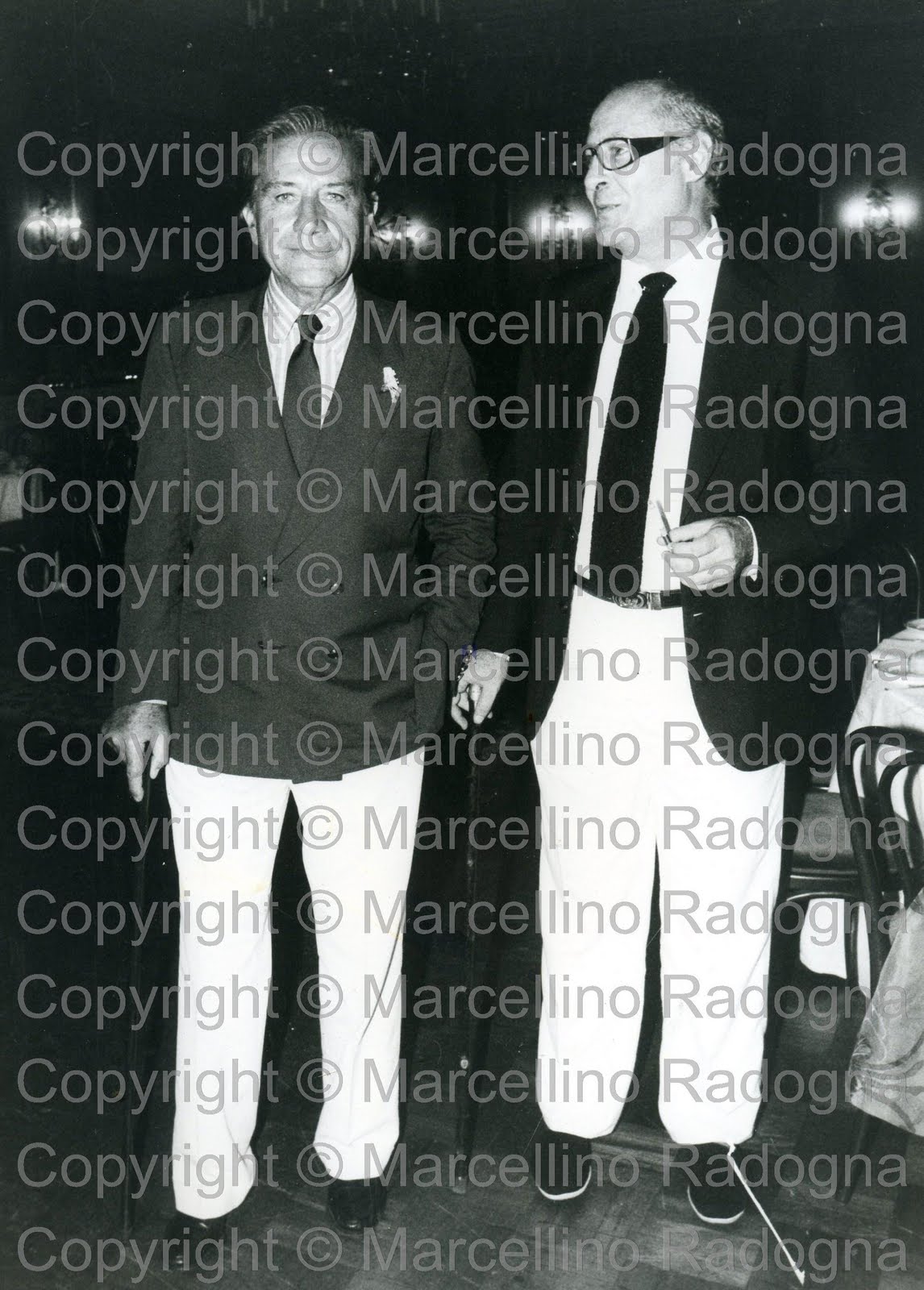
Gualtiero Jacopetti with Franco Rossellini. Photographer: Marcellino Fernando Radogna, and copyrighted by him. Rights may be licensed through Radogna’s site, marcellinofoto.it, and when I save some money I’ll license those rights.
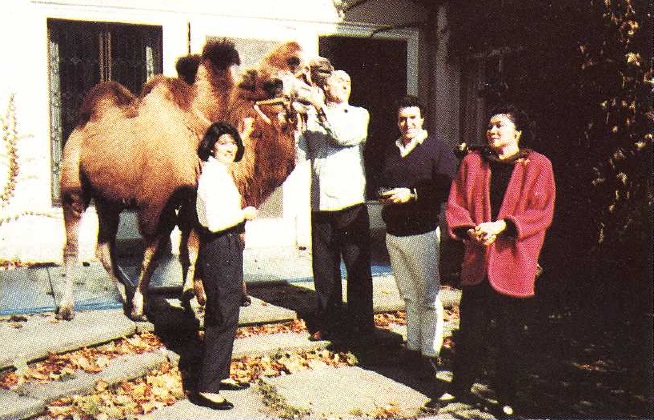
I guess this photo was snapped sometime around 1986, but I’m not sure. That’s Irene Marcos, Franco Rossellini, Enzo Natale (the only image of him I’ve ever found), and Mrs Imelda Marcos at the Duke Family Farm. This snapshot, which I presume was never copyrighted, appeared in Vanity Fair 56 no 5, May 1993, p 159.
Here’s a clipping from some newspaper (maybe Il Mattino?)
published at some time or other, written by
Ciro Cenatiempo.
If you can identify this, you’ll be my friend forever:
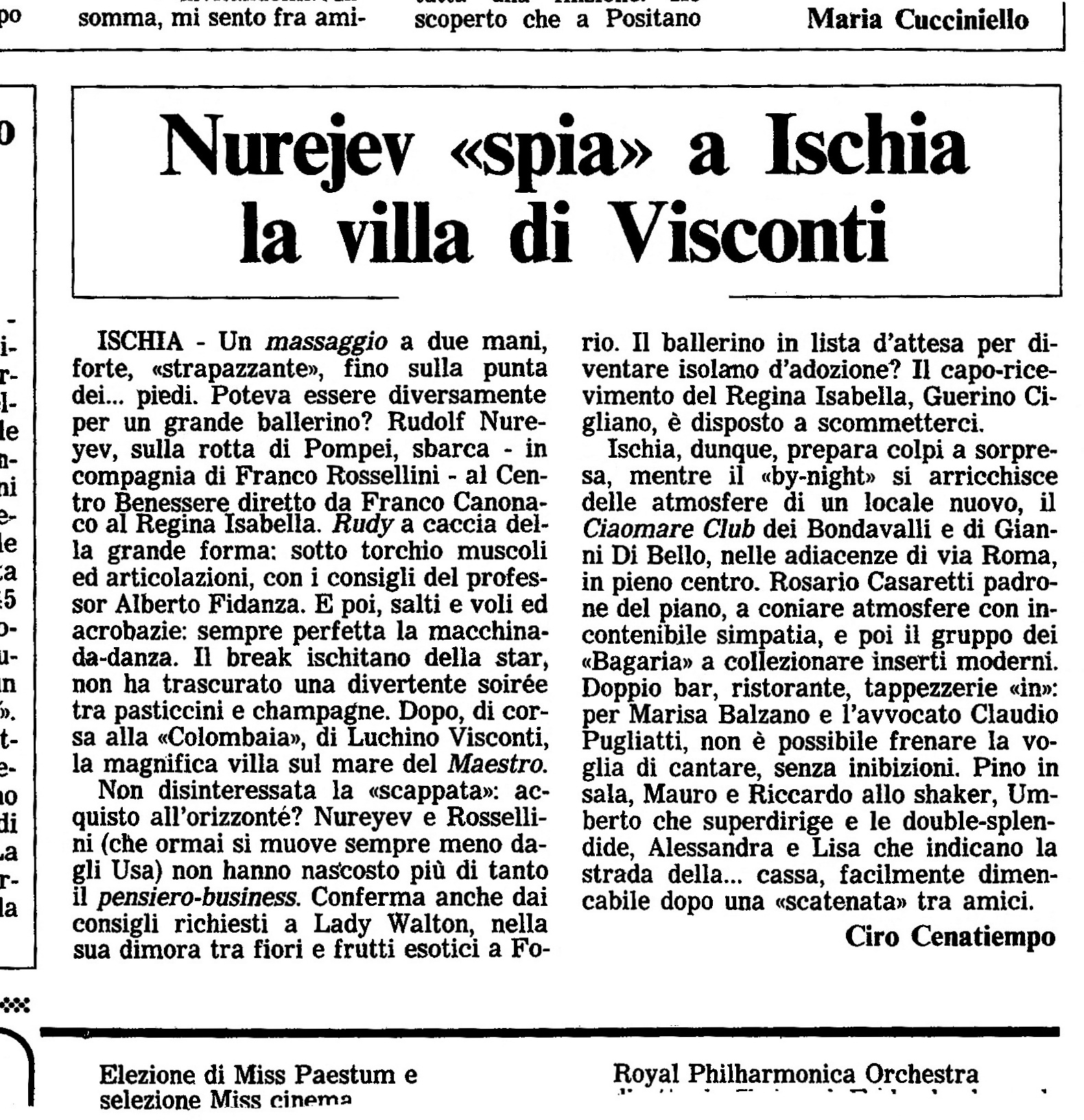
Is the implication that Visconti was still amongst us at the time? If so, that would place this no later than March 1976, but that doesn’t seem to work. The author of the above piece, Ciro Cenatiempo, was only about 15 at the time. Let’s research some more. It turns out that Nureyev purchased the Gallo Islands in 1988. This article definitely precedes that purchase, and so I would hazard a guess that it dates from circa 1987.
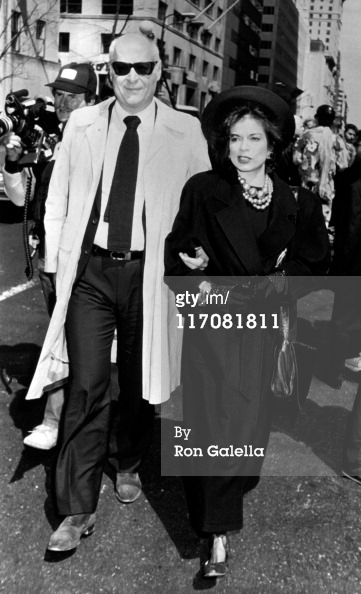
Photographer: Ron Galella. Franco Rossellini and Bianca Jagger attend Andy Warhol Funeral Service on April 1, 1987, at St. Patrick’s Cathedral in New York City. Note his weight gain. He was ill. He didn’t realize he was dying. He was broke. Worse than broke. He was under nearly unendurable stresses. Altogether, that probably explains it. When I get some money I’ll license this image. In the meantime I’ll just give it free advertising.
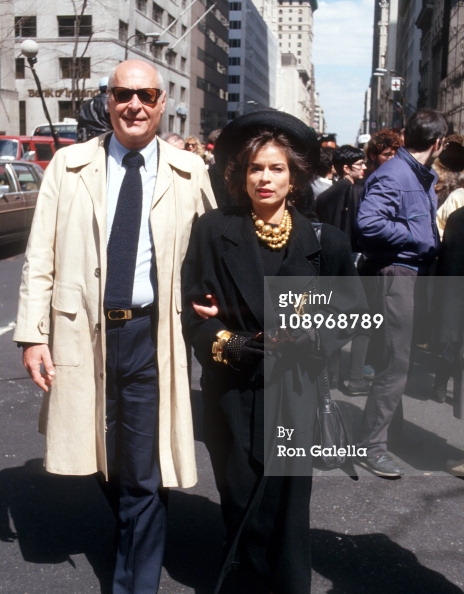
Franco Rossellini and Bianca Jagger (Photo by Ron Galella/WireImage). Memorial Service for Andy Warhol — April 1, 1987. When I get some money I’ll license this image. In the meantime I’ll just give it free advertising.
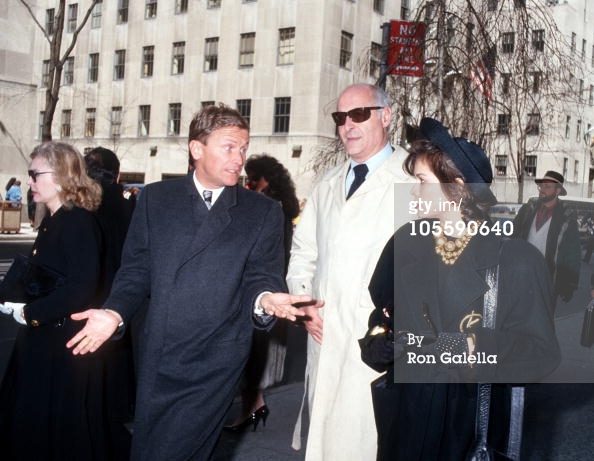
Franco Rossellini, Bianca Jagger, and guest during Memorial Service for Andy Warhol — April 1, 1987, at St. Patrick’s Cathedral in New York City, New York. (Photo by Ron Galella/WireImage). When I get some money I’ll license this image. In the meantime I’ll just give it free advertising.
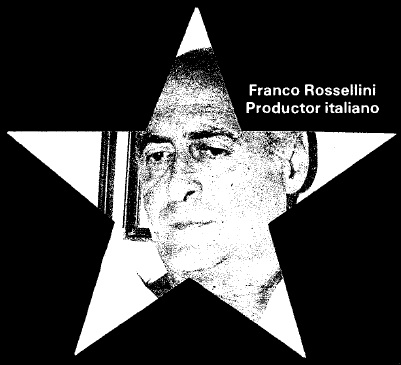
Age 51, at the Festicine ’87 in Cartagena, June 1987.
Image from the festival program.
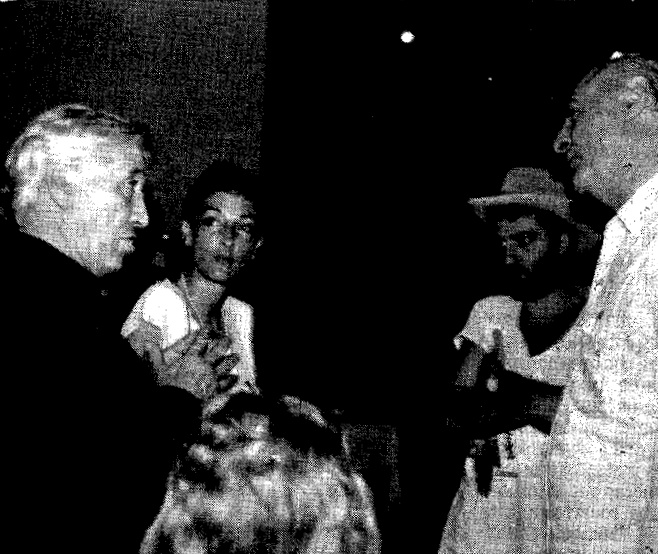
Unidentified news clipping. Caption reads (courtesy of Google Translator):
“The moment that Victór Nieto received the Italian producer Franco Rossellini, who will be a judge at the Film Festival. Accompanying him on his arrival are Margarita Pacheco, assistant juror, and Nicholas Rosso.”
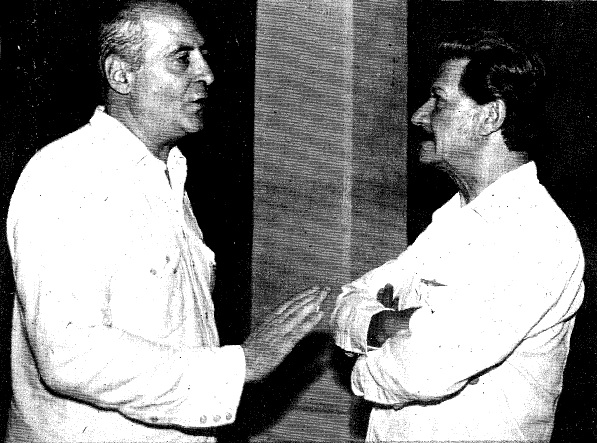
El Universál (Cartegena), 24 June 1987, p 1. The caption, courtesy of Google Translator, reads: “Juries. Franco Rossellini and Ignácio López Tarso are two of the jurors who will select the winning film in the Latin American competition at the Seventeenth Cartagena Film Festival. Rossellini is a descendant of the famous Italian director Roberto Rossellini and López Tarso is a prestigious Méxican director. (Photo — El Universál — Maruja Parra).”
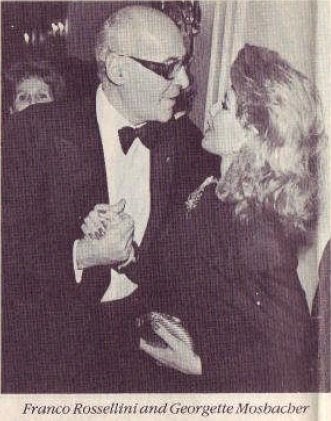
Age 51 or 52. At a New York party in 1987.
W Magazine, 30 May 1988.
Photo by George Chinsee, WWD.
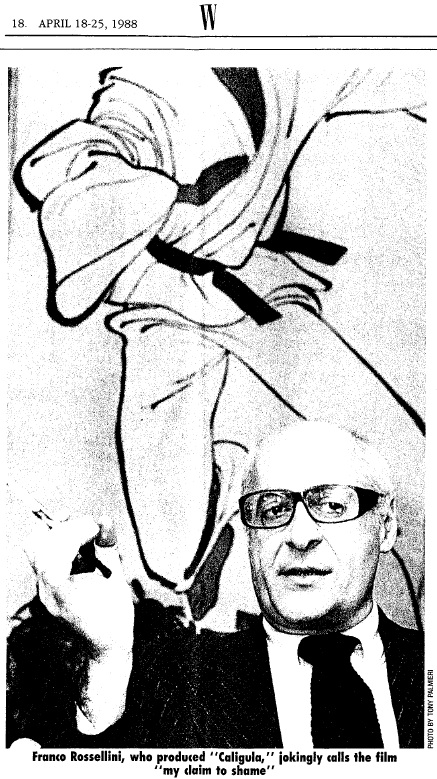
Age 52, at the Museum of Modern Art in Manhattan NY.
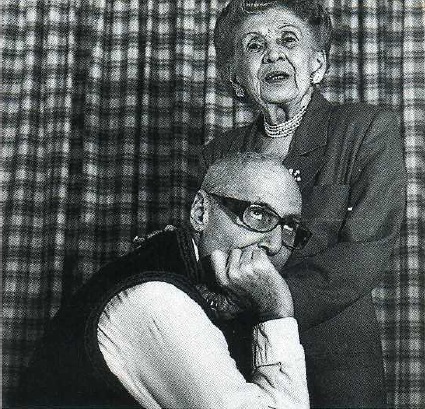
Snapshot of Franco Rossellini with his mother, Lina Pugni, taken presumably at about the same time as the above shot at MoMA, but not published until several years later. (Vanity Fair, May 1993.)
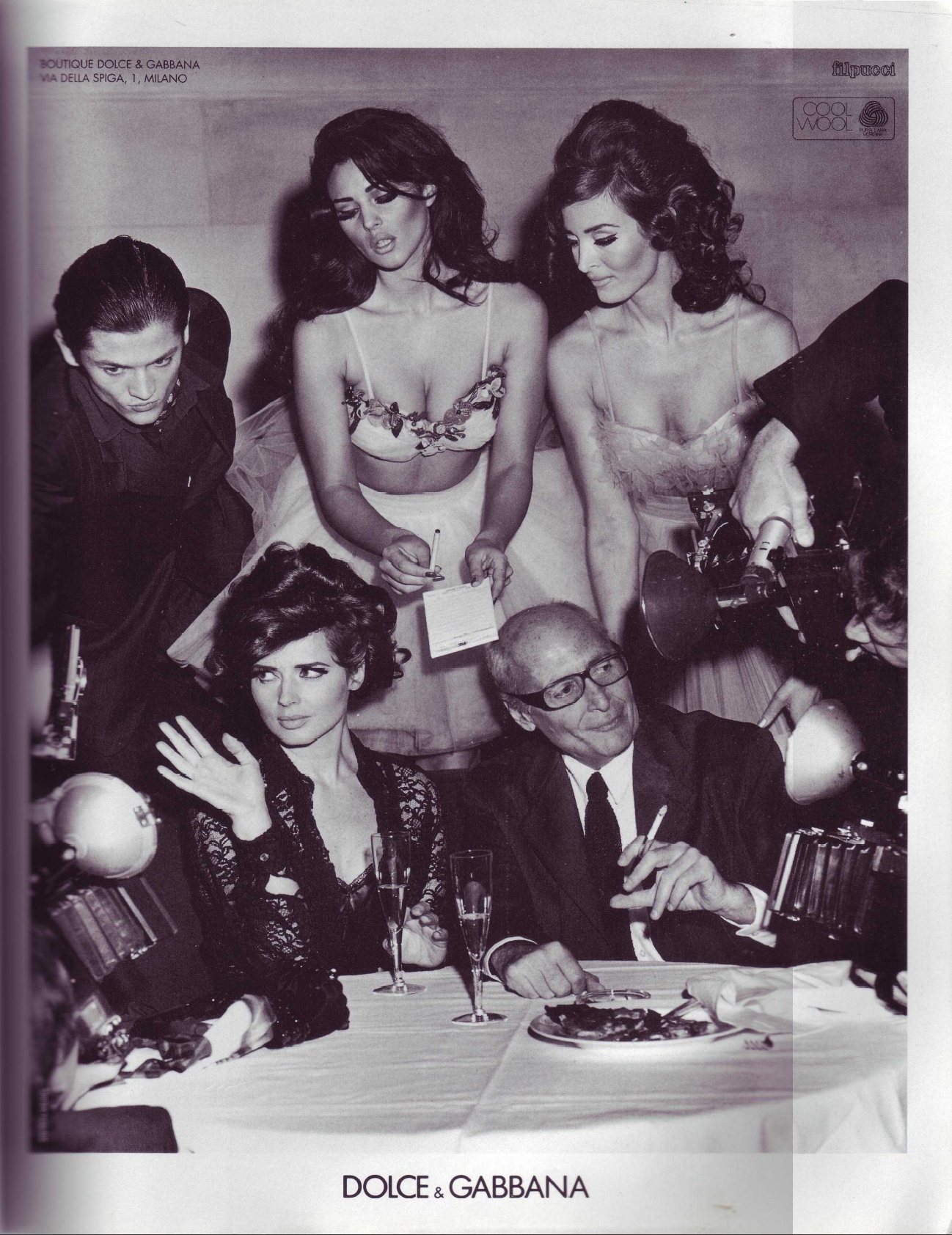
I just knew I had a scan of this advertisement somewhere, but after years of searching, and then giving up, I finally just now found it. I don’t understand the purpose of this Dolce & Gabbana advertisement, I do know that the photographer was Steven Meisel, and I do know that the image was snapped on 27 November 1991. I don’t recognize anyone in the photograph except for Franco (age 56) and cousin Isabella. Note the body language. Body language, especially as captured only in a photograph, can often be deceptive. But still, note the body language. This was published in L’Uomo Vogue, January 1992, p 53.
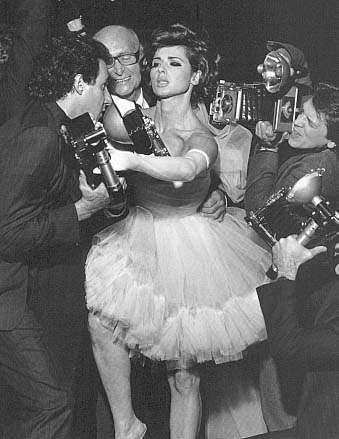
Photo by Steven Meisel. This explains why we hate the paparazzi.
A deathly ill Franco, age 56, watches over cousin Isabella
on the Dolce & Gabbana campaign in spring/summer 1992.
Again, note the body language. Of course, all the horrid distraction from those horrid paparazzi is certainly influencing the body language. Nonetheless, note the body language.
Franco Rossellini died at age 56 in New York City.
The official diagnosis was AIDS.
The immediate cause was lung cancer, the result of a lifetime of chain smoking.
The underlying cause, I am convinced,
was the devastation wrought by the catastrophic court battles around the globe with Penthouse,
which bankrupted him and left him at the mercy of the diminishing generosity of friends.
Romano Franco Rossellini,
7 November 1935 – 3 June 1992
7 November 1935 – 3 June 1992
Commentary copyright © 2012–2014 by Ranjit Sandhu.
Copyrights of reproduced materials are presently undetermined or are permitted by fair use.
Rights owners are encouraged to contact me so that I can properly license these materials. Thank you.
Copyrights of reproduced materials are presently undetermined or are permitted by fair use.
Rights owners are encouraged to contact me so that I can properly license these materials. Thank you.
